














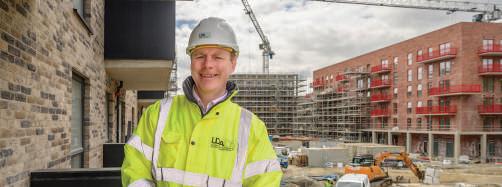










eolas Magazine is organising its 10th annual Housing Ireland conference which will examine the key challenges facing Ireland’s housing policymakers and practitioners across the sector. The conference will take place in March 2025 in Dublin.

and exhibition opportunities
There are a number of opportunities for interested organisations to become involved with this conference as sponsors or exhibitors. This is an excellent way for organisations to raise their profile with a key audience of senior decision-makers from across the housing sector in Ireland. For further information on how your organisation can benefit, contact Ciarán Galway on 01 661 3755 or email ciaran.galway@eolasmagazine.ie


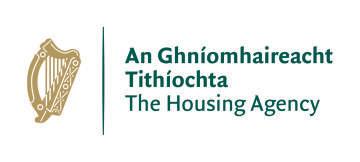
As we approach the third anniversary of the publication of Housing for All, it is worth reflecting on the need to continue prioritising the housing challenges faced by our country and on the real progress that has already been made.
The Housing Agency, together with our partners in the Department of Housing, Local Government and Heritage, local authorities, approved housing bodies, private sector, and other state agencies, have been involved in implementing programmes to increase social housing delivery, embed affordability within the overall housing market, increase the supply of apartments for sale, address social inclusion, and remediate homes affected by building defects.
Three years ago we did not have cost rental tenure in Ireland, now it is appearing in cities and towns across the country. Cost rental tenants pay rent based on the cost of constructing, financing, managing and maintaining their home, rather than the open market rent. It gives renters greater security, allows them to put down roots, and ultimately helps to create sustainable communities.
The delivery of affordable homes is ramping up. The Housing Agency assesses applications for the Affordable Housing Fund. Over 4,000 affordable purchase and cost rental homes have been approved for funding. The Affordable Purchase Scheme is providing high-quality, energy-efficient homes for first-time buyers who might otherwise be locked out of the housing market.
Meanwhile the Croí Cónaithe (Cities) Scheme, which is managed by The Housing Agency, is helping to make apartments available to home purchasers. The scheme bridges the viability gap between the cost of building apartments and their market sale price. The scheme is now gathering momentum and last year contracts were signed for the delivery of 425 apartments for owner-occupiers.
While there is progress in delivery, it is still important to take stock and analyse where improvements can be made. With this in mind and following on from the publication of the Report of The Housing Commission in May 2024, The Housing Agency has been tasked with conducting a cost and impact analysis of its recommendations. This important work is already underway.
At The Housing Agency, we see ourselves as an enabler when it comes to increasing housing supply, whether that is through the work of our technical, architectural, and design teams, carrying out funding assessments, or acquiring land for social and affordable housing through the Land Acquisition Fund.
While the focus is quite rightly on increasing supply – and must remain so – it is vital that we build with sustainability in mind.
Social housing, cost rental, affordable purchase homes and Croí Conaithe (Cities) – all are crucial elements for building sustainable communities, where people across all income levels and tenure live and work alongside each other. Sustainability, affordability and inclusivity is the prism through which planners and policymakers must approach housing. The Housing Agency wants to see a new national sustainable communities policy to ensure we are creating communities that will thrive now and into the future.
Bob Jordan Chief Executive The Housing Agency

‘What we are doing is

Less than a week after the Report of The Housing Commission was published, Minister for Housing, Local Government and Heritage, Darragh O’Brien TD – the longest serving Housing Minister since Noel Dempsey – meets with Ciarán Galway to discuss its contents, as well as the broader context of housing policy and delivery.
Ciarán Galway (CG):
Approaching three years since the launch of Housing for All, what are your most significant priorities as Minister for Housing?
Darragh O’Brien (DO’B):
To build on the progress that we have made already. When I took over as Minister, we were in a situation where there were less than 20,000 homes delivered per year and we had 10 years of very significant undersupply. In the first two years of Housing for All, we
have exceeded the target substantially and we have built 110,000 new homes at the end of Q1 this year [2024].
Our priority is to accelerate that progress, keeping a strong focus on social housing delivery. We are now building more social homes annually than we have done in over 50 years. Also important is ensuring that the firsttime buyers supports continue and accelerate. We have close to 600 firsttime buyers per week now purchasing homes and we are very pleased with
the progress, particularly in the First Home Scheme, which is a scheme many people were critical of at the start. It is really working, with around 10,000 registrations and over 5,000 approvals.
We have a full year this year [2024] to build on the progress; to exceed the target of 34,500 homes that we have set. We have accelerated our commencements and completions, and we are going in the right direction. There are still lots of challenges, but I
think by any fair assessment, really significant progress has been made.
CG: To what extent has it become more affordable to own or rent a home in this State?
DO’B: The private rental market is still a significant issue because of a lack of supply, but cost rental – statebacked affordable rents for working people – is really working. We have close to 4,000 units approved under that scheme. That tenure did not even exist until just over two years ago when I legislated for it but now, we have literally thousands of people living in cost rental homes. It is working, particularly in apartment developments, and we are seeing apartments being built with cost rental in mind.
To deal with the affordability of rent first, we need to see a further expansion of cost rental, and the stabilisation of the private rental market. In relation to house purchase, it is making sure we direct the supports that we have to the individuals and the families based on what is affordable for them. We are now seeing first-time buyers buy homes at a rate not seen since 2006.
Coupled with that though, I want to see accelerated delivery on the local authority-led affordable purchase schemes. Just short of 5,000 homes have been approved through the Local Authority Affordable Purchase Scheme.
Additionally, the Project Tosaigh scheme has been a bit of a game changer for the Land Development Agency because they will deliver 5,000 homes between now and 2026. Between this year and last year they will deliver well over 2,000 units and all of them are affordable and social.
So, it is good; it is improving, but does everyone feel that yet? No, they do not – I am meeting with people all the time – but they have much greater option now.
CG: To what extent do you think that the delivery of government’s housing strategy, via a multitude of schemes, is adequately understood by the public?
DO’B: If there was one single scheme that would resolve housing, you would bring in one scheme, but housing is complex, and it needs different responses in different areas.
The State is the biggest actor in the housing market now [investing] over is €5 billion this year [2024]. If the State was not providing that, I would not be

“The main opposition party... has yet to publish a housing plan and we are four years into Government.”
Darragh O’Brien TD, Minister for Housing, Local Government and Heritage
talking to you about housing completions in the high 30,000s. We would probably be talking about 20,000 completions. That is the level of intervention the State has had to make, and rightly so.
The level of understanding on the firsttime buyer side has greatly improved, though people do need to get under the bonnet and look at the schemes. The First Homes Scheme is very easily understandable, and we are actually approving double the rate of what we were in Q4 2023 in Q1 2024.
There is greater awareness of the schemes that are there through affordablehomes.ie – one portal for all affordable homes makes a big difference – and we have got to keep getting the message out there. It is not one and done. The public awareness still needs to improve.
CG: What is your assessment of the Report of The Housing Commission?
DO’B: Firstly, I set up The Housing Commission. It was a Programme for Government commitment because I wanted an independent view of what housing would look like in 10-, 15-, to 20-years’ time.
Across the 83 recommendations, about 70 per cent of them are either done or we are doing. Take the one we have just discussed on affordable housing; John O’Connor has said very clearly, as Chair of the Commission, that we should continue the work that government is doing on affordable housing, consistency is what is important, and we should “stick with it”.
Now, what I would say in relation to Deputy [Eoin] Ó Broin is that that is in stark contrast to the main opposition party [Sinn Féin], which has yet to publish a housing plan and we are four years into Government.
I have written to Eoin [Ó Broin] on a couple of occasions asking him to provide me with his housing plan – and
“I would contend that what we are doing is radical.”
if he will not do that – to provide the independent analysis of what impact the removal of the First Home Scheme, the Help to Buy scheme, and the Vacant Property Refurbishment Grant –all of which he is opposed to – would have on the ability of people to buy homes, as well as what it would do to housing delivery and building homes. The development sector has said it would be catastrophic. The people I am most concerned about are the ones who are buying homes.
They [Sinn Féin] have not produced a housing plan. Now, he [Eoin Ó Broin] told the Sunday Independent 16 months ago that he was just about to publish it and he has not. People see Housing for All, and they can criticise it, they can support it – and many do. People know what money we are putting behind it. On the other side, you have Eoin standing on the ditch opposing it all but not saying what he would do.
I have the responsibility to actually do things – not just to talk about them. People will judge what I have done based on the results that we are getting. But I do think it is important that he [Ó Broin] publishes a plan and allows it to be open to independent analysis. But he will not.
CG: You mentioned [Chair of The Housing Commission] John O’Connor’s comments regarding consistency. How do you balance that message with The Housing Commission’s call for a “radical strategic reset of housing policy”?
DO’B: If you talk to The Housing Commissioners themselves, they were looking forward. To be fair to the Commission, they spent the guts of three years compiling the report and it deserves more than three weeks of consideration. I have said I will examine their recommendations in the report in detail. I have read it and gone through it – we will see what we can proceed with.
Some areas that I have said already that, at first glance, I do not see us proceeding with include the setting up of another layer of housing delivery in the form of a Housing Delivery Oversight Executive that will sit above all departments and agencies. At first look, that is not something that I will support. I think it will add another layer to housing delivery, but I appreciate that you have a commission from very diverse backgrounds that have put a report in on many different things that have not got coverage yet.
If you look at the social housing and affordable housing side, they recommend that all new schemes should have a 20 per cent social and affordable allocation. I have actually done that already. I legislated for that two years ago. I reversed the changes that [then-Housing minister] Deputy Alan Kelly made in reducing the Part V provision from 20 to 10 per cent. I reversed it back to 20 and actually went further than that and said that in the LDA’s delivery in Cork and Dublin has to be 100 per cent social and affordable.
I do think that we need to always be radical in our thinking and I would agree with The Housing Commission on that. I do not see it as an endorsement of pure radicalism for radicalism’s sake.
We have talked about the First Home Scheme – it never existed before. It brought about such commentary because it was a radical step and a radical step that has worked and is working. Cost rental did not exist – it is in place now. The LDA had not built a house when I came in [to the Department] and had no money and no legislation. It is now delivering hundreds [of homes]; well over 1,000 this year. I would contend that what we are doing is radical.
We still have lots of challenges, so I am not going to give the impression that everything is sorted, it certainly is not. We were never going to sort it in three
years of Housing for All, but what we have done is built a real foundation to move on from. Do we need to do more? Yes.
I got the report on the 8 May, but in fairness, when part of the report was leaked, it was only fair that people saw the report in the round. I still need to consider it. We have not fully assessed what we will do with each recommendation, and it deserves that recognition.
CG: Moving onto the first revision of the National Planning Framework (NPF), you previously indicated that it would be published by Q1 2024, now it has moved to autumn 2024. What is the revision’s current status?
DO’B: We are actually going to put it out in draft and there is a reason for that – the census [2022] was late because of Covid. We need to have all the census data because that feeds into the ESRI report and the NPF review and we need to look at both in the round. I expect the draft NPF to be published in June [2024] and we will put it out for public consultation – which is right and proper – probably for four weeks – if it is ready. I think it will be ready in June, and I want it implemented in September.
CG: What are your thoughts on how that is going to inform the coming update of Housing for All?
DO’B: It feeds into the work that the Commission has been doing, the ESRI is doing – which is not concluded yet –and the NPF review. Since Housing for All was published, targets have never been the ceiling, they have been the floor. So, while some of the commentariat and opposition are talking about targets on housing, we are getting on with building the houses. We exceeded the [overall] target in 2023, we exceeded it the year before, and we intend to exceed it this year.
It does not stop the work that we are doing, but it is important that we reset based on the increasing population and with population trends. The NPF will underpin that. More than likely, we will be asking local authorities to revisit their development plans to zone more appropriate lands for additional housing delivery. Based on an end-ofSeptember timeframe, I will have written to all the local authorities to let them know that.
CG: It is fair to say momentum is building, with Housing for All exceeding its overall delivery targets, but why has it struggled to meet new

build social delivery targets for two years consecutively?
DO’B: If you look at last year [2023], we built over 8,100 new build social homes, up from about 5,000 the year before, so it was a big jump from the previous target. It did not hit the new build target of 9,100 and one of the reasons for that, was the issues we had post-outbreak of the war in Ukraine on supply chain and on increased costs.
We had to work very hard to make sure our projects continued, and [thenFinance Minister] Michael McGrath did a really good piece of work in relation to the Inflation/Supply Chain Delay Cooperation Framework Agreement. We had a lot of schemes stalled because one, they could not get materials, and two, the costs had gone through the roof. Some want to just dismiss that and pretend that it did not happen.
CG: The Government has agreed to extend the RPZ rent caps to 2025. Why did it take that decision?
DO’B: The RPZs had a sunset clause. I inherited the RPZs. They had a rental increase ceiling of 4 per cent and when I came in [as Minister], I changed it to 2 per cent.
The reason I extended the RPZs for one year is because we are in the middle of the Review of the Private Residential Rental Sector. They [RPZs] were due to end at the end of this year [2024]. I did not want a cliff edge, so we put it onto the end of 2025 to give certainty for the renter.
The recommendations from The Housing Commission are interesting. I know some commentators gave them a guarded welcome and said they would be complicated and there is a complexity in relation to tagging rents in different areas. It is something that deserves consideration and I am going to be asking for it to be included in the Review of the Private Residential Rental Sector because it will be the next government who will make the decisions around what replaces RPZs.
But what I really did not want was RPZs to just end this year and then anyone could set rents at any level. There is no way that I wanted that. I announced it in early May so that tenants and landlords are abundantly clear that the status quo remains until 2025. That is the right way to do it.
CG: When will the Review of the Private Residential Rental Sector be published?
DO’B: I am going to feed the Commission’s recommendation into it [the review]. The Commission has obviously put an awful lot of thought into how they would look at pricing in the rental market and setting rents. It will be Q3 this year.
CG: Would you like to continue as Housing Minister, if it is possible, in the next government?
DO’B: I have always said I would love to. It is busy and it is challenging but I love it and if I were fortunate enough to
be re-elected in my own area of Dublin Fingal East as it is now, and I was asked to serve as Housing Minister again, I would be delighted.
CG: To what extent will the coming general election be won or lost on housing policy?
DO’B: I, my party, and this government will be able to point to real delivery. I have never said that we will have every issue in housing resolved and it will not be. There will still be people who have housing needs that need to be met but what we will be able to show is a plan that we have published, we are implementing it, and it is having a positive effect.
Housing will be central, I would imagine, amongst a number of matters because it is very important for individuals who are on social housing lists, for people who are working and want to buy for their families, and for those who do not have a home. I am looking forward to those debates.
I am also looking forward to when any alternative [plan] will be published, so that we can actually critique and look at the alternatives. If any party is of the view that they believe that they should be elected and form the next government, I think at the very least they should publish a housing plan and let people have a look at what they are going to do.
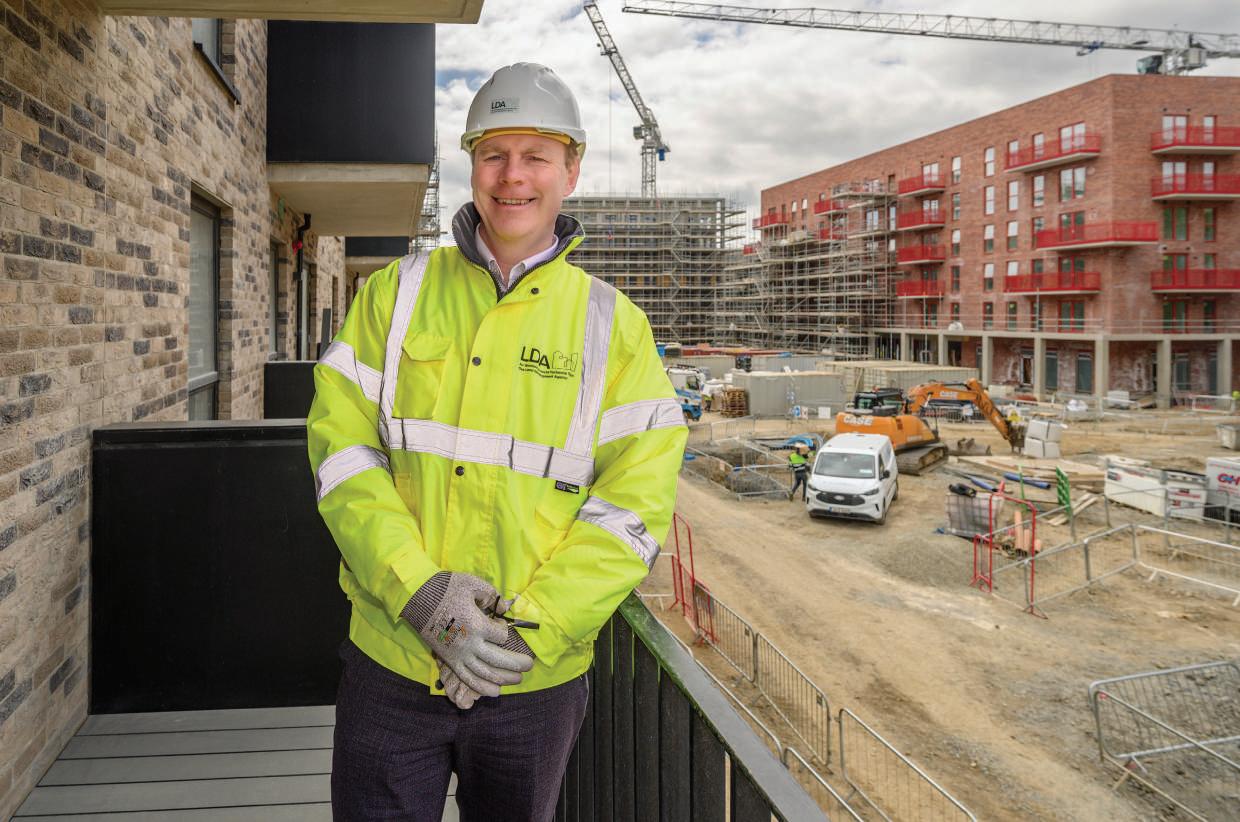
As the first media on site at the State’s largest public housing scheme since ground was broken in November 2022, Housing Ireland Magazine gets a sense of the scale of the Land Development Agency’s (LDA) flagship project with Dún Laoghaire-Rathdown County Council at Shanganagh, south Dublin, and talks partnership, direct delivery, Project Tosaigh, and land acquisition with CEO, John Coleman.
As the commercial state-sponsored body tasked with delivering affordable housing, the LDA plans to deliver around 18,000 homes by in the coming years –over 10,000 on state-owned or acquired land, and over 8,000 via Project Tosaigh (a catalyst for unviable housebuilder-led projects).
Upon the LDA’s establishment, 40 per cent of housing delivered on stateowned land was intended for social and affordable homes, with the balance contributing to new supply to meet wider demands in private rental and purchase. However, when Part 9 of the Land Development Agency Act came into effect from 1 January 2023, its affordability requirement increased the minimum percentage of affordable and social units delivered in residential
developments on relevant public land to 100 per cent in Dublin and Cork, and 70 per cent in other urban areas.
“In this context, the LDA was agile enough to evolve amid a fundamental shift in its financial and capital requirements – both of which have grown exponentially,” Coleman observes.
Now, the LDA’s primary focus is “getting as many direct delivery projects up and running as possible” on sites sourced from state bodies – primarily local authorities – alongside the acquisition of private land.
From a standing start, whereby it had no access to architects or design teams and no confirmed access to sites, the
LDA now has planning approval for over 5,000 homes on directly controlled sites and a delivery pipeline of over 10,000 homes. As such, the direct delivery trajectory of the LDA is roughly equivalent to that of the largest PLC housebuilders in the State.
“We are now in a situation whereby we will be at construction phase on six or seven direct delivery sites by the end of 2024,” Coleman outlines.
These sites include:
• the former site of St Kevin’s Hospital, Cork city;
• Shanganagh, County Dublin;
• Castlelands, Balbriggan, County Dublin;
• Hacketstown, Skerries, County Dublin;
• Devoy Barracks, Nass, County Kildare; and
• St Teresa’s Gardens, Dublin 8.
Later in 2024, the LDA will reach a significant milestone on its direct delivery journey when the first homes are delivered at its nine-hectare site in Shanganagh, Shankill, Dublin. In collaboration with Dún LaoghaireRathdown County Council, construction began at Shanganagh in November 2022.
Totalling almost 600 homes, Shanganagh is currently the largest public housing scheme in the State, as well as the largest cost rental scheme.
From an LDA perspective, it is a flagship project which demonstrates how the agency can work with and provide services to local authorities.
All 597 homes are earmarked for social and affordable housing, with 306 intended to become cost rental units. A further 200 will be social housing units and 91 will be made available for affordable purchase.
Regularly scrutinising its costs, the LDA CEO has concluded that there is no panacea to reducing costs. Rather, Coleman indicates, it requires “a layering of 0.25 per cent savings here and 0.5 per cent savings there”.
As such, in addition to seeking value for money through land acquisitions, the LDA has established a standardised apartment design, published in the form of an apartment typology booklet which it provides to all its design teams.
“Fundamentally, the fabric of the building should be the same from one LDA development to the next. However, that does mean that all apartments must look the same – they can have different skins, finishes, and facades.
“By standardising the measurements as much as possible, the supply chain can better understand our product and meet those requirements. It has been designed in collaboration with stakeholders, such as developers, to remove the inefficiencies which can exist in a site-by-site approach to design,” the LDA CEO explains.
John Coleman, CEO, Land Development Agency
When the 597 homes at Shanganagh are completed – and more than 1,500 people live there – Coleman believes that it will emerge as a distinct and sustainable community.
“It has good facilities on site, including neighbourhood retail, a gym, playgrounds, and an impressive crèche,” he observes, adding: “It is also very well connected to the broader community in Shankill, with excellent public transport links set to be delivered through a new BusConnects route and the new Woodbrook DART station between Shankill and Bray.”
Shanganagh is also one of the largest passive housing schemes in Europe –and the largest in Ireland – with each of its units heated either by air source heat pumps or a district heating system. While previously the Passivhaus standard for energy efficiency came under intense scrutiny, mainly relating to cost, the LDA invested significant effort into understanding it.
“Through examination of the procurement process of the contractor, we determined the cost of delivering to Passivhaus standard mainly hinges on quality, craftsmanship, and airtightness. Not only are we more comfortable with Passivhaus, but we also believe that the wider industry has developed a better understanding through the LDA’s Shanganagh project.
“In fact, we have adopted an opensource approach towards other contractors and developers who want to learn more about Passivhaus and its effectiveness. This means letting them on site to examine the work that we have undertaken. Shanganagh has effectively been a catalytic project in that regard, with the LDA assuming a leadership role.”
Designed to facilitate the completion of stalled or unviable housing projects and make the completed homes available for either cost rental or affordable purchase, the second focus of the LDA is to “increase, expand, and maintain the momentum that we have on Project Tosaigh”.
Through Project Tosaigh, the LDA has already delivered, contracted, or commercially agreed a total of 2,800 homes. “Subject to funding and ongoing support from government, the next phase should deliver around 5,000 homes,” Coleman says, adding: “Our ambition is that by the end of 2028, 8,000 homes will be delivered through the Project Tosaigh framework.”
In January 2024, the LDA announced the release of over 600 cost rental homes across four Project Tosaigh schemes – Barnwell Point in Dublin 15; The Quarter in Dublin 24; Dun Óir in Dublin 18; and Harpur Lane, Leixlip, County Kildare – alongside several affordable purchase Project Tosaigh developments, including Clonmore, Mallow, County Cork; Summerfields, Kilbarry, County Waterford; Wilkinsons Brook, Hollystown, Dublin 15; and Baker Hall, Navan, County Meath.
“In the beginning, we never envisaged that we would be accelerating delivery through housebuilder partnerships,” Coleman acknowledges.
In June 2024, the LDA finalised the establishment of a four-year framework panel which, Coleman believes, “will be a major step forward in facilitating the expansion of the Project Tosaigh programme”.
With a stated purpose of accelerating
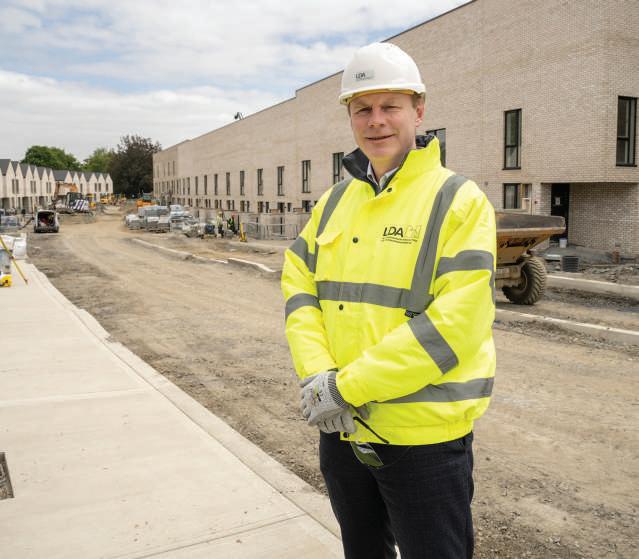
“We target the acquisition of large-scale sites not because they are easy, but because that is where the intervention is required.”

challenges, including via a forward funding mechanism to facilitate staged payments to housebuilders.
Marking a step change in the LDA’s delivery of homes, under the second phase of Project Tosaigh, the agency will finance housing projects throughout the construction phase as housebuilders achieve development milestones. This is set to consolidate collaboration between the LDA and housebuilders.
“With the LDA more involved in design and financing, the creation of the panel is intended to expediate delivery through incentivisation while also ensuring value for money for the State.
“In providing staged payments, the LDA can ensure greater certainty for housebuilders resulting in quicker transactions and contracting. This reduces cost by avoiding lenders’ high interest rates, and ultimately unlocks better value for the LDA,” Coleman explains.
When the LDA was established, its relationship with the local authorities was open to misinterpretation. “The reality,” Coleman notes, “is that the LDA is totally complementary to local authorities and exists to support them to achieve their housing delivery objectives.
“Our role, as embedded in the Land Development Agency Act 2021, is to provide services to local authorities. That is what we are doing here at Shanganagh where we have provided Dún Laoghaire-Rathdown County Council with design services and project management services, as well as having financed construction. We are set to operate a portion of the units as cost rental homes upon completion. Shanganagh is an archetype of what we can achieve in partnership with the local authorities.”
Alongside affordable housing delivery, the LDA’s strategic remit includes strategic land assembly. Having identified a need and an opportunity to purchase private land for the direct delivery of affordable housing, the LDA launched its land acquisition programme and sought expressions of interest from landowners in September 2023.
Initially the focus of the acquisition programme is the delivery of highdensity housing on large-scale sites with existing planning permission for 200 homes and above in Dublin, Cork, Limerick, Galway, and Waterford.
The three criteria that must be met for the LDA to enter material discussions with vendors are:
1. location;
2. scale; and
3. value.
In total, the LDA received 60 submissions from landowners, several of which were rejected because it was assessed that “the value expectations were unrealistic”; value being determined by site costs and build costs versus the projected price from the sale of the finished units.
“Given that the State is the only buyer of apartments in particular, through various guises, including the LDA, approved housing bodies (AHBs), and local authorities, we wanted to impress our focus on value in relation to land. We want to ensure that the end unit price is kept as low as possible,” Coleman says.
Suggesting that the LDA is one of the few organisations that can deliver on large-scale sites, given the timelines involved, he insists that the agency does not want to compete with private developers.
“We take a pragmatic view. If a site is going to be delivered by a private developer, meaning the homes will be built but the LDA will not have to build or finance them, that is a positive outcome. We want to complement the activity of private developers,” he emphasises.
Instead, the LDA’s role is to intervene in scenarios where delivery is more difficult. “We target the acquisition of large-scale sites not because they are easy, but because that is where the intervention is required. For instance, no one else in the market could have taken on the Clongriffin site and now the LDA is tendering for the first phase of 408 homes.”
Despite its scale, Shanganagh is not the largest scheme that the LDA is working on. As the first land acquisition that the agency proceeded with, the 13.2-hectare site located adjacent to the Clongriffin railway station in Dublin 13 has the potential to deliver a total of 2,300 homes.
“By virtue of the scale of the site, we agreed a price equating to around €19,000 per unit,” the LDA CEO states. “This represents good value, especially in the context where an apartment can cost over €400,000 to deliver.”
However, Coleman agrees with the assessment of the LDA’s Head of Property, Phelim O’Neill, that “some land pricing is unrealistic”. “As realism sets into the market, that is changing and must change further. Hopefully we
will have more opportunities to announce further deals in the coming months,” he remarks.
Discussing the challenges facing the LDA’s delivery of affordable housing, Coleman identifies three:
1. access to land;
2. planning; and
3. cost.
Firstly, while the LDA is tasked with delivering affordable housing on state land, it has no powers to compel state bodies to provide it with that land. While acknowledging the nuances of why state bodies might hold land, Coleman suggests that a balance must be struck.
“There is a constant tension between current use and the significant housing need that we have. It is no coincidence that the LDA has entered the private market where we see value. Consider how long it may take us to extract a state-owned site relative to acquiring a site such as Clongriffin.
“Enhanced powers, either for the LDA or the Government itself, to compel the release of land would assist in unlocking opportunities to deliver affordable housing on state lands,” he asserts.
Secondly, while planning remains a challenge, Coleman observes some improvement.
Referencing the ongoing judicial review which has subsequently delayed the delivery of 852 affordable homes on the former site of the Central Mental Hospital in Dundrum, the LDA CEO is keenly anticipating the enactment of the Planning and Development Bill 2023, which, among other objectives, is intended to “provide for proper planning and sustainable development in the interests of the common good”.
“The LDA believes that the forthcoming legislation is a very positive step” Coleman comments, adding: “The new legislation should provide clarity around timeframes for planning, rebalancing scenarios in which administrative mistakes can result in planning applications reverting to the beginning of the process as opposed to simply being remedied.
“We are optimistic that the enactment of the Bill will have a materially positive

effect in relation to the overall planning ecosystem. We are very supportive of the Government’s efforts.”
Finally, the cost of housing delivery in Ireland remains high. For instance, the average cost of delivering a new threebed semidetached house ranges from €354,000 in the northwest to €461,000 in the Greater Dublin Area. Similarly, over the total deliver cost for a two-bed medium-rise apartment is more than €400,000.
In this context, delivering truly affordable rent for the LDA’s target market is a challenge. While suggesting that “government has responded well through the delivery of the Secure Tenancy Affordable Rental investment scheme (STAR)”, Coleman believes that costs will continue to be challenge and “there is no sign of them abating, even amid reducing inflation levels”.
Reflecting on these challenges, the LDA chief characterises them as “obstacles that we must be overcome”. “Nothing
worthwhile is easy to deliver and we will continue with a positive attitude to overcome these obstacles through collaboration, partnership, engagement, and dialogue,” he adds.
In summarising, Coleman outlines three major ambitions for the LDA:
1. achieving delivery at scale;
2. proving the cost rental tenure model; and
3. refining the LDA’s finance model.
“Firstly, we aim to build a pipeline of such scale that we can produce over 2,000 homes on direct delivery sites per annum. Secondly, cost rental has the potential to be one of the main housing tenures in this state and to prove that model it needs to get to scale.
“Thirdly, while the LDA will always be reliant on government, broadening our finance model over time through more diverse funding options would make us more resilient and counter cyclical,” he concludes.
Living in Dundrum, south Dublin, with a young family – including three children in national school – John Coleman is a keen cyclist. Having completed L’Étape du Tour de France in 2022 and the Marmotte Granfondo Alpes in 2023, he is in training to repeat the latter in 2024.
“Generally in life, I perform better under pressure. Facing a big challenge drives me on to achieve something that I might not otherwise achieve. So, I sign up to challenging cycling events every summer and that forces me onto the bike through the winter,” he reflects.

Decades of housing interventions have not resolved ‘fundamentally systemic failures’
Only
a “radical strategic reset of housing policy” will address a long-standing failure to adequately recognise housing as a critical social and economic priority, the Report of The Housing Commission has asserted.
Setting out its recommendation that housing must be “a unique national priority”, The Housing Commission assesses that confidence in housing has been undermined by a lack of consistency and identified “ineffective decision-making and reactive policymaking” an arena where “risk aversion dominates”.
The report adds that coupled with external influences impacting housing dynamics, these challenges contribute to volatility in supply, which undermines affordability in the housing system.
The result is that Ireland now has one of the highest levels of public expenditure for housing in Europe, yet one of the poorest outcomes.
Amongst its starkest findings, The Housing Commission estimates a housing deficit of between

212,500 and 256,000 homes, based on the Census 2022 figures. Major recommendations included reform of key supports such as the Housing Assistance Payment (HAP) and the Rental Accommodation Scheme (RAS), the establishment of a Housing Delivery Oversight Executive to identify and address delivery blockages, and a Social Housing Act, which would underpin a recommended target of 20 per cent of the national housing stock comprising of social and cost rental homes.
The Housing Commission was established in December 2021 by the Minister for Housing, Local Government and Heritage, Darragh O’Brien TD, as an independent body, with a brief to examine aspects of housing provision, such as tenure, standards, sustainability, and quality of life challenges.





After over two years of deliberation, the report containing 83 recommendations and hundreds of suggested actions was received by the Minister on 8 May 2024. Also included were two reports in relation to the wording of a referendum on housing.
Following publication of the report, the Minister will give consideration to the recommendations before bringing policy considerations to government. The report is expected to inform the forthcoming Housing for All action plan, and the revised targets due to be announced under the revised National Planning Framework.
Speaking to the Housing Ireland Magazine shortly after the report was made public, Housing Minister Darragh O’Brien TD says that around 70 per cent of the 83 recommendations were “either done or we are doing”, and outlined his belief that the report signalled that the Government should “stick with” the work it is doing on affordable housing.
Asked about The Housing Commission’s call for a “radical strategic reset of housing policy”, he said: “I do think that we need to always be radical in our thinking and I would agree with The Housing Commission on that. I do not see it as an endorsement of pure radicalism for radicalism’s sake.”
The Minister stressed that he would give the report full consideration before proceeding, but suggested that following an initial reading, there were some recommendations in the report that he is reluctant to implement.
Pointing to the recommendation to establish a Housing Delivery Oversight Executive as an example, he said he opposed the creation of “another layer to housing delivery”.
In contrast to the Minister’s perspective that Housing for All has laid a foundation for steady progress, the Commission’s report calls for
“emergency action” to deal with Ireland’s housing deficit as an overarching theme of the report.
Central to the recommendations is the need to plan for the right type of housing to meet changing population demands. It recommends basing housing policy on an assessment of the housing required for a well-functioning society and stresses that this should not be conflated with market demand or construction sector capacity.
“Too often analysis and projections of housing requirements are carried out based on making housing requirements equate to housing supply targets,” it says, and points to reform and reviews of the Housing Supply Targets and the Housing Need and Demand Assessment (HDNA) frameworks, to ensure that they fully account for key parameters underpinning housing requirements.
Underpinning an overarching recommendation for a detailed plan for the delivery of the right type of housing in the right locations and with the necessary supporting infrastructure are suggested actions that would alter the approach being taken to planning, construction, the rental market, financing, and infrastructure delivery.
On delivery, the Commission recommends enhancing the powers and resources of local authorities, in particular, it calls for local authorities to develop ‘land activation units’ “to facilitate and promote strategic development of public and private housing”. Meanwhile, also proposed is a “whole of government” programme of infrastructure delivery aligned with strategic ‘housing delivery zones’.
In addition to supplying housing in the right locations, the Commission says it is critically important to ensure that housing delivery “reflects a more appropriate distribution of household size”. To this end, it says there is a need within the upcoming revision of the National Planning Framework to consider the
• The Minister will request government approval to submit the referendum reports to the Joint Oireachtas Committee on Housing, Local Government and Heritage to facilitate cross-government consideration (immediately).
• The Housing Agency will be requested to review the recommendations and actions in The Housing Commission Report and provide costings and timelines, which are not included in the report (immediately).
• Peer reviewed, evidenced-based ESRI research and modelling on population projections and long-term housing demand, the primary input to the new housing targets, will be finalised and published (June 2024).
• Draft First Revision of the National Planning Framework published (June 2024).
• The Housing Agency provides its considerations of Commission recommendations and actions to the Minister.
• Revision to the National Planning Framework, update to Housing for All, and revised housing targets published (September 2024).
• Inter-departmental group will be established to consider The Housing Commission proposals on a potential referendum on housing – the group will include relevant Government departments and the Office of the Attorney General (timeframe to be confirmed).
• The Minister will bring policy proposals to government on a potential referendum on housing (timeframe to be confirmed).
increased prevalence of urban sprawl around Dublin.
Where previously the National Planning Framework focused on regional growth and expanding the capacity of the cities outside of Dublin, the Commission says that a scenario which sees these cities grow at a greater rate than the capital in the coming decades is at odds with the disproportionate foreign capital and job creation taking place.
The Commission outlines that by placing constraints on Dublin’s growth, the NPF has “driven patterns of development and internal migration that have resulted in urban sprawl, traffic congestion, and long commute times for workers”. It recommends that regional growth policy in housing should “facilitate the growth of Dublin city and the broader metropolitan area”.
Advocating for a targeted increase in the proportion of social and cost rental housing in the State to 20 per cent of the national stock, the Commission’s report focuses heavily on the importance of long-term financial commitments to the State.

A key characteristic of a wellfunctioning housing system, it outlines, is that: “The State must provide a stable funding anchor that is constant in nature, but this must also be complemented by diverse international sources, to finance the increase in housing supply”.
Insisting that the State should provide as much certainty to the market as possible, the Commission invites analysis to be carried out on the viability and effectiveness of a specific private savings fund, which would be used to assist in the funding of housing.
Interestingly, amidst its analysis of the capacity of the construction sector to deliver on future ambitions, The Housing Commission calls for the creation of a central Construction Supply Unit to coordinate, monitor, and track all major public sector construction projects in the State, and proposes the introduction of a national Housing Procurement Strategy, to promote “collaboration between contracting parties and the supply chain to support the delivery of housing”, and reform the Public Works Contracts with a new focus on collaboration and dispute resolution.
The Commission advocates reform for both tenants and landlords, to provide a balance and make the rental market attractive for both parties. Advocating the for delivery of cost rental housing “at scale”, it backs the Government’s stated intention of cost rental becoming the main form of supply for social and affordable housing units.
A system of “reference rents” is proposed as part of a reform of current rent regulation. Other reforms of the rental sector encompass rent pressure zones (RPZs), a measure which the Commission says must be made “fit for purpose”, seven years on from their ‘temporary’ introduction.
Meanwhile, the Commission recommends a reset reforms to the Housing Assistance Payment (HAP) and the Rental Accommodation Scheme (RAS), ensuring they are “short- to medium-term support measures for households eligible for social housing”.
Outside of the rental market, the Commission calls for review and recalibration of measures that assist with access to home ownership for first-time buyers, alongside a comprehensive Housing Affordability Index to track trends in housing affordability, both nationally and in urban areas.
Amidst a range of recommendations, a cornerstone of The Housing Commission’s analysis of the social housing sector is the call for a standalone Social Housing Act, which sits apart from other housing legislation, and “protects the social purpose of the social housing sector and prohibits privatisation”.
This, it suggests, should be underpinned by a sustainable financing model for social housing by setting social housing rents at cost recovery rates and ending the system of selling local authority dwellings to tenants at substantial discounts relative to current market value.
Setting out the next steps for The Housing Commission report (Figure 1), the Minister outlined his understanding that 65 of the 83 actions, or 78 per cent of the recommendations were already implemented, underway, or partially underway.
“As would be expected, not everything

in the reports released today is accepted or agreed and a full analysis will be required before actions are taken,” he stated.
“There is much more work to be done and the work published today will contribute to a robust and informed policy debate and will certainly inform the direction of housing strategy into the future.”
However, Opposition housing spokesperson Eoin Ó Broin TD described the report as a “damning criticism of government housing policy”.
“The fact that a government-appointed body of experts has levelled such damning criticism at the government’s housing policy is further evidence that their own housing plan is not working. It is also clear that they have no intention of changing course now,” he said.
Speaking to the Housing Ireland Magazine about the Minister’s assertion that the recommendation for a Housing Delivery Oversight Executive is unlikely to be progressed, the Sinn Féin TD said: “I think he misunderstands what they are proposing; they are not proposing a new level of bureaucracy. We have a real issue, which is different state agencies and the private sector have different capital programmes that are not aligned to Uisce Éireann, Gas Networks Ireland, ESB Networks, our local authorities, our approved housing bodies, and the private sector developers.
“If I understand the proposition right, it is more about a statutory mechanism to bring those different groups together, to align their medium- to long-term capital programmes and to remove obstacles in the short term. Certainly, that is something worth considering.”
Labour’s housing spokesperson Ivana Bacik TD has also accused the Government’s housing policy of failing “on all metrics”. Expressing concern over latest homelessness figures, the opposition party leader said: “House prices are up, homelessness is up, and evictions are up. The current Government has repeatedly shown that they cannot manage the housing crisis effectively. It is evident that without substantial state intervention, the housing market has spiralled out of control.
“It is time for the Government to admit that their approach is not working. We need substantial state intervention to correct the housing market and ensure that every person in this country can live in a safe, secure, and affordable home. The time for excuses is over; it is time for action.”
Figure 2: Recommendations that the Department of Housing, Local Government and Heritage assesses are not implemented, underway, or partially underway
• Establish a Housing Delivery Oversight Executive in legislation as a decision-making body responsible for coordinating the delivery of housing. This body should be time-limited. It should identify and address blockages to housing delivery and oversee and drive investment in public utilities on land zoned for housing.
• Assess all policy measures and interventions against their impact on housing supply. Regulatory Impact Assessments (RIAs) should be performed on all such interventions.
• The State should explore the option of setting up a specific private savings fund that can be used to assist in the funding of housing.
• Ensure that appropriately calibrated macro-prudential tools remain in place to underpin stability in the housing market.
• Reform and consolidate standards for rented dwellings through a single, nationwide dwelling standards risk-based inspection process. This should include all forms of rented housing, including private, social and cost-rental.
• Amend the standards for rental accommodation in private and cost-rental homes to enable the letting of accommodation without white goods appliances.
• Regulate the landlord functions of local authority-owned dwellings and formalise the local authority/tenant relationship.
• Amalgamate regulatory agencies involved in regulating rental accommodation under the remit of a single regulatory authority, and strengthen the enforcement powers.
• Provide a sustainable financing model for social housing by setting social housing rents at cost recovery rates. This will:
a. ensure there is sufficient income to manage and maintain dwellings;
b. assist in funding new social housing provision; and
c. break the link between market rents and social housing rents.
To ensure that rents remain affordable, housing allowances should be provided to subsidise tenants who cannot afford to pay full cost rents.
• Retain and recycle all housing finance, rental income and public subsidies in the social housing system for future housing delivery, management, maintenance and upgrading.
• End the system of selling local authority dwellings to tenants at substantial discounts relative to current market value.
• Reform the current management structure in local government to strengthen housing delivery, management and maintenance capacity. This should be done by establishing separate arrangements for governing and delivering housing services. This could be achieved by establishing Local Authority Housing Organisations (LAHOs) on a local authority or regional basis.
• Enable off-balance-sheet financing of AHB housing.
• enforcing vacant building and vacant site taxation, and further incentivising the reuse of existing buildings (e.g. above-the-shop spaces).
• Reform the local authority social-work service to better identify and meet the needs of vulnerable tenants and applicants for housing
• Establish a new International Protection Support Service and end Direct Provision, as agreed by government.
• Promote and enable through legislation the wider adoption of district heating as a lower-carbon source that can reduce the cost of residential heating and help meet climate goals in applicable areas when applied at scale.
• Support biodiversity measures in the development of residential areas.


Rising to meet the challenges of the housing crisis, The Housing Agency’s role has expanded in recent years. Ciarán Galway visits its Mount Street headquarters, to discuss purpose, bridging the funding gap, and supporting new housing supply with the agency’s CEO, Bob Jordan.
Almost three years into Jordan’s time at the helm, The Housing Agency is developing a new five-year statement strategy reflecting on how its work has expanded. Amid this expansion, the agency has increased its workforce from around 80 people when Housing for All was published to a figure of 175, with plans to increase again to 220.
“Fundamentally, the work of the agency remains the same and we continue to be an important player in terms of supporting both local authorities and approved housing bodies (AHBs) in ramping up social housing delivery.
“The most notable change that has been introduced under Housing for All, however, has been embedding affordable housing within the overall housing system. While the Help to Buy and the Local Authority Home Loan predated the Government’s new housing strategy, there were no significant affordable initiatives such as the First Home Scheme, the Local Authority Affordable Purchase Scheme, and obviously cost rental. Together, these initiatives delivered over 4,000 affordable homes in 2023.”
In one way or another, The Housing Agency has been involved in this delivery, including the design of the First Home Scheme and providing funding for cost rental via the Cost Rental Equity Loan (CREL) scheme.

“If there is a defining theme of Housing for All it is affordability, and The Housing Agency is playing a significant role in that space,” Jordan observes. “This mirrors the evolving roles of our stakeholders. For instance, local authorities are now in the business of affordable housing and AHBs are in the business of cost rental.”
Ultimately, through Housing for All, government aims to deliver 18,000 cost rental units by 2030. New to Ireland, the housing tenure is being delivered by AHBs, the local authorities, the Land Development Agency (LDA), and now the private sector under the Secure Tenancy Affordable Rental (STAR) scheme.
From The Housing Agency’s perspective, it is essential that each of the different delivery

mechanisms are aligned. For the end user, this means ensuring that the quality is the same but also that rents are comparable in any given area. This will require significant collaboration.
Asked how the future of the cost rental housing tenure can be secured in Ireland, The Housing Agency CEO makes two salient points. “Firstly, cost rental needs to be delivered at scale, right in the centre of areas where people want to live, and where market rents are highest. We have not got there yet, but progress is being made.
“Secondly, sharing accommodation is a normal thing that people do within the private rental sector. We do not have a sharing model of cost rental yet, but it is an area in which work is ongoing and The Housing Agency is contributing to that,” he says.
Amid its expanded workload, defects schemes, including the Enhanced Defective Concrete Blocks Grant Scheme and the Interim Remediation Scheme for Fire Safety Defects in Apartments and Duplexes, have become major components of The Housing Agency’s work.
Already, since 2014, The Housing Agency has been delivering the Pyrite Remediation Scheme, through which around 2,800 properties have been remediated. Discussing the pyrite scheme, Jordan indicates that it has entered “its mature phase” with the number of applications decreasing and he suggests it could be wound down in the coming years.
While the Defective Concrete Blocks Grant Scheme is administered by the local authorities in counties Clare, Donegal, Limerick, and Mayo, processed applications are then submitted to The Housing Agency. The agency then reviews the Building Condition Assessment (BCA) report, conducts visual inspections, and determines whether a home meets the damage threshold for entry to the scheme.
From there, The Housing Agency prioritises dwellings for assessment, sampling, testing and categorisation, and determines the appropriate remediation option required and the remediation option grant amount.
“Most importantly, we are collaborating with several stakeholders, including DHLGH, the local authorities, the National Standards Authority of Ireland, and engineers, to help people have their homes remediated at the earliest possible opportunity.
“As a demonstration of our commitment, we have opened an office in the northwest – the only office that we have outside Dublin – to focus on the location of the bulk of homes which are unfortunately affected by defective blocks.”
“The agency is about making the housing system work better for everyone.”
Bob Jordan, CEO, The Housing Agency
While a mainstream scheme is being developed, The Housing Agency is also managing the Interim Remediation Scheme to improve the safety of people living in apartments and duplexes built between 1991 and 2013 which have fire safety defects.
Overall, therefore, Jordan remains cognisant of the challenge in ensuring an adequate balance between The Housing Agency’s work to help deliver new supply and its work on remediating the existing supply.
Defining The Housing Agency’s purpose as “helping stakeholders to deliver quality housing in sustainable communities”, Jordan asserts that “the agency is about making the housing system work better for everyone”.
There are two elements to this. Firstly, as cost rental housing has become more complex with increased government intervention, The Housing Agency has an implementation function and is tasked with helping translate policy into workable programmes.
Secondly, given the wide range of actors involved in housing delivery, The Housing Agency acts as a channel of communication and coordination between its stakeholders and the Department of Housing, Local Government and Heritage (DHLGH).
“Through data capture, pursuit of research, and delivery of policy options, The Housing Agency is also ensuring that the knowledge that is acquired through implementation is distributed across the system,” Jordan details.
On top of this, in recent years, The Housing Agency has supported the financing and funding of housing, for instance, via the Cost Rental Equity Loans (CREL), and has emerged as a temporary landlord though the Cost Rental Tenant in Situ (CRTiS) scheme.
“Where it is not clear that an existing stakeholder can deliver, The Housing Agency is stepping into the implementation gap to deliver,” he explains. “Sometimes The Housing Agency can act as a reservoir of corporate memory for the housing system, while remaining agile as a problem solver. Most importantly, we seek to ensure that the system does not grind to a halt because a programme has not been thoroughly designed or there is a step in the process that is not being delivered. We want to keep the system moving.”

Upon the publication of the Report of The Housing Commission on 22 May 2024, DHLGH indicated that the report would be sent to The Housing Agency to analyse its 83 recommendations in terms of costings, timelines, and prioritisation. Once that work is complete, Housing Minister Darragh O’Brien TD is set to bring finalised policy recommendations to Cabinet.
Emphasising that The Housing Agency “has just commenced its analysis and is developing the associated methodology”, the CEO instead comments on the imminent revision of the Government’s annual average housing delivery targets.
“Everyone is aware that revised targets are coming,” he says, adding: “With significantly more housing to be delivered annually, all of us are going to be asked to do more. At a macro level, financing this increase is also a challenge. Aside from government investment, the mainstream banks, PPPs, and so on, ultimately there is a need for private investment in the housing sector. That is something that must be discussed.
“Where that private finance is going to originate and whether it will be sustainable over the lifetime of Housing

for All are questions that I know government is considering... That conversation is very important. The funding gap is a challenge that must be resolved.”
Indeed, speaking at a Banking and Payments Federation Ireland (BPFI) conference in June 2024, then-Finance Minister Michael McGrath TD suggested: “We have to be grown up and acknowledge that we have a great funding need that the State alone cannot meet.
“If we are to build around 50,000 units a year, then you need approximately €20 billion. The State can provide a share of that, but the banking sector, the non-banking sector, and international capital will all have to play a role. And we [Ireland] have to be open and welcoming to private capital if we are genuine and serious about meeting the housing need.”
Referencing McGrath’s comments, The Housing Agency CEO suggests that “there is investment available, from pensions funds and insurance companies, for example, which want a steady income return”. This type of investment, he believes, “is a good fit with housing which typically has a 100-year horizon”.
Urging that lessons from Ireland’s economic crisis are retained, Jordan insists that “the most important thing is keeping the pipeline flowing” to prevent a return to a scenario in which the housing capital dries up and the housing delivery sections within local authorities and AHBs fall into dormancy.
“When capital investment is removed from housing, it takes an incredible amount of time to kickstart the sector. For context, The Housing Agency recently hosted a Finnish housing delegation. We asked them how they responded to the global financial crisis, and they responded that they built many affordable houses. In a different set of circumstances, Ireland would have done the same.”
On apartment delivery specifically, earlier in 2024, Jordan told the Business Post that “we do need more momentum in the apartment sector. We [The Housing Agency] are trying to play our part in that. Clearly there’s more momentum required.”
Elaborating on this comment, The Housing Agency CEO explains that most apartments that have been constructed in recent years are destined for the rental market. Building momentum in apartments for purchase, he contends, is equally as important.

“We all want the gap between people’s incomes and what they are paying for homes to close. That involves people cheering on new housing supply in their local areas.”
“The idea behind the Croí Cónaithe (Cities) scheme is to activate inactive planning permissions by bridging the gap between what it costs to build them and what people are going to pay.
“We would like to see the scheme delivering even more apartments and ultimately, we would like to see momentum build for the apartment purchase market, with private developers able to produce that product as a sustainable part of the housing mix. However, we are not there yet in terms of overcoming the viability challenges.”
Acknowledging that Croí Cónaithe is a timebound intervention to help instil confidence among developers to build apartments, he reiterates his assertion that the private sector must stand on its own feet.
“Hopefully, the viability challenge will be resolved over the coming years. However, it is important that, in terms of innovation and in terms of apartment delivery, the gap is not bridged by the State alone, but also by private developers. To date, there have not been enough apartment developments for purchasers to deliver the necessary scale,” he says.
Previously, Jordan has also touched upon the concept of “solidarity” in pursuit of affordable housing supply and a solution to the housing crisis. Discussing this concept further, The Housing Agency CEO points to two specific challenges within the sector, facilitating rightsizing and tackling vacancy and dereliction.
Drawing on his lived experience, Jordan recalls growing up in a “standard 1970s estate” in County Kildare. “The neighbours across from our family home were our neighbours for 40 years. One day, my mother’s friend made the announcement that she was moving into a new apartment complex at the top of the street. This meant that she could move into a smaller, more manageable home, while still remaining friends with my mother at the other end of the street. We want to unlock this experience at scale.
“Many older people have contacted the agency expressing interest in rightsizing opportunities. Intergenerational solidarity, therefore, means unlocking opportunities for older people to move from larger homes into smaller homes – while remaining within their existing community – and families to move into the larger homes,” he outlines.
Similarly, Jordan references vacancy and dereliction. “Counterintuitively, thanks to the Covid pandemic – and public health restrictions on travel – people became reacquainted with their locale. A growing intolerance for vacancy and dereliction emerged, allied to increasing community action.
“In the past, the local Tidy Towns committee would put flower boxes on the windows of the vacant property. Now what is happening is the community are getting the property done up.
That is a whole different proposition. That is what I mean by solidarity,” he explains.
As a result, there has been increased uptake of relevant Housing for All schemes, including the Vacant Property Refurbishment Grant, which is delivered by the local authorities under the Croí Cónaithe (Towns) Fund scheme.
Not alone does solidarity unlock housing, therefore, in Jordan’s definition “it is about communities saying, ‘We are not accepting this anymore. We are going to do something’.”
“More broadly, we all want the gap between people’s incomes and what they are paying for homes to close,” he says, adding: “That involves people cheering on new housing supply in their local areas. While that might have an impact on house prices, obviously it will also have a much more significant impact on the people who do not currently have a home. That is what I mean by solidarity.”
Looking ahead to the implementation of the first revision of the National Planning Framework, which is scheduled for September 2024 – by which time the ESRI will have published its final report on housing need in line with population projections – The Housing Agency is contemplating its role in contributing to increased housing delivery, while “continuing to embed affordability and ramp up cost rental”.
“Communication is particularly important. There is a myriad of schemes and while it is important that our stakeholders –DHLGH, the local authorities, and AHBs –understand them, it is even more important that the public understands what is available.
“As such, we have established affordablehomes.ie and are seeking to make that more interactive to help people determine the schemes of which they can avail. We would like to get the schemes to a settled state and then focus on delivery,” Jordan summarises.

Beauchamps hosted a round table discussion with key housing stakeholders from across the public and private sectors to explore their perspectives on bridging the funding gap to meet the estimated €20 billion required to deliver the Government’s new target for housing delivery.
What is the true cost of delivering an average of 50,000 homes per annum?
Richard Ball
While most people focus on the capital requirements, the narrative needs to change. Consider instead, from an economic perspective, the lost opportunity if we do not deliver 50,000 units each year. The housing sector must determine the socioeconomic equivalent of one unit of housing supply. We also need to question how housing is understood. If housing is deemed to be a component of infrastructure, we should create a solution to attract infrastructure investors into the market.
Dara Deering
If you consider the figures in the Department of Finance’s Report on the Availability, Composition and Flow of Finance for Residential Development, building 50,000 homes each year will
require over €20 billion of development finance. No matter what way you split the State’s investment, it can only accommodate – in the Department’s estimate – 18 per cent, which means that 82 per cent of this capital must come from the private sector. One of our challenges is that there are only two pillar banks remaining in the State. While they exhibit a great appetite to lend in the market, their balance sheets can only carry limited capacity in the system. Our focus in Home Building Finance Ireland (HBFI), as a state lender, is to determine whether there is more we can do to leverage private sector capital on a more sustainable basis.
Fidelma McManus
The most significant cost is the cost of failing to deliver. Ireland’s economic growth will stall in the absence of places for people – including young professionals – to live. While the State has made progress in social and affordable delivery, we are not observing the significant delivery of
Round table discussion hosted by

housing – particularly apartments – into the private market. We must consider the State’s schemes – such as the Secure Tenancy Affordable Rental (STAR) investment scheme – and if it could be amended to unlock international capital into the cost rental delivery space.
John Doddy
From a capital perspective, the estimated cost ranges from €16 billion to €20 billion. €20 billion is a significant gross figure. However, there is existing capital within the system that can be recycled. Take then the State – which as Fidelma said, is doing a lot to bridge the viability gap – in total, it is providing between €3 billion and €5 billion. Debt makes up around 60 per cent of the balance. For viable projects, debt is available, whether from the pillar banks, Home Building Finance Ireland (HBFI), or alternative lenders. For scalable projects there is also international capital available. The key challenge, therefore, is equity. In all industries, debt follows equity. The solution is to ensure that Ireland becomes more attractive from an equity perspective and that equity is rewarded in taking on risk around development. Risk sharing between the public and private sector is part of the answer, however transferring all of the risk back to the State is not the answer and is not sustainable.
Ivan Gaine
Take the housing system in its totality. There are four elements at interplay: land, infrastructure, planning, and capital. Rather than €16 billion or €20 billion, the capital cost could be €25 billion or €27 billion because we are not simply going to leap from 33,000 homes per annum to 50,000. Instead, we must transition to the revised target. Going by the Taoiseach’s target of 250,000 homes in five years, we must deliver 60,000 or 70,000 at the backend of the cycle. Depending on how we deliver these units, the cost is arguably much greater than €20 billion per annum. In addition to the direct cost of housing and the social cost, there is an infrastructural cost in terms of connection to utilities. That is the elephant in the room.
Brian
Moran
From a national perspective, the quality of debate on the cost of housing delivery has been extremely poor to date. It is great to see the State and the Department of Finance getting behind the work undertaken by the Society of Chartered Surveyors Ireland, which has taken a lead in moving the debate around the actual cost of housing delivery into the realms of reality. Now we must be honest, firstly, about the number of compact, high-density units required, and secondly, about the additional costs associated with that figure.
The Housing Commission report also emphasises that in addition to meeting the new demand for 50,000 homes per annum, there is an existing housing deficit ranging from 212,500 to 256,000 homes. We cannot sweep that under the carpet. We must admit that we need to build those as well. As such, we can add another 25,000 to the 50,000 and the figure in the Report on the Availability, Composition and Flow of Finance for Residential Development will increase in due course.
The Housing Commission’s report also emphasises that compact growth is essential. The report found that wider societal cost of not pursuing compact growth is over €100,000 per unit. Furthermore, the report has suggested that apartments will comprise around 60 per cent of the new housing delivery target – indeed Ronan Lyons has suggested that we never need to build another house again in Ireland. By definition, this means weighting the funding requirement on a much more expensive product relative to a traditional three-bed semidetached house.






Richard Ball
Richard Ball is currently the CFO of Cairn Homes plc. Richard was previously Partner in Urbeo Residential, one of Ireland’s leading residential property businesses. Prior to that, he was Chief Investment Officer at Hibernia REIT plc, an Irish real estate company for a period of five years from its IPO. Richard also held several corporate finance roles at various organisations including at commercial property company, Clancourt Group.
Dara Deering is CEO of HBFI having joined the organisation in September 2019. Dara has extensive experience in financial services having previously served as executive director and head of retail banking at KBC Bank Ireland plc from February 2012. During that time Dara led the launch and implementation of a new retail bank, broadening the range of products and services available, and offering a new banking alternative for Irish consumers. Prior to her time in KBC, Dara held a number of leadership positions in the retail financial services industry.
John Doddy
John Doddy has over 25 years financial services experience including 10 years spent in corporate banking and mezzanine finance. Since joining Deloitte in 2010, John has acted as company-side advisor to many mid and large corporates on raising new senior, unitranche, and subordinated debt from Irish and international banks to alternative lenders and restructuring corporates out of stressed scenarios.
Ivan Gaine
Ivan Gaine is Managing Director of Sherry FitzGerald New Homes and Commercial and acting Chairperson of Property Industry Ireland (within Ibec). He is a fellow of the Society of Chartered Surveyors Ireland and has over 23 years’ experience working across commercial, development and new homes markets managing a national team focused on the cities of Dublin, Cork, Galway and Limerick.
Fidelma McManus
Fidelma McManus is a Partner and heads up Beauchamps’ specialised Housing team. She is the go-to expert in complex conveyancing and an acknowledged market leader in the acquisition, development, and management of social and affordable housing. Her practice includes all aspects of conveyancing including the acquisition, structuring, financing, disposal and leasing of all types of property, including multi-unit developments, distressed and partially complete residential developments, shopping centres, retail parks and offices. She also advises on landlord and tenant law. Fidelma works closely with local authorities, state agencies, charities, approved housing bodies (AHBs), developers. home builders, lending institutions, pension funds, sporting bodies, receivers, and developers including institutional and private investors.
Brian Moran

Brian is responsible for developing Hines’ Ireland business. Twelve years ago, he established the Hines platform in Ireland, which now has more than €3.1 billion of retail, office, and residential assets under management, in addition to a major development pipeline with over €2.0 billion of capital committed across a range of asset types including the development of approximately 5,000 residential units. He re-joined the firm in 2011 having previously worked with Hines in Russia in the 1990s. In between, he ran his own successful development management and investment advisory firm based in Dublin which focused on large urban regeneration, university campus developments and housing PPP projects.

“A political narrative is fermenting against long-term investment which is inhibiting Ireland’s attractiveness for investment.” Fidelma McManus
How significant is the funding gap challenge that Ireland faces in delivering the new annual housing target?
John Doddy
Considering the macro environment, Ireland should be a highly attractive location for investment. While people want to invest here, we must always be cognisant of the fact that development is inherently risky. Planning is at the forefront of these risk factors, with many international investors struggling with the risk profile of our planning
system. It is a challenge to motivate investors to come into Ireland with the existing limited profit margins and when it is more likely than not that your project will face delay. We also need to foster an environment where, when a project is substantially de-risked, the equity in that project can be recycled and/or leveraged to circulate back the pipeline of new projects. In other words, efficiently use the equity already in the sector.
There is a lot of access to liquidity available for viable housing delivery, but if we really want to deliver compact

housing at scale, then we need to tackle the phenomenon of build to sell. We have initiatives like Croí Cónaithe, but the feedback we hear is that these are not of large enough scale to attract private debt into the market.
Brian Moran
If you look back to the 1980s, the average two-bed apartment in Dublin was 65m2; today it is 85m2. The average worker was earning €300 per week; today they are now earning €900. Most emphatically, if you now look at the ventilation in an apartment, in 1980 it was provided by a small plastic vent which cost €4.99; today it
“If
I told any pension fund that there was a consensus to align rent prices with wage growth in Ireland, they would invest immediately.”
Brian Moran
is provided by a €40,000 heat recovery system. We have sleepwalked, as a nation, into the highest standards and the highest costs for the average apartment in Europe.
The result is that the vast bulk of the population is priced out of the housing market, whether for buying or renting. In fact, only the top two income deciles can afford the product. We must change that. Given that we are unlikely to change standards, and land is around 10 per cent of costs and even halving that will not be enough, the best lever to use is reconsidering the tax wedge. The Croí Cónaithe and STAR schemes can help because they are a non-inflationary, intelligent approach to delivering high density development and expanding its accessibility to the wider market.
With a one-month workshop with all relevant stakeholders, and some creative thinking, this is a challenge we could overcome. We could increase the accessibility of this product to at least the six income deciles.
Ivan Gaine
The Department of Finance report is very helpful in understanding what the funding gap is, but another consideration is the mortgage market and having a sufficiently sized mortgage market. If we have another 10,000 homes added to the annual delivery target, that means an additional €4 billion in mortgage funding requirement. This involves ramping up the risk and asking banks to increase their current level of lending by up to 30 per cent. When it comes to solving the funding gap, we need to consider all tenures and all aspiring owners, renters, etcetera, and match the supply side interventions.
Dara Deering
We often get asked if HBFI can provide equity. We do not, but in some of the schemes HBFI funds 80 per cent of the debt. Where any third-party equity is required, there can be exceptionally low returns for developers. Often tier two developers’ balance sheets are no better off after completion of a project than they might have been beforehand. One of the questions we need to address is whether, for the scale of housing delivery required in this county, we can rely on international equity alone given the returns required.
Richard Ball
To build rental stock, we must turn on the tap to the biggest source of low-

“One of our challenges is that there are only two pillar banks remaining in the State.” Dara Deering
cost funding, a good example of which is European pension funds. Pension funds have a liability to their pensioners, but they are willing to invest. If they can see a business case, they will buy an investment product. The biggest impediment to this investment case right now is the 2 per cent rent cap in the rent pressure zones. If the rent cap was assigned to the tenancy and not the unit, this would allow the rent to be rebased to market rent, once the unit become vacant. Cost rental is central to a greater functioning housing market and will provide a critical pathway to reaching the overall annual targets needed.
Fidelma McManus
We must ensure that the politicisation of housing does not inflate the challenge. We had an effective long term social housing leasing model –which represented a small proportion of total delivery but was effective at attracting international private investment into the sector. To those who occupied those homes, it did not matter if the local authority owned or leased the home, because the result was a long term home for the resident. This scheme secured a massive amount of private investment in the market. In the long term, leasing is not the best investment option for the
State, but it should have been wound down over five to 10 years, instead of being cut off by the end of 2025. Again, in the discourse, a political narrative is fermenting against long-term investment which is inhibiting Ireland’s attractiveness for investment. The perfect counterbalance to this would have been the continuation of long-term leasing until we have a viable alternative to attract such investment.
How can Ireland become a “welcoming home” for international institutional investors to attract the estimated €20 billion required to meet the new target for housing delivery?
Brian Moran
To reiterate Richard’s previous point, the single biggest impediment is the 2 per cent rent cap in rent pressure zones. From a fiduciary perspective, pension funds cannot allocate investment when there is no guarantee that investment returns will track their liabilities in the future. If I told any pension fund that there was a consensus to align rent prices with wage growth in Ireland, they would


“It is a challenge to motivate investors to come into Ireland with the existing limited profit margins.”
John Doddy

“Another consideration is the mortgage market and having a sufficiently sized mortgage market.”
Ivan Gaine
invest immediately. That is the solution; it is not perfect but that may solve some challenges with funding development. The weight of interest in Ireland as an attractive investment location is strong, due to our economic and demographic prosperity. If we can depoliticise some of these things, we
can get to solutions very quickly.
John Doddy
As a country we are particularly good at attracting FDI. Attracting investment in housing is no different to other sectors, and, in fact, we are more attractive than

other countries in many sectors. The key is reducing risk and thereby attracting this FDI into our housing sector at pricing that works for the investor and end user. I agree that the 2 per cent cap in rent pressure zones is a challenge but disagree that it is the main challenge. The main challenge is the constant policy changes made to the State’s funding strategy, tax policy, and overall housing delivery strategy. By presenting a more stable and predictable outlook we will be able to attract in more investment by ensuring that prospective investors can simplify their investment case. Investors like stability and predictability. This will not only increase the flow of inward investment but will also reduce the price of that capital, as investors lower the risk premium required.
Ivan Gaine
The necessary ingredients of successful international investment are certainty, stability, infrastructure, stretch targets, and new generation of rent controls which are linked to individual tenancies rather than the unit.
Richard Ball
The Government is excellent at attracting FDI to our country, however when it comes to trying to bring international capital into the housing market, we are less welcoming. The Central Bank of Ireland changed the limit for institutional property funds on leveraging to below 60 per cent based on a case study of retail investors in another European market. It is difficult enough to obtain equity, but when changes are made to allowable leverage in regulated funds, this will reduce returns and make investors consider other alternative structures. We want the Central Bank to encourage investors to use corporate structures under their regulation as that would allow them to have better oversight on the property investment market.
Fidelma McManus
AHBs are primarily funded by the Housing Finance Agency (HFA) via local authorities (CALF and P&A) and The Housing Agency (CREL). That State money is invested and ensures safe modelling. An alternative use of a portion of that money, however, could be unlocked if the State was then able to refinance money out of the HFA in the long term. What we need is money going into infrastructure which needs to be developed in tandem with housing ambitions and we need to move beyond leveraging money completely against the State.
Dara Deering
There is no doubt that the private sector has appetite to support the AHB sector, as there will always be strong appetite to lend where there is state takeout. We also need to focus on how we use state money to maximum effect, and we need to ensure that state funding is also available for infrastructure development. Ultimately, in order to ensure there is sufficient international capital available we need policy stability and mechanisms to boost confidence from an investor perspective.
In addition to current initiatives, to what extent must the State play an increasing role in terms of sharing the risk with the private sector to ensure the stability of future housing supply?
Fidelma McManus
The State has answered the call and is doing a huge amount in the social and affordable housing space. However, despite the significant support, we are observing a level of transferred risk from the private sector to the public sector, and it is important we get the balance right. The AHB sector is a voluntary sector and many of these organisations can and are taking on elements of managed risk with fantastic results in terms of housing delivery. However, given the pressing challenges with infrastructure funding, the State’s intervention needs to ensure that the most pressing challenges are the ones which are being prioritised for continued medium- and long-term delivery of housing.
Ivan Gaine
We do not have a whole-of-government approach; we have conflicting scenarios. We must examine recommendation number seven in the Report of The Housing Commission to establish a Housing Delivery Oversight Executive in legislation. DPENDR, Department of Finance, and DHLGH are the three critical departments to get this up and running and stability is the path to leveraging this.
Brian Moran
It is about long-term sustainable planning. We have had a double shock in the interest rate hike caused by the Covid crisis and the Russian invasion of Ukraine which has left the door open for

“The Government is excellent at attracting FDI to our country, however when it comes to trying to bring international capital into the housing market, we are less welcoming.” Richard Ball
the State to step in to maintain counter cyclical delivery. However, we must ensure that private investment is not crowded out by state investment. The solution is to use state funds to leverage private investment in schemes such as Croí Cónaithe and STAR to increase scale. The State needs to be conscientious of how to get private investment into the market en masse.
John Doddy
With risk transfer, we have been fortunate with the large budget surpluses achieved by the State, putting it in a position to support counter cyclical delivery. In the long term, the State needs to look at incentivising investment into the country on a balance sheet light basis – for example, via forward commitment, leases, and floors – as well as using its own balance sheet to address viability gaps and ensuring infrastructure is in place to enable housing delivery. Where the State thinks there is an opportunity to bring in capital, it can use its own leverage to maximise attractiveness.
Dara Deering
Hitherto, the approach has been right. The State was required to provide stability to deal with market shocks,
such as Covid and the Russian invasion of Ukraine but now we must move to a contingent-based and targeted approach. One area that we need to scale up is in the delivery of build to sell apartments and this means expanding schemes such as Croí Cónaithe. If a developer builds 200 apartments, that does not necessarily mean they will be sold and so this is a potential obstacle. We need to give the guarantee that these units can be sold, with the longterm objective of scaling up similar schemes.
Ball
While the State has allocated vast capital in the last 24 months, the biggest challenge is going from allocation to deployment. If the State can improve this transition process, then more progress will be made. There is a multitude of schemes of which awareness and knowledge is growing. This also needs to improve if value for money is to be achieved. On the private capital side, we need the State to get private capital involved in the development of these schemes. Attention now needs to focus on effective implementation of the existing schemes.



As Ireland’s leading construction-led Approved Housing Body and service provider, Respond is committed to creating sustainable communities that enhance the well-being of their residents.
The Brain Health Village project, spearheaded by Respond in collaboration with the Global Brain Health Institute (GBHI) Trinity College Dublin, represents a pioneering effort to integrate brain health principles into housing design and community development.
Respond currently has 2,095 social and cost rental homes in construction nationally. This innovative project, located in Rathcoran, Baltinglass, has already garnered attention, winning the Chartered Institute of Housing award for Excellence in Health and Wellbeing 2024.
The Brain Health Village is a proof-of-concept initiative, demonstrating that high-quality housing and community development—promoting creativity,


health, and social connectedness—can yield long-term brain health benefits. The initial phase involved introducing the brain health concept to initially to Respond staff and then to tenants and the wider community, creating a framework for a brain health-friendly environment and identifying short- and medium-term initiatives.
Rathcoran: A model of regeneration
The Rathcoran development/scheme itself seamlessly blends into the existing Baltinglass community, where the former convent and schoolhouse were regenerated. The development plan respected and preserved the historical building, while incorporating new homes. Community involvement was crucial throughout the planning and development process, ensuring that the scheme met the needs of both existing and future residents. This collaborative approach, involving the Health Service Executive (HSE) and Respond, resulted in a sustainable and inclusive community.
The development includes 56 homes next door to a primary healthcare centre, catering to individuals, families of all ages, and refugees from Iraq and Syria under the Refugee Resettlement Programme. With a mix of dwelling types, sizes, and tenures, Rathcoran offers diverse housing options, providing
for an inclusive community. Communal areas promote social interactions, promoting a sense of belonging among residents.
Brain health encompasses physical, emotional, social, and cognitive wellbeing and is deeply connected to living conditions, including housing quality. More traditional housing models can often overlook this critical aspect. Respond, through its partnership with GBHI, addresses this gap by integrating brain health considerations into sustainable community development.
The Brain Health Village Project is built on a robust framework, developed with international expertise across various domains. This conceptual model guides the creation of brain health-informed communities and is based on principles of co-creation, ensuring tailored solutions for local communities.
Pillars of the framework:
1. Life course approach: Building awareness and understanding of brain health among community members and policymakers, focusing on collective actions to promote brain health and reduce stigma.
2. Stakeholder engagement: Recognising the community as part of a broader network, navigating political and policy landscapes to secure resources and support for brain health initiatives.
3. Equity and security values: Creating equitable, safe, and inclusive communities, emphasising personal identity, social inclusion and the balance between stability and change.
4. Intergenerational community and creativity: Valuing contributions from all ages and encouraging creativity and the arts as tools for well-being and community building.
5. Built and natural environment: Applying universal design principles to create sustainable, accessible and pleasant spaces, integrating

natural and digital elements to promote social interaction and reduce stress.
6. Service availability and integration: Ensuring access to a range of services and resources, including leisure, cultural, educational, and healthcare services, and integrating these into the community fabric.
Beyond physical housing, the development emphasises efficient housing management and tenant satisfaction. Respond has a 92 per cent tenant satisfaction rate and the Tenant Relations Officer (TRO) in Rathcoran has been instrumental in establishing strong community connections, ensuring responsiveness to tenants’ evolving needs.
Respond has also partnered with local support groups such as Age Friendly Ireland to create an Age Friendly Lifetime Community in Baltinglass, where older people can live as independent, active, valued members of their community. This project aims to be the first Age Friendly Lifetime Community, meeting and supporting older tenants’ needs.
Recognising the importance of nature for brain health, the project’s beautiful environment exemplifies how housing can integrate with natural surroundings. Respond has secured funding for an Artist in Residence programme, engaging tenants in an outdoor Eco Art project, again emphasising social connections and overall wellbeing.

The Brain Health Village project has achieved significant milestones in its initial pilot phase, showcasing the impact of integrating brain health into housing and community development. The enthusiastic response from tenants highlights the project’s success:
• 100 per cent agreed that brain health should be a priority for social landlords.
• 92 per cent reported an enhanced understanding of brain health.
• 92 per cent committed to making positive changes in their and their families’ lives.
The Brain Health Village model is not just a local solution but a potential blueprint for global application, influencing policy at various levels. It advocates for a comprehensive approach to brain health and housing, emphasising their importance in individual and community wellbeing at local, regional, and national scales.
T: 01 808 7700
E: info@respond.ie
W: www.respond.ie


Ahead of the publication of the new housing delivery targets expected as part of the National Planning Framework revision, Chloé Murray assesses Housing for All progress.
The latest quarterly progress report outlines that to date, building started on over 37,400 new homes in the year to the end of March 2024. Additionally, commencements in the first quarter of 2024 are up 63 per cent compared to the first three months of 2023. Despite this, the Housing Commission’s report estimates that Ireland’s housing deficit is between 212,500 and 256,000 homes as of April 2022. Updated figures to tackle the deficit are to be published by September 2024 in the first revision of the National Planning Framework.
Regarding the 2024 surge, the Q1 report highlights the increase is mainly due to the development levy waiver and the Uisce Éireann rebate, which have subsequently been extended to the end of 2024 and September 2024, respectively. Furthermore, the latest progress report highlights the Government is confident this year’s delivery target of 33,450 new build houses will be met.
Future planning approvals also saw a boost, with 41,000 homes approved in
2023 – a 21 per cent increase from the previous year, thus setting a solid foundation for continued growth.
Efforts to improve social and affordable housing have led to the establishment of a working group consisting of the LGMA, the ICSH and The Housing Agency focused on reviewing data related to the efficiency of housing allocation processes. To date, the
working group has determined that the lack of consistent data was a barrier to assessing existing practices. A pilot project has been initiated to improve data sharing within local authorities, and new guidance through a ministerial circular on the allocation is currently being developed.
Innovation is a key focus, with an Innovation and Efficiencies in Affordable Housing Design report published to demonstrate effective construction delivery methods. This report also includes case studies from Ireland and other EU member states.
The report highlights that 300 new homes on state land are due to be completed in Shanganagh, Shankill, Dublin via a partnership between the Land Development Agency (LDA) and Dún Laoghaire-Rathdown County Council in 2024. Alongside schemes underway at St Kevin’s in Cork, the former Devoy Barracks in Naas, Skerries, Cromcastle, and Limerick. Furthermore, the LDA and Dublin City Council have published draft plans for almost 400 new social and affordable homes in Bluebell, Dublin.
The report acknowledges that State support continues through schemes like Croí Cónaithe, which aims to deliver 600 apartments, and Project Tosaigh, which has facilitated the delivery of over 2,500 social, affordable, and cost rental homes to date.
Regarding the private sector, the Q1 progress report indicates that there has been a robust response, with 30,450 first time buyer (FTB) mortgages approved in 2023 and a 10 per cent increase in Q1 2024. Government attributes this growth to initiatives such as Help to Buy and the First Homes Scheme, which has over 4,000 approvals since July 2022. Additional funding of €40 million in state funding has been allocated to sustain these efforts.
The Vacant Property Refurbishment Grant was introduced in July 2023 and is credited with 4,300 approvals. The Bringing Back Homes Manual also supported 2,500 vacant social homes under the Voids Programme in preparing vacant homes for re-letting. Furthermore, the manual has been updated and regulatory changes were published in April 2024.
The Government is finalising a review of

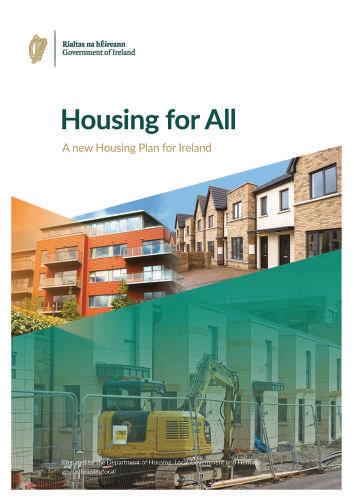
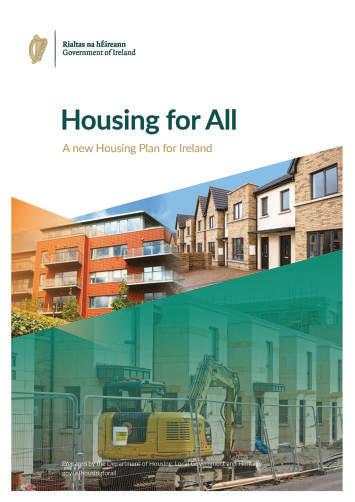

the private rental sector aimed at determining how the housing system can be enhanced to provide “an efficient, affordable, viable, safe, and secure framework for both landlords and tenants”.
The Legal Services Regulatory Authority (LSRA) report on the creation of a new profession of conveyancer was published, and the Department of Justice is considering its recommendations. An expert group has been established tasked with identifying short-term measures to reduce delays and costs for home purchasers in conveyancing and probate processes.
The Government also aims to publish the Short-Term Tourist Letting Bill to increase rental property availability, potentially adding 12,000 properties back into the long-term rental market. The Government has said they intend for the bill to be passed before the Oireachtas summer recess.
In March 2024, €2.25 billion was allocated to the National Development Plan to deliver more than 1,000 purpose-built accommodation beds at UCD, DCU, and Maynooth University. Government’s analysis estimates that the development finance required to meet the average Housing for All target of 33,000 homes is now approximately €13.6 billion per annum. Private finance sources provided approximately 82 per cent of the development finance required to deliver just over 29,850 houses in 2022, with the State providing the remaining 18 per cent.
The most recent progress report states: “It is therefore critical that Ireland continues to attract private capital alongside its public investment and the policy certainty provided by Housing for All is crucial to attracting this investment.”
The new Planning and Development Bill, the cornerstone of the Government’s housing policy, will face Seanad scrutiny after the summer recess, despite the Housing Minister Darragh O’Brien TD promising it will be enacted before then. The Bill aims to “bring greater clarity, consistency, and certainty to how planning decisions are made and enable us to build houses and critical infrastructure at pace”, however, following 123 hours at committee stage, multiple amendments proposed in the Dáil saw the Government utilise the guillotine mechanism to cap the time the Bill could be discussed.
A €750,000 investment in the construction sector supports the Action Plan to Promote Careers in Construction, focusing on attracting international workers and promoting early education in construction careers. Proposals for creating an independent building standards regulator are also being developed, and a new modern methods of construction (MMC) online platform is being developed to highlight career and upskilling opportunities.
The Government also aims to increase the use of MMC in social housing

delivery. Progress on the implementation of an accelerated delivery programme for approximately 1,500 new social homes on 33 sites across 13 local authorities using MMC is being closely monitored.
An Implementation Steering Group has been formed to oversee the enhanced Defective Concrete Blocks Grant scheme and address emerging issues, as well as make necessary recommendations.
Pilot projects have been initiated in counties Carlow and Wexford to develop social housing using offsite three-dimensional construction methods.
While Housing for All has gained significant momentum, the latest progress report states that ongoing challenges such as “growth in population, changes in demographics, interest rate increases, supply chain issues and many other factors” necessitate continual reviews and adjustments.
The Government will publish the delayed first revision of the National Planning Framework. Speaking with the Housing Ireland Magazine, Minister for Housing, Local Government and Heritage, Darragh O’Brien TD stated that this will be implemented in September 2024, despite completion
originally due in April 2024. The Framework will be accompanied by new Housing for All targets for 2025 onwards, informed by independent, peer-reviewed research by the ESRI.
Regarding homelessness and social inclusion, a national Youth Homelessness Strategy Progress Report was prepared, detailing actions across DHLGH to combat and eradicate homelessness. This includes initiatives such as Tenant in Situ acquisition schemes, targeted leasing, schemes to tackle vacancy, and actions from the National Homeless Action Committee. The overview aligns with commitments from the Lisbon Declaration on the European Platform on Combatting Homelessness which aims to eradicate homelessness by 2030.
A strategic review of the approved housing bodies (AHB) sector is underway, with findings expected to help improve operational efficiency and effectiveness.
Lastly, regarding land development, following the Land Development Agency's Report on Relevant Public Land, stakeholder engagement was completed in March 2023, and
recommendations were made for developing housing on 83 areas of public land in urban centres, potentially delivering up to 66,910 homes. These recommendations were approved by the Government in February 2024.
Despite Housing for All’s building momentum, it is now unquestioned that the target of 300,000 homes by 2030 is inadequate to meet the housing demands of Ireland’s growing population.
Acknowledging the deficit, the department has engaged the Economic and Social Research Institute (ESRI) to update its previously published independent and peer-reviewed research on structural housing demand and the calculation of housing supply targets at local authority level.
The need for ongoing adjustments to accommodate demographic shifts, economic fluctuations, and supply chain constraints will evaluate the resilience of these initiatives. Likewise, a focus on attracting private capital, alongside robust public investment, will be crucial in sustaining momentum.


Uisce Éireann, as Ireland’s national regulated water utility, is responsible for the delivery of secure, safe, and sustainable water services for the people of Ireland.
We are fully committed to playing our part in the delivery of water services to support the national drive to provide homes to people who need them. Our commitment is evident in our planned investments, nearly €6 billion under the National Development Plan 2021-2030. Geoffrey Bourke, Uisce Éireann’s Head of Customer Operations, underscores this commitment, stating: “Uisce Éireann plays a pivotal role in providing essential infrastructure that enables the construction of new homes and businesses. Our substantial investments and major projects illustrate our unwavering dedication to enhancing water services infrastructure across the country.”
Uisce Éireann values partnership with all stakeholders committed to providing
homes. By actively listening and adapting, we have made significant changes to better support the industry.
Our engagement with key stakeholders such as the Irish Home Builders Association (IHBA), the Local Government Management Agency, LA Housing Departments, Approved Housing Bodies and the Irish Council of Social Housing allows us to gather invaluable feedback and insights, ensuring that our strategies and initiatives align with the needs of the housing industry.
Our Connection and Developer Services (CDS) team provides a comprehensive range of resources and support materials for Developers, guiding them through the entire connection process.
Uisce Éireann is integral to Ireland’s

national housing drive, developing and prioritising key water service infrastructure to support new homes and businesses. The National Development Plan 2021-2030 commits nearly €6 billion to water services. From 2020 to 2024, Uisce Éireann will invest €5.35 billion, driving significant improvements in water services infrastructure. Notably, the Blanchardstown Regional Drainage Scheme, valued at approximately €88 million, has upgraded the sewer network for the Greater Dublin Area helping to protect the environment and enable future growth. Such investments highlight our commitment to laying the foundation for sustainable development.
A key focus for Uisce Éireann has been to support the delivery of housing and to deliver on our asks in the Housing for All programme. In recent years Uisce

Éireann has increased its capability to support pre connection enquiries, planning referrals, connection applications and onsite quality assurance/checks to enable Uisce Éireann to vest infrastructure in a timely manner, supporting the delivery of housing and to provide a quality water service to these homes into the future.
In 2023, Uisce Éireann responded to 78 per cent of pre connection enquiries and 83 per cent of connection applications within 16 weeks, we issued positive responses to over 3,000 pre connection enquiries associated with more than 98,360 housing units and issued over 4,590 connection offers associated with 42,970 housing units.
Our Self-Lay in Public Roads Programme and the Experience-Based Accreditation (EBA) Scheme was initiated to empower developers and expedite housing delivery while maintaining the integrity of water services infrastructure. We launched the EBA Scheme 18 months ahead schedule on the 24 June 2022. To date 42 contractors have been approved for experience-based accreditation.
Uisce Éireann launched the First Mover Scheme in November 2023 as an enhancement to the Uisce Éireann Connection Charging Policy as directed by the CRU.
These innovations demonstrate our proactive approach in listening to the construction industry and developing these initiatives to support their needs. These initiatives apply to all development

that meet the criteria, including social housing, AHB housing and private housing development.
In 2023 the Government approved a new package of housing support measures to incentivise the commencement of housing developments and help reduce housing construction costs, including the introduction of temporary time-limited arrangements for the refund of Uisce Éireann (UÉ) Standard Connection Charges. This scheme has been extended and applies to housing developments that have commenced on site between 25 April 2023 and 30 September 2024, and are completed not later than 31 December 2026.
Applications to Uisce Éireann for refunds can only be accepted up to 31 December 2024. This scheme applies to all housing development that meet the criteria including social housing, AHB housing and/or private housing development. Developers need to apply before the scheme deadline as no refund can be processed outside of these dates.
Under the Self Lay Agreements, all developers are required to provide a Surety applicable to the water services local infrastructure. In 2024 we have made an enhancement to our Financial Security Policy which will allow developer to provide a Performance Bond for this surety.
At Uisce Éireann, collaboration allows us to work effectively in supporting the delivery of housing in Ireland. We recently established the Developer Services Forum, involving key
stakeholders such as the CIF, Association of Consulting Engineers of Ireland (ACEI), and IHBA. This forum provides a national voice for developers and our stakeholders, helping to address industry challenges and the promotion of information sharing.
Uisce Éireann remains dedicated to enabling Ireland to thrive by providing the essential water services infrastructure needed to support housing and economic growth. Through strategic investment, innovation, and collaboration, we are committed to a sustainable future where water is respected and protected for all. It is Uisce Éireann’s responsibility to make the physical connection to the network to ensure the protection of public health for both new and existing customers.
For more information on our initiatives, to explore our comprehensive resources or to seek a connection, visit: W: www.water.ie/connections

Dara Turnbull, research coordinator at Housing Europe, compares the housing context in Ireland with exemplar EU member states.
Speaking on behalf of Housing Europe, the European federation of public, cooperative, and social housing, Turnbull unpacks Delivering on housing in Ireland: A European policy perspective. Commissioned by the European Parliament’s Renew Europe group, the report examines the context of the Republic’s housing sector relative to other European states and offers potential solutions for decisionmakers.
Ireland’s housing crisis has several elements, but the most consistent theme is that the cost of housing is outweighing wage growth, thereby making home ownership and rents inaccessible or unaffordable for many Irish residents.
For prospective homeowners, for example, statistics from the Central
Statistics Office (CSO) and the Department of Housing, Local Government and Heritage, show that the average house price increased from €40,283 in 1990 to €311,514 in 2022, a growth of almost a factor of seven or a 673 per cent increase.
Meanwhile, the average annual earnings in the Republic in the same period grew from €25,811 to €66,914, a 159 per cent increase. This disparity between wage growth and house prices has meant that, whereas in 1990 the average house price was around 56 per cent higher than annual earnings, house prices are now around 4.65 times greater than annual earnings.
Housing Europe’s report determines that Rebuilding Ireland, the Irish Government’s previous housing
strategy, had a goal of building 25,000 new homes per year, but that “actual output was only around 76 per cent of that”.
Although the housing crisis is being exacerbated by undersupply, delving into these building statistics, Turnbull asserts that the area of most significant underdelivery was primarily in private sector construction.
“A relative overdelivery by the public sector has helped to compensate for an underdelivery by the private sector,” he says.
“Government needs to be more aware of the direct policy levers that it has over public housing policy versus demand side incentives and schemes which are not necessarily leading to delivery of infrastructure.”
Examining Ireland’s housing market compared to those of Austria, Denmark, and the Netherlands on housing affordability specifically, Turnbull explains that in Ireland in 2022, around 9 per cent of the total housing stock was classified as social and affordable housing. This figure is significantly below figures of 24 per cent in Austria, around 20 per cent in Denmark, and just under 30 per cent in the Netherlands.
Comparing Dublin with the exemplar state’s capital cities, Turnbull states that the “disparity is even greater”. Around 11.3 per cent of Dublin’s housing stock is classified as being “social or affordable”, while this figure surpasses 40 per cent in Amsterdam and Vienna.
The Housing Europe research coordinator explains that this disparity may well be down to the European practice known as ‘build and retain’.
“They build social housing and the objective is to retain the system in perpetuity,” he outlines.
Contrasting this model with Ireland, Turnbull states: “The majority of publicly supported and publicly built housing that we have constructed in the State since the 1930s is now privately owned. We have been very good at building public housing in this State, but we have not been very good at holding onto it, so that is a missed opportunity.”
To meet the challenge of under delivery by the private sector in housing supply, Turnbull cites a cooperative model utilised in Sweden which could be adapted for the Irish market.
Essentially based on what Turnbull describes as a ‘cost purchase’ principle, the Swedish model is backed up by a national cooperative housing guarantee fund, which enables newly forming local housing cooperatives to unlock the necessary construction loans from commercial banks, which would otherwise not be possible given a lack of collateral to ‘back up’ such lending.
“A local housing cooperative can come together and pool their resources to build new housing. When the development loan is repaid, that lending
is refinanced as standard mortgage lending,” Turnbull explains.
As a result, around one in four Swedish primary residences are part of the cooperative housing sector.
In 2023, the Government met its overall housebuilding target under its Housing for All policy of constructing 30,000 homes, and Minister for Housing Darragh O’Brien TD has expressed his confidence that a similar number will be achieved in 2024.
Turnbull warns of a potential “dark cloud” for construction, as the raising of interest rates by the European Central Bank may prevent private construction from playing an optimal role in house building due to prospective inadequate yields.
As interest rates are likely to reduce through the course of 2024 as inflation is projected to decline, there may be long-term optimism that supply will increase in the Irish housing sector which is the ultimate key to solving the state’s housing crisis.
However, Turnbull states that even if interest rates do decline towards the end of 2024, or in early 2025, they will nevertheless be much higher than in the
Dara Turnbull
preceding decade. Thus, other investment will remain more attractive, meaning real-estate will not be as attractive as prior to the ongoing inflation crisis.
He continues: “Given strong protections for tenants, which are completely justified, the long-term return on things like build-to-rent are not as attractive as in the past, when there was effectively no clear limit to potential returns. As a result, the capital value of BTR apartments is today, and will remain in the future, below the actual cost of construction. This effectively means that such projects are not viable.
“Even if interest rates decline, it does not suddenly mean that residential construction kicks back into gear. I think the dark clouds over the sector will not lift so easily. Having said that, it seems that in the Republic, large Approved Housing Bodies have become important purchases of residential developments that had originally been earmarked for large corporate investors.
“The State may be able to pick up some of the development already in the pipeline, but it is not clear how this pans out over the longer term,” he concludes.
Dara Turnbull is the research coordinator at Housing Europe – The European federation of public, cooperative, and social housing, where he has worked since 2019. He is responsible for managing various research projects, and working to promote the uptake of new approaches and best practices by housing providers.

Over the last few months Fingal County Council has partnered with some of Ireland’s leading homebuilding firms to offer almost 500 affordable homes across the county for private affordable sale.
With one of the fastest growing and youngest populations in Ireland, it is not surprising that the provision of housing is the number one priority for Fingal County Council. Nowhere is this more evident than in the Fingal Capital Programme 2024 to 2026, where some €860 million of the total planned investment of €1.35 billion is earmarked for housing.
Under Housing for All, Fingal has been set a demanding target of delivering 6,532 new build homes over a five-year period from 2022 to 2026. This figure includes providing 3,500 social homes
through their own schemes and through partnerships with approved housing bodies and the Land Development Agency. Fingal is also required to supply 1,000 affordable homes directly and 2,000 affordable homes in partnership with AHBs and the LDA.
The Council’s current housing pipeline has 37 sites providing over 3,100 homes which are either at construction, procurement, pre-planning, or at the feasibility stage, and this figure will increase as new schemes are brought forward. This is comprised of different
tenure mixes and the past two years has seen the council ramp up the delivery of affordable housing in partnership with leading firms like Glenveagh, Gem, Ballymore, Lagan, Gannon, and Manley.
Architect Dermot Bannon, in a recent interview with the Business Post, spoke about Fingal County Council’s partnerships with developers and cited the Balmoston development in Donabate, where Fingal has partnered with Glenveagh to deliver 1,200 private, affordable and social homes, as an excellent example of how housing should be rolled-out.
Bannon said: “The great thing about Balmoston – and I did not design it – is that it is a partnership with Fingal County Council and that is key to how housing should happen here going forward. The project is being built on land owned by the council and which has established amenities and facilities and the developer is plugging into an existing community, which is important.
“Partnerships with local authorities, when
it works, it works really well because there is existing infrastructure, the lands are in strategic areas with existing and established transport links, schools, shopping centres and local convenience stores, coffee shops, restaurants or pubs already there with exiting sports clubs and parks or green areas.
“Local authorities with land banks working with developers in order to build quality housing in strategic areas with established communities is what it is all about,” said Bannon.
The Affordable Housing Scheme gives people an opportunity to buy their own privately-owned home at a discount from full market price. It is mainly targeted at those middle-income earners who find themselves unable to bridge the affordability gap between their mortgage approval and the full market price of the home. The Council makes up the difference by taking an equity share, which can be bought out by the purchaser within 40 years, or when the property is sold or after the death of the owner.
Fingal has already provided 104 affordable homes in Lusk, Rush and Balbriggan which are either sold or at the sale agreed stage and over the past few months it has brought a further 492 homes in Mulhuddart, Donabate, Hollystown, Rush, Balgriffin, Lusk, and Swords to market.
According to the Mayor of Fingal, councillor Adrian Henchy, the delivery of private affordable housing is meeting a real need on the ground.
“The Affordable Housing Scheme is giving more people the chance to own a home and they may also be able to avail for the First Home grant which helps their purchasing power. A big plus is that 30 per cent of each scheme is reserved for people who have been living in Fingal for the past five years,” said the Mayor.
The Minister for Housing, Local Government and Heritage, Darragh O’Brien TD, who recently joined the Mayor of Fingal and local representatives including ministers Roderic O’Gorman TD and Jack Chambers TD, and former Taoiseach Leo Varadkar TD to turn the first sod on the development at Church Fields in Mulhuddart, is delighted with the increase in the availability of affordable housing across the county.
“This strong local pipeline of affordable housing is a great example of how our
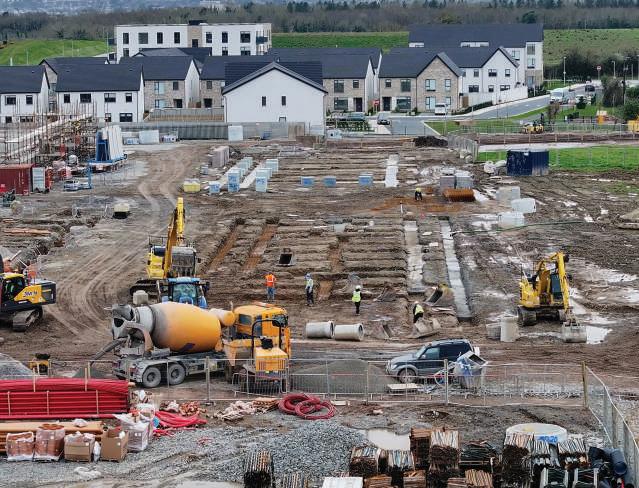
plan, Housing for All, is working at local level throughout our communities and is delivering a strong pipeline of housing of all types to the market,” said the Minister.
Church Fields displays Fingal’s ambition of high-quality, mixed-tenure housing delivery at scale. In this prime west Dublin location, the Council has partnered with Gem Construction to deliver 300 affordable, cost rental, and social homes in the latest phase of a development that will ultimately deliver over 1,000 new homes as part of a vibrant new community.
The Chief Executive of Fingal County Council, AnnMarie Farrelly, said: “Our housing team has worked with the Department of Housing, the Land Development Agency and developers like Glenveagh, GEM, Ballymore, Lagan, Gannon, and Manley to create a substantial pipeline of affordable homes across Fingal. Having already brought three schemes to market in Lusk, Rush and Balbriggan, we have increased our supply of affordable housing over the last few months and are now actively working to assist prospective homeowners purchase almost 500 homes in 11 different locations across Fingal.”
Fingal County Council’s Interim Director of Housing, Paul Carroll, said: “We have challenging targets under Housing for All and we feel we are demonstrating our ability to deliver high-quality mixed-tenure housing at scale to meet those targets.
The Affordable Housing Scheme is a key plank in our ambition of giving people a realistic chance of owning their own home.
“The range of properties on offer have a starting price of €290,000 and, not surprisingly, there has been strong demand for all our schemes across Fingal. These will be privately-owned homes and typically middle-income earners such as teachers, doctors, construction, IT, pharma, and healthcare workers, and other professionals employed in both the public and private sector, have been successfully approved under this scheme so far.”
Further details, including information on eligibility and documentation required, are available at:
T: 01 890 5994 (north county) or 01 890 5380 (Dublin 15)
E: housing@fingal.ie
W: www.fingal.ie/affordablehomes


Amid the drive to increase housing supply, attention must be given to the quality of housing and the communities in which people live, comprehensive research on family wellbeing has suggested.
The Economic and Social Research Institute’s (ESRI) Housing, Health and Happiness: How Inadequate Housing Shapes Child and Parental Wellbeing research highlights how families living in poorer quality housing have lower social and emotional wellbeing.
Among its key findings, the report highlights how mothers living in inadequate housing and poorer quality neighbourhoods report “more depression, find parenting more stressful, and report greater conflict and less closeness with their children”.
As a result, the children of these mothers experience more socioemotional difficulties.
The description of inadequate housing includes things like accommodation that is too small, damp conditions and a lack of heating. Poorer quality neighbourhoods are defined as areas with more disorder and fewer social supports.
The report states that while income is “a crucial driver” of housing and neighbourhood quality, given that lowincome families are “more likely to live
in unsuitable homes, to struggle to heat these homes, and to reside in areas characterised by greater disorder and lower levels of social capital”, other elements play a factor.
For example, migrant families are more likely to have inadequate housing, even taking account of the fact that income levels may vary. Also listed is access to resources, with the research pointing out that lone-parent and parents with a disability, who are often excluded from the labour market, are more likely to experience poor quality housing.
“Type of tenure also matters, with inadequate housing and frequent moves more common for those in social housing, private rented accommodation, or among those living with the child’s grandparents,” it states.
The research uses data from the Growing Up in Ireland Cohort ’08 to explore the influence of housing and neighbourhood quality on parental and child wellbeing, and in particular looks at how the length of time households have
Illustration of the indirect effects through which (1) struggling to heat household and (2) neighbourhood disorder and related to child SDQ
Source: Growing Up in Ireland, 2008 Cohort.
spent experiencing inadequate housing can shape families’ wellbeing.
Focusing specifically on the impact of inadequate housing on mothers’ wellbeing, among the research’s findings is that those living in homes that families struggle to heat have poorer quality relationships with their partner, find parenting more stressful, and have a more hostile parenting style.
A similar finding is evident for mothers in poorer quality housing, such as damp conditions or overcrowding, alongside evidence that they have more depressive symptoms.
On the impact of neighbourhood quality, the report says: “Mothers who spend longer living in more disorderly neighbourhoods and areas with less cohesion among neighbours have more depressive symptoms, a less warm and more hostile parenting style; they find parenting more stressful, and they report more conflict and less closeness with their child.”
ANDDIFFICULTIES
Outlining a finding that children who spend more time growing up in worse conditions and poorer quality neighbourhoods face greater social and emotional difficulties at age nine than their peers, the report states: “This happens because the impact of inadequate housing on mothers’ wellbeing spills over to harm their children’s wellbeing. For example, mothers living in inadequate housing tend to find parenting more stressful, and finding parenting more stressful is linked with more social and emotional difficulties in their children.”
Adding: “Children in homes that families struggle to keep warm or in more disorderly neighbourhoods appear to face socio-emotional difficulties because of their mother’s greater stress, depression and parenting style.”
The ESRI’s James Laurence, the report’s lead author, says that making housing quality a key part of all newbuilds and improving the conditions of the existing stock of housing and communities will lead to long-term benefits for families.”
Outlining the policy implications of the findings, the research suggests that the proportion of families found struggling to heat their homes suggests a need for supports for retrofitting, as well as additional targeted financial assistance to low-income families.
“The findings highlight the importance of putting in place supports for parents, including those with school-aged children, embedded in both schools and communities,” it states.
“Lower-income families are less likely to feel their local neighbourhoods are safe and supportive, pointing to the need for measures to support community development and to enhance local social capital in disadvantaged areas.”

Rent control was first introduced in Ireland in 1915. As unintended consequences emerged in the following decades, numerous changes were made to the legislation. However, all this tinkering caused vast swathes of properties in our cities and towns falling into disrepair and dereliction.
Landlords had no incentive or revenue to keep their properties in good conditions for their tenants. Due to the efforts of a number of parties, including the late solicitor Paddy Madigan, legislation was introduced in 1982, 67 years after it was first introduced, ending rent control with the Housing (Private Rented Dwelling) Act 1982.
Unfortunately, the lessons of the past were not learned. In 2004, a limited form of rent control was introduced followed in 2016 by rent pressure zones (RPZ) and further restrictions followed in 2021. The most damaging blow came in 2022 when rents were capped at 2 per cent, totally ignoring the fact that, with inflation and interest rates running at more than double this, the effect would be a
damaging curtailment of rental supply and the rental market to become more dysfunctional due to a myriad of unintended consequences. If supply is to get back on track and rents to stabilise the 2 per cent cap needs to be removed.
Against this background the government have unfortunately extended the measure until December 2025. The fact that rents have been rising faster outside Dublin, where institutional investors have not been active, confirms that these entities have not been responsible for rental inflation – on the contrary they have helped to increase supply – the lack of supply being the main cause of rental inflation.
In the first quarter of 2024, according to the Daft Rental Price Report Q1 2024, market rents in Dublin cooled to 2.5 per cent compared to a year previously. The report confirmed that the number of homes available to rent on the open market remains low. On 1 May 2024, just over 2,000 homes were available to rent, effectively unchanged on the same date

a year previously and well below half the 2015-2019 average of almost 4,400.
Availability had almost doubled between late 2022 and late 2023 but has fallen considerably since the start of the year, mainly due to small landlords exiting the market and institutional funders being discouraged by conditions.
Commenting on the report, Ronan Lyons, Associate Professor in Economics at Trinity College Dublin and author of the Daft.ie Report, says: “Rental inflation has slowed considerably over the last 18 months, driven in large part by the construction of significant numbers of new rental homes in the Dublin area. More supply, even at the upper end of the market, relieves pressures across the market and, in the second half of 2023 in particular, new supply saw availability improve and inflation has eased.
“However, improvements in the availability of homes to rent look to have stalled. Without additional increases in rental supply, any pressure on rents is likely to be upward in nature, further straining affordability for those on regular incomes. For that reason, policymakers must develop a thorough understanding of rental supply dynamics ahead of a detailed plan on dramatically increasing rental supply over the rest of the decade.”
The final version of The Housing Commission report which was published in May 2024 contained a number of interesting findings. It recognised that the scale of the deficit in housing supply is far bigger than previously acknowledged and that a period of “accelerated housing delivery” is recommended. In order to achieve this the report proposes that diverse sources of finance, including
stable public financing and a predominant international element, are available to increase housing output in the medium term.
The report advised the Government to scrap the current rent pressure zone rules which limit rent increases to 2 per cent per annum. While this is a sensible proposal to increase funding for the private rental market, it is unfortunate that they then go on to suggest that it should be replaced by a complex and unwieldy mechanism involving rents being calculated based on “reference rents” set for different parts of the country. It is significant that three members of The Housing Commission said that “the quasi permanent rent controls” being proposed “would adversely impact supply”. They state that the best control on rents comes through achieving adequate supply. They are absolutely correct in the assessment as the rent cap has stifled supply, forced rents upwards and increased hardship on those seeking rental accommodation.
If the 2 per cent rent cap was removed there would be a surge in funding for the rental sector. The international and domestic capital that the market needs would again support housing supply. The main factors preventing this to date are misguided ideology and a failure by policymakers/politicians to appreciate or face up to the unintended consequences of rent control and the evidence that it has severely damaged the rental sector. One point that is not generally taken into
account when discussions take place about rental levels is that there is a vast gulf between the quality and energy efficiency of apartments built in Ireland since 2016 and those built prior to that. There is also a further gulf between those built prior to the turn of the century. To treat these three categories as if they had the same rental value is a fallacy and inequitable.
The apartments that were built in the past eight years are of an exceptional standard, including the provision of multiple resident facilities, high quality specifications and architectural designs. By producing these buildings for a segment of the population, including high tech, pharma and financial services personnel, it is adding to overall supply and freeing up rental accommodation for those relying on the lower and middle markets. To suggest that the top end properties should be restricted to the same rental levels as inferior properties would lead to a further contraction in rental property supply.
Hooke & MacDonald 118 Baggot Street Lower Dublin 2
PSRA No. 001651
T: 01 661 0100
E: info@hmd.ie
W: www.hookemacdonald.ie
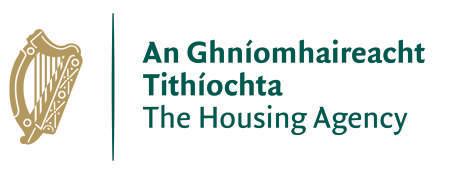

Since The Housing Agency was established in 2012 it has aimed to find solutions to support the delivery of housing and promote the development of sustainable communities.
In 2020, The Housing Agency published a report titled Social, Affordable & Cooperative Housing in Europe which examined 44 case studies of housing projects in selected countries. The research was conducted by Housing Agency Senior Architectural Advisor
Isolde Dillon, with the purpose of providing an overview of the range of housing types in other jurisdictions and highlight positive elements of the projects which could be applied to housing in Ireland.
The report notes: “The architecture will not necessarily transfer easily from one place or country to another, but there are lessons to be learnt from looking at the context, challenges and design solutions arrived at within different contexts and in different countries.”
This neatly sums up the value, as well as limitations, of comparative research, namely can the lessons learnt from other jurisdictions be translated into the Irish context.
While the 2020 Housing Agency publication looked outwards, the recently published report Examination of innovation/efficiencies in design of affordable housing places a greater focus on what is happening in Ireland. The research, a commitment under Action 32 of Housing for All, was jointly published by the Housing Agency and Department of Housing, Local Government and Heritage (DHLGH).
The report acts as a sequel to the 2020 report and the research is intended to contribute to on-going guidance for the sector.
To define best practice, the authors of the report distilled the 44 case studies in the previous Housing Agency (2020) report into the following themes:
1. Strategy – early design decisions, e.g. a policy or brief.
2. Layout – e.g. layout of the site, the home and the estate or apartment block.
3. Materials – including rapid construction and durability of materials.
4. Delivery – innovative project delivery methods.

5. Occupation – including how the needs of occupants are met.
An Expert Advisory Group, composed of public sector housing practitioners involved in the delivery of affordable housing, was established to identify good case studies from across local authorities in Ireland and send relevant material to Bucholz McEvoy Architects (authors of the report).
These case studies were then categorised into the themes outlined above. In Ireland, 12 cases studies were included in the final analysis. These came from Dublin, Galway, Cork, and Limerick, and encompassed a range of sizes – small (up to 50 units), medium (50 – 150 units), and larger schemes (150 plus units).
The report contains several short articles about the delivery of affordable housing in Ireland from leading officials of the Housing Agency, Housing Delivery Co-ordination Office, Fingal County Council, Cork City Council and more. Findings which emerged from these articles highlight the importance of:
• Developing a pipeline of affordable housing to 2030.
• The right homes in the right places.
Planning for the needs and requirements of sustainable communities – homes need to complement existing and new communities.
• Undertaking research and planning, to include analysis of the property market, identify suitable site locations and examine the available financial measures and supports which promote affordable housing.
• Improving the energy efficiency of social housing stock – the report contains some notable examples of work by Cork City Council with tenants to monitor energy consumption.
• Effective procurement practices, which can be used to drive innovative and modern building methods, to deliver high quality, attractive homes.
• Good collaboration between local authorities, DHLGH and housing developers.
• Affordable housing in redeveloping and regenerating inner city areas, as well as in supporting brownfield development and adaptive reuse of existing buildings.
• Stakeholder engagement, particularly for direct build of affordable housing by AHBs, the procurement of which can be complex.
The report provides some key lessons, such as the need for a strategic plan and design-led approach to housing, combined with strong local governance, informed by community stakeholders. In addition, the economic case for any project must be comprehensive, with an examination of the risks and opportunities over the medium and long term in relation to viability, cost benefit and management.
Finally, much can be gained from research which looks to other jurisdictions and examines how they deal with challenges or opportunities in housing. The present research shows some of the best examples of design and delivery innovation in Ireland today and will contribute to our knowledge of how to continue to deliver affordable and cost rental housing. The report is an essential read for anyone working in the delivery of housing and should be instructive for those tasked with designing new developments.
While Taoiseach Simon Harris TD advocates for the Help to Buy scheme to be extended for five years, many in opposition believe the schemes are flawed.
Census 2022 indicates that that Ireland’s rate of homeownership stood at 66 per cent, a slight decline from the figure of 68 per cent in 2016.
When these figures were published, the Central Statistics Office (CSO) outlined:
“The rate of home ownership continues to fall. It was 66 per cent in Census 2022, down from 68 per cent in 2016, and almost 70 per cent in 2011. Census 2022 shows that by the age of 36, more than half of householders owned their home (with or without a mortgage or loan).
“This age, which marks the changeover between home ownership and renting, has been increasing over time, up from 26 years in 1991, 27 years in 2002, 28 years in 2006, 32 years in 2011, and 35 years in 2016. In Census 1991, the age at which two-thirds of the householders owned their homes (with or without a loan) was 28 years. By the time of Census 2022, this age had risen to 44.”
However, most recent statistics for homeownership supports indicate that applications have slightly increased in 2023.
Published in February 2024, the most recent figures available from Revenue state that there have been 98,425 total HTB applications received up to 31 December 2023. 44,959 HTB applications have reached the claim stage by 31 December 2023, of which 44,281 are approved. The estimated total value of approved HTB claims to date is €927.3 million and the total value of approved and pending HTB claims to date is €938.4 million.
Regarding the application stage, 23,750 applications were received in 2023, based on the application start date. This figure includes approved and pending applications. 7,266 applications had advanced to the claim stage. In 2022, 24,520 HTB applications were received, with 6,922 advancing to the claim stage, representing a 5 per cent increase in claims in 2023.
2023 marked the First Home Scheme’s first full calendar year of implementation. The number of registrations that took place in 2023 totalled 5,097, with 7,530 since the launch. Out of the 5,097 registrations, there were 2,446 approvals in principle. This is a contrasting increase from the 750 approvals in 2022.
The value of funds drawn down equalled €73.9 million with 1,118 drawdowns in total. This is a stark contrast to the 137 total drawdowns and €57.6 million funding approved in 2022. Since the FHS launch, the average equity funding was €66,651 with the average FHS property price equating to €380,032.
78 per cent of live eligibility certificates issued have been for buyers in counties Dublin, Cork, Meath and Wicklow, with the remaining 22 per cent spread across 20 counties throughout the State.
In 2023, over 490 Affordable Purchase homes were delivered through the Local Authority Affordable Purchase Scheme. Additionally, 1,345 affordable purchase homes have been advertised

in Carlow, Cork City, Cork County, Fingal, Kildare, Kilkenny, Laois, Louth, Limerick, Meath, South Dublin, Waterford, Westmeath and Wicklow.
The Government states that these figures reflect a “good pipeline” of homes built from a standing start in 2022.
Speaking with the Housing Ireland Magazine, Housing Minister Darragh O’Brien TD emphasises the importance he places on first time buyer supports, and states:
“We have close to 600 first time buyers per week now purchasing homes and we are very pleased with the progress, particularly in the First Home Scheme, which is a scheme many people were critical of at the start. It is really working, with around 10,000 registrations and over 5,000 approvals.”
However, Cian O’Callaghan TD for Dublin Bay North and Social Democrats housing spokesperson states that the Government has failed first time buyers: “We need homes that people can afford – not investment opportunities for speculators.”
Likewise, Eoin Ó Broin TD, Sinn Fein spokesperson on housing also believes that HTB is artificially inflating house prices meaning that “lots of other people are locked out of the market”.
“Half the money that is spent on Help to Buy goes to people who do not need it. That is [supported by] independent research from the Oireachtas’ Parliamentary Budget Office and from Mazars [on behalf of the Department of Finance]. One-third
of the people who receive it [support] do not need it – they already have a sufficient deposit and a mortgage to purchase,” he says.
The Housing Commission has recommended that the Government should use appropriately targeted equity loan schemes to support first time buyers to purchase a home, as provided for in the Affordable Housing Act 2021, and establish central revolving funds to manage capital derived from repayment of equity loans that

are provided by the State or local authorities.
“While the Help to Buy scheme assists first time buyers (FTBs) by providing a tax refund that can be used to cover the cost of a deposit, some FTBs may still be unable to afford to purchase a home. In particular, the macroprudential mortgage lending rules may not enable FTBs to borrow sufficient funds to buy a new home in their preferred location”, the Report of The Housing Commission states.
Announced in Budget 2017 (October 2016), the Help to Buy (HTB) initiative aims to assist first time buyers with the deposit required to purchase or self-build a new house or apartment. The original incentive supplied a refund of Income Tax and DIRT paid over the previous four years, limited to a maximum of 5 per cent of purchase value up to a value of €400,000.
This incentive was initially available for the period from 19 July 2016 to 31 December 2024. An enhancement to the existing HTB scheme was announced in the July 2020 Stimulus plan. The enhanced HTB relief provides that where applicants satisfy certain conditions, increased relief is available up to a maximum of €30,000 (the HTB fund was originally capped at €20,000), or 10 per cent of the purchase value. The enhanced rates applied from 23 July 2020 to 31 December 2025.
The First Home Scheme Ireland Designated Activity Company (FHS) is a shared equity scheme officially launched in July 2022. The FHS is a collaborative initiative between the State and participating lenders, aiming to bridge the gap for eligible customers between their deposit and mortgage, and the price or build cost of their new home (within price ceilings established across the State).
Homebuyers receive funds in return for the First Home Scheme taking a percentage ownership in the property. The FHS is available to first time buyers (FTBs) and those who qualify under the Fresh Start Principle.
The scheme aims to provide €400 million to facilitate the purchase or selfbuilding of up to 8,000 homes over a three-to-five-year period. To facilitate the target, in 2023 two new products were launched by the First Home Scheme; the Tenant Home Purchase product and the Self-build product.

Phillip Lee LLP’s Angelyn Rowan examines the impact of the Recast Energy Performance of Buildings Directive on the residential sector in Ireland.
The EU has established a legislative framework to boost the energy performance of buildings with one of the key aims being to achieve a highly energy efficient and decarbonised building stock by 2050.
According to the European Commission, 85 per cent of EU buildings were built prior to 2000 and 75 per cent of this building stock has poor energy performance. The recast Energy Performance of Buildings Directive came into force on 28 May 2024. It is intended to help increase the rate of renovation in the EU, particularly for the worstperforming buildings in each country, and it is also designed to support better air quality, the digitalisation of energy systems and the roll-out of infrastructure for sustainable mobility.
Ireland will be required to transpose the Directive into Irish law by 29 May 2026
and there is a significant body of work to be undertaken by the Government in the lead up to that date.
What is required in relation to existing housing stock?
Under the strengthened framework, residential and non-residential buildings are addressed differently. In respect of residential buildings, each member state is to adopt its own national trajectory to reduce their average primary energy use by 16 per cent (compared with 2020) by 2030 and 20-22 per cent (compared with 2020) by 2035. At least 55 per cent of the required decrease in average energy use must be achieved through the renovation of 43 per cent of the worst-performing residential buildings.
It has been recognised that the worst performing buildings can consume up to 10-15 times more energy than a zeroemission building. Member states are free to choose which buildings to target and which measures to take, however, they are not permitted to disproportionately exempt rental properties.
What will this mean for new builds?
The revised Directive makes zeroemission buildings the standard for all new buildings. The Directive defines a zero-emission building as a “a building with a very low energy demand, zero onsite carbon emissions from fossil fuels and zero or a very low amount of operational greenhouse gases”.
Therefore, all new residential buildings must have zero on-site emissions from fossil fuels, as of:
• 1 January 2028 for publicly owned buildings.
• 1 January 2030 for all other new buildings (with some exemptions).
Ireland is required to draw up a national building renovation plan to ensure the renovation of the national stock, both residential and non-residential, into a highly energy efficient and decarbonised building stock by 2050. The Commission can then issue recommendations on the draft plan. These plans are to be submitted every five years with the first being due on 31 December 2025.
The first plan is to contain a roadmap as to how the member state intends to achieve the 2050 target of ensuring a highly energy efficient and decarbonised national building and its plans and measures to implement the plan. In terms of residential buildings, the plan must specifically include the steps it intends to undertake to achieve the renovation of the existing residential building stock to reach the required reduction in average energy usage.
New residential buildings are required to be solar ready by 31 December 2029. There is a transition period for the deployment of solar energy installations on existing public buildings and by 31 December 2030 any building with a floor area larger than 250m2 must have done so. All of these obligations are subject to the requirements being technically, economically, and functionally feasible.
Member states are required to have a scheme in place for renovation passports by no later than 29 May 2026. Building renovation passports are tailored roadmaps for the deep renovation of individual buildings in a maximum number of steps to significantly improve the buildings energy performance. The scheme is to be voluntary for building owners, unless member states make them mandatory. Member states may allow for a renovation passport to be issued jointly with the energy performance certificate (BER).
The idea behind the renovation passport is to have an overall plan for the deep renovation of a building that can then be carried out in stages. This can make renovations less disruptive and more financially feasible for the occupants.
For owners of existing residential housing it will be a case of wait and see what measures the Government will introduce to enable Ireland to meet the targets for the reduction of energy usage, but expect a new “generation of renovation” if one is not to be left behind.
In new buildings with more than three car parking spaces or residential buildings undergoing major renovation with the same number of car parking spaces there will be a requirement for the installation of pre-cabling to enable the installation of recharging points for EVs. There must also be a certain number of bicycle parking spaces for every residential unit.
It is recognised that although energy renovations of buildings will generate large savings on energy bills over time, the immediate expense of energy renovations may deter homeowners. One of the main aims of the Directive is to reduce energy poverty, which is often linked to inefficient buildings.
To protect those in residential and social housing, the Directive provides that financial incentives and other policy measures should prioritise vulnerable households. Member states should take measures to prevent “renovictions” (defacto evictions related to a significant increase in rent that occur as a result of renovations). Examples of such measures include caps on rent increases and member states providing financial incentives to owners of buildings or building units to tackle the upfront costs of renovations.
Uniformity across EU member states is to be introduced in relation to Energy Performance Certificates, similar to the Building Energy Rating (BER) certificates used in Ireland. This will
enable greater comparability across the EU’s residential market. An Energy Performance Certificate will be required to include recommendations for the improvement of the energy performance of the building in question.
Building owners, tenants and managers will be entitled to have access to their building systems’ data, meaning the energy performance of building elements, the energy performance of building services, the projected lifespan of the heating systems etc.
One-stop shops for the energy performance of buildings must be established by member states for the energy performance of buildings, targeting all entities involved in building renovations. The creation of these onestop shops is to provide assistance for the provision of technical, administrative and financial advice.
All of the above measures will come at a cost and it is understood that there will be €100 billion in EU financing available to support renovations in the period between 2023 and 2030 alone. The twoyear implementation period for the Directive will not be long passing. For owners of existing residential housing it will be a case of wait and see what measures the Government will introduce to enable Ireland to meet the targets for the reduction of energy usage, but expect a new “generation of renovation” if one is not to be left behind.
Angelyn Rowan, Partner, Projects and Construction Contact us
T: 01 237 3700
E: arowan@philiplee.ie
W: www.philiplee.ie



With the delivery of more social homes a key tenant of actions to mitigate the housing crisis north and south, David Whelan assesses the significant gap in delivery.
In June 2024, housing and homelessness sector leaders in Northern Ireland collaborated on a letter to the North’s First Minister and deputy First Minister to outline their “grave concerns” at the likelihood that only 400 new social homes will be started in 2024/25.
The level of new starts would represent an over 70 per cent fall in current delivery, which itself falls below the necessary draft Housing Supply Strategy target of 2,222 new social housing units per year until 2037.
The projected decrease comes after the Northern Ireland Executive approved its annual budget which significantly reduced the capital budget for the
Department for Communities by £216 million from the previous year.
Four key stakeholder bodies involved in drafting the letter estimate that the allocation will mean 1,106 fewer homes will be started in 2024/25, compared with 2023/24.
Northern Ireland is experiencing rising levels of homelessness, coupled with a growing social housing waiting list. The total number of applicants on the Northern Ireland Housing Executive waiting list at 31 March 2024 was 47,312. Of these applicants, 35,464 households were deemed in ‘housing stress’.
A rise in demand has been compounded by inflationary pressures on supply costs, rising private rent levels, and an acknowledgment that the current housing stock is not reflective of the changing needs of the population.
Political instability, the Covid-19 pandemic, and failure to secure a multiannual budget have also been identified as having detrimental impacts on ambitions to increase the social housing stock.
In March 2024, newly appointed Communities Minister Gordon Lyons MLA identified a Housing Supply Strategy for Northern Ireland as one of his first priorities as part of the reformed
Executive, however, at the end of June 2024, the strategy had still not been finalised.
The strategy, which envisages the delivery of over 100,000 new houses, including 33,000 social homes, over a 15-year period, has been in draft form since early 2022, when the Executive collapse meant it failed to be approved.
If agreed by the Executive, the new Housing Supply Strategy would require delivery of an estimated 2,222 new social housing units per year.
That figure is significantly higher than recent delivery. In 2023/24 (April 2023 to March 2024), 1,508 new social housing dwelling starts were recorded, following 1,956 in 2022/23 and 1,713 in 2021/22. The social housing start figures tend to be higher than new build figures, as dwellings started are not always completed in the same year.
Suggesting that the most recent budget allocation will only allow for 400 new houses to be started in 2024/25, housing sector stakeholders said the allocation would have “major social and economic consequences” and called for the Executive to urgently reconsider the capital budget.
Seamus Leheny, CEO of the Northern Ireland Federation of Housing Associations (NIFHA), says: “In reality the housing waiting list and the social housing budget are going in different directions, at a rapid pace. While figures showed an 18 per cent increase in the number of applicants on the waiting list over the last 10 years, the budget available for new build social housing is shrinking and today’s decision will lead to at least a 73 per cent reduction in the number of new build homes compared to last year.
“If this is not addressed then the Northern Ireland Assembly is effectively waving a white flag and accepting that we cannot realistically provide housing for our citizens in need.
“In the first quarter of this year [2024] alone more than 850 applicants presented as being in housing need, but as things stand we will be building less than half that number of homes over a whole year.”
By comparison, Housing for All, the Irish Government’s housing plan to 2030, set an ambition of 9,500 new-build social homes to be provided each year.
Most recent figures show that the 58,824 households are assessed as being qualified for, and in need of, social housing support as of 1 November 2023. This figure has risen by almost 1,000 households since 2022, however, it still represents a reduction from 2016, when the figures were first gathered.
In 2016, 91,600 households were on the social housing waiting list, and an annual
Q4 2023, an increase on the 7,433 units delivered in 2022.
The build trend has steadily increased from 2016, when the build output was as low as 2,977 units. Interestingly, social housing delivery targets have also gradually increased, meaning that while the number of social homes being built each year has almost trebled from 2016 to 2023, 2017 (build target: 3,200, build
Source: Department of Housing, Local Government and Heritage and Northern Ireland Housing Executive
“In the first quarter of this year [2024] alone more than 850 applicants presented as being in housing need, but as things stand we will be building less than half that number of homes over a whole year.” Seamus Leheny, CEO of NIFHA
decrease had been recorded up until the most recent report in 2023. The 57,842 households on local authority waiting lists recorded in 2022 represented a 36.8 per cent decrease since 2016.
A number of support schemes have been deployed by the Government and administered by local authorities focused on reducing the waiting list, including the Housing Assistance Payment. There has also been a strong focus on the development of affordable housing.
However, in terms of new build social housing units, figures published by the Department of Housing, Local Government and Heritage show that 8,110 units were delivered between Q1-
output: 4,054) was the last year that build output exceeded the target set.
Cumulatively between 2016 to Q4 2023, some 43,708 new social housing units were built, against a target of 52,310.
Overall, the combined data shows that the delivery of new social housing units has a critical role in reducing the number of households on waiting lists north and south. Plans for Northern Ireland to ramp up its delivery of new social homes, as has been done in the Republic, have been hampered. The recent capital allocation which suggests a dramatic fall in new build capacity could place more pressure on an already fragile housing system.
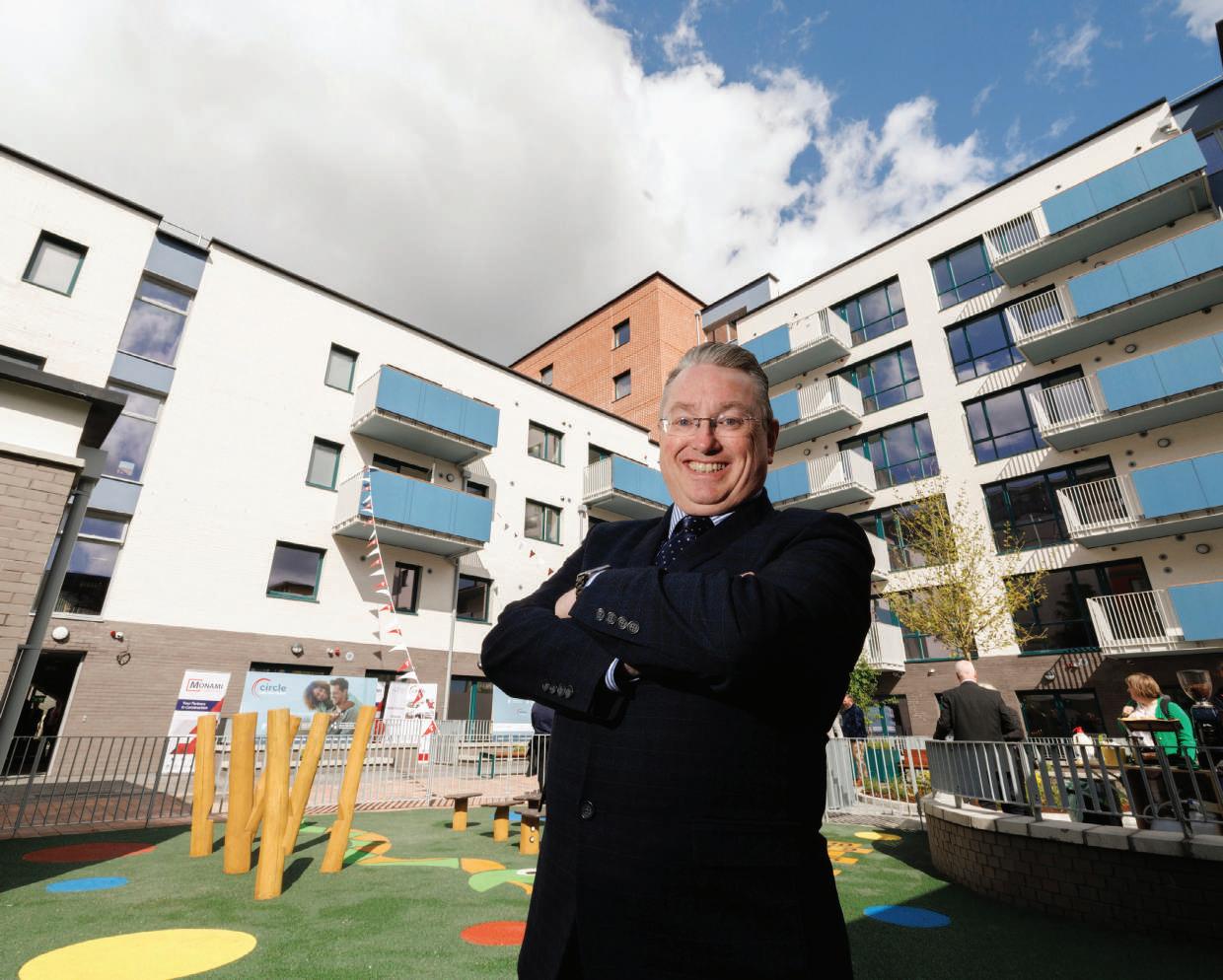
Circle Voluntary Housing Association (VHA) proudly celebrates the completion of 47 new homes at Railway Court, Dublin 1. This milestone project, achieved through an innovative €16 million partnership with AIB, marks Circle’s first direct construction initiative.
The Railway Court development stands on the former Liberty House site in Dublin’s city centre. The scheme provides a mix of one, two, and threebedroom homes for social housing on a brown-field site, which had previously been vacant for over seven years.
This project represents a significant step forward for Circle VHA, setting a new benchmark for social housing funding and delivery in Ireland. The €16 million funding deal with AIB is the first of its kind in the country, supporting the project from inception to long-term ownership under a 30-year investment facility.
Innovative €16 Million funding deal with AIB: This landmark agreement is groundbreaking, enabling the funding of the entire project, from development through to long-term ownership. The dual funding approach allows AIB to provide construction funds, which then convert into a long-term investment facility, repaid over 30 years. This ensures that Circle VHA has a single line of sight on the provision and maintenance of these homes, offering financial stability and predictability.
Circle VHA’s first direct construction project: This project marks a pivotal moment in Circle’s mission to increase its direct construction output, aligning with government and Housing For All objectives for the approved housing body (AHB) sector. With aspirations to have direct construction constitute onethird of their total home delivery this year, Circle aims to reach 50 per cent in the future.
Commitment to sustainability: The Railway Court homes are built to the highest specifications, achieving an ‘A’ energy rating. This commitment to sustainability includes the use of innovative construction methods and materials that ensure energy efficiency and reduce environmental impact. Features such as high-performance insulation, energy-efficient windows, and renewable energy sources like solar panels underscore Circle’s dedication to creating environmentally responsible housing.
Community and social impact: Railway Court significantly enhances Dublin city centre’s housing landscape by fostering a thriving, inclusive community. The development includes a residential courtyard, a play area, and a new community facility on the ground floor. These features support social cohesion and community engagement, creating a welcoming environment where tenants can connect and thrive.
Fair and transparent housing allocation: The 47 homes at Railway Court are allocated through a choicebased letting system, ensuring a fair and transparent process. This method empowers tenants by allowing them to choose their homes, fostering a sense of ownership and belonging. The allocation process is already underway, with new tenants preparing to move into their homes soon.
Strategic community development: The mix of one, two, and three-bedroom homes accommodates diverse family sizes and dynamics, contributing to a vibrant, mixed community. The new community facility on the ground floor enhances the communal living experience.
John Hannigan, CEO of Circle VHA, expressed his excitement at the launch of these new homes: "We are thrilled to celebrate these new homes at Railway Court, made possible by our groundbreaking €16 million funding partnership with AIB. This innovative funding facility ensures that we at Circle have a single line of sight on the provision of these 47 homes from breaking ground for construction to funding the long-term ownership of the homes over the 30-year investment period.
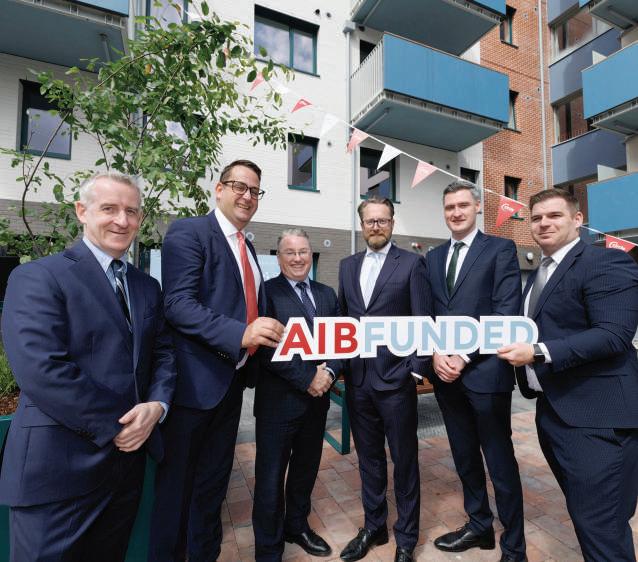
“We are grateful for the continued support from the Department of Housing and Dublin City Council and look forward to expanding our portfolio with similar projects.”
AIB’s support for this project reflects its broader commitment to the social housing sector as part of its Environmental, Social, and Governance (ESG) strategy. AIB has a long-standing relationship with Circle VHA, with approximately €60 million in borrowing from the bank. This new funding facility represents a unique dual approach, providing funds for construction and committing to long-term investment.
The Railway Court development is a significant addition to Circle VHA’s expanding portfolio, which includes over 2,500 managed homes nationwide. Locally, Circle VHA manages 109 homes in the nearby Sean Treacy and Peadar Kearney developments. Through this new development Circle is further embedding itself in the community and demonstrating a long-term commitment to addressing housing needs in Dublin. With two more construction projects currently underway and several in the planning stages, Circle is poised to
make a substantial impact on Ireland’s social housing landscape.
The completion of Circle VHA’s Railway Court project is a testament to the power of innovative funding and sustainable construction in addressing Ireland's affordable housing crisis. By delivering 47 high-quality, energyefficient homes in Dublin city centre, Circle VHA is not only providing immediate relief to families in need but also setting a precedent for future developments. This project exemplifies how strategic partnerships and a commitment to sustainability can transform the social housing sector, ensuring that more families across Ireland have access to safe, affordable, and environmentally responsible homes.
T: 01 407 2110
E: info@circlevha.ie
W: www.circlevha.ie
The North’s new Minister for Communities, Gordon Lyons MLA, outlines his strategic priorities, including the finalisation of a longawaited housing supply strategy.
The Department for Communities has a broad remit of responsibilities – from languages to heritage, sport to culture, benefits to building safety, arts to poverty.
Within its spectrum of diverse issues are many of the foundations which support and enrich people’s lives.
Housing is a significant aspect of my department’s work, and I have stated this will be a key priority for me. This has been reflected in the range of visits, meetings and events I have attended as Minister.
In my engagement with the Housing Executive and housing associations, I

have seen the passion and dedication which exists – the organisations doing fantastic work, and the outstanding staff who are focused on delivering.
It has also been my privilege to be welcomed into people’s homes. Hearing first-hand from individuals about the range of services we support – and the profound difference that high-quality housing makes.
Yet, I am acutely aware of the challenges we face, the realities of the budget position, and the housing situation in other locations, where problems have escalated to the point where the entire system is under significant strain. I am determined to
address this and deliver in this area.
It was with this in mind that I outlined my housing priorities.
These are to:
• bring forward a Housing Supply Strategy;
• put the Housing Executive on a more sustainable footing;
• build more social and intermediate homes;
• improve the response to homelessness; and
• protect the Supporting People programme.
Minister for Communities, Gordon Lyons MLA
It is vital that, as a society, we recognise the value of social housing as a public good and a long-term investment in our infrastructure and our economy, as well as a means of addressing housing need.
I will shortly complete work on a detailed and comprehensive Housing Supply Strategy. The challenges that face us occur across the whole housing system and the solution will require action across Executive departments. This must be a crossdepartmental strategy, and I will bring this before the Executive for approval very soon.
Efforts have been ongoing for a number of years to put the Housing Executive on a more sustainable footing. I am determined to get this done. I am actively pressing this issue with the Northern Ireland Executive and the UK Government, to get a result which will enable the Housing Executive to deliver much-needed investment in its homes, and even begin to build again, above and beyond its innovative six-home passive house pilot project, which is expected to complete this summer.
I have outlined my disappointment that this year’s capital funding allocation does not allow me to deliver the 2,000 new social home starts that are needed this year. My department has received a significant capital budget, but most of that is required to fund the completion of homes started in previous years.
Around 5,700 social homes are currently under construction, with 1,400 of those expected to be allocated to people on the waiting list this year. But the impact of this year’s funding shortfall will be felt by people on the waiting list next year, and the year after that.
An additional £20 million for new starts in the Executive’s June monitoring allocations is welcome news.
Yet, using all the options available to me, my department, with the Housing Executive and housing associations, we are likely to be severely constrained in the number of new starts we can afford. That has consequences for our construction sector, our social landlords and most importantly, the growing number of households in need of social housing.
It is vital that, as a society, we recognise the value of social housing as a public good and a long-term investment in our infrastructure and our economy, as well as a means of addressing housing need.
I have focused attention on other types of affordable housing other than social housing. Co-ownership has helped more than 33,000 families into home ownership over 45 years. I will work to secure long-term funding for it over the next year. I am particularly interested in innovative models to help families on lower incomes who cannot access social housing, such as intermediate rent. I was very proud to launch the search for an intermediate rent operator recently, and I look forward to seeing the development of this new type of affordable housing over the next few years.
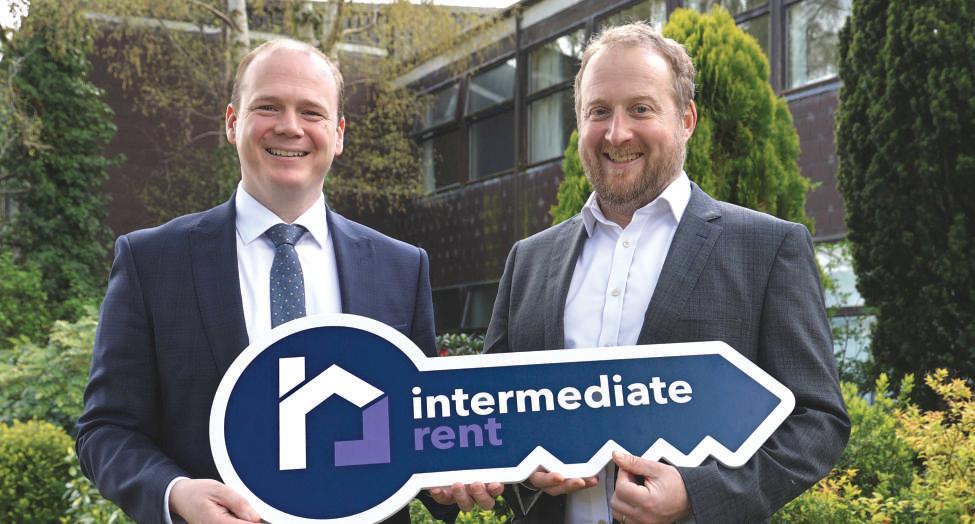
I want to prevent homelessness wherever possible and ensure homelessness is rare, brief and non-recurrent.
We have an immediate issue with the use of non-standard temporary accommodation. That is children not near their schools, people away from families and support networks, and people unable to get to work. This is not good for families who need the security of their own homes, and it is very expensive.
Work is ongoing with the homelessness sector, civic society, statutory organisations and residents, with the involvement of government at all levels, to identify issues which cause homelessness and to find ways to address them. I am particularly interested in the development of the ‘Complex Lives’ approach lead by Belfast City Council. This is longterm work to fundamentally change systems which give rise to homelessness, and to change our response to it. However, the short-term focus must continue to be supporting those currently in crisis, and I commend the organisations involved in this effort.
The Supporting People programme has an extensive reach across our society: it helps older people to thrive in sheltered accommodation, people with disabilities or mental health issues who need support to live independently, young people who have had a difficult start in life, and people who need support to help them out of homelessness.
The public and voluntary sectors have a lead role in delivering these housing support services, which, in turn, have a preventative function in keeping people out of hospital or institutional care. These are services to be proud of, which is why I have prioritised the programme for additional budget both last year and this, in recognition of increasing costs.
Additional funding in the June Monitoring round for both the Supporting People programme, and homelessness interventions, underlines the cross-departmental commitment to addressing these issues.
I am aware that housing impacts our whole society and our economy. Adequate housing is a collective effort which involves government at all levels, a broad range of stakeholders, and – perhaps most importantly – the communities themselves.
We have invested significant sums in new build homes, in recognition of the difference that good quality homes make to people’s lives. Yet, I acknowledge the scale of the housing need which exists in our society and that it is a problem which will grow if we do not make the right interventions.
I fear that we will be dealing with constrained budgets for the foreseeable future, and the status quo just is not acceptable. Clearly, we need to do things differently – and uncover new solutions. The challenge is to find innovative and radical approaches to the problems we face. This conversation is taking place with a range of stakeholders in both the public and private sectors.
Intermediate rent, which will deliver homes for rent at below market rates, is one example of this. Work is ongoing to identify and develop other ideas, with input from across the sector.
There are no quick or easy fixes, and a collective, collaborative effort is required in order to make a lasting difference. It is my hope that we can direct this effort in new ways, and develop creative solutions to our housing issues, for the benefit of the people of Northern Ireland.

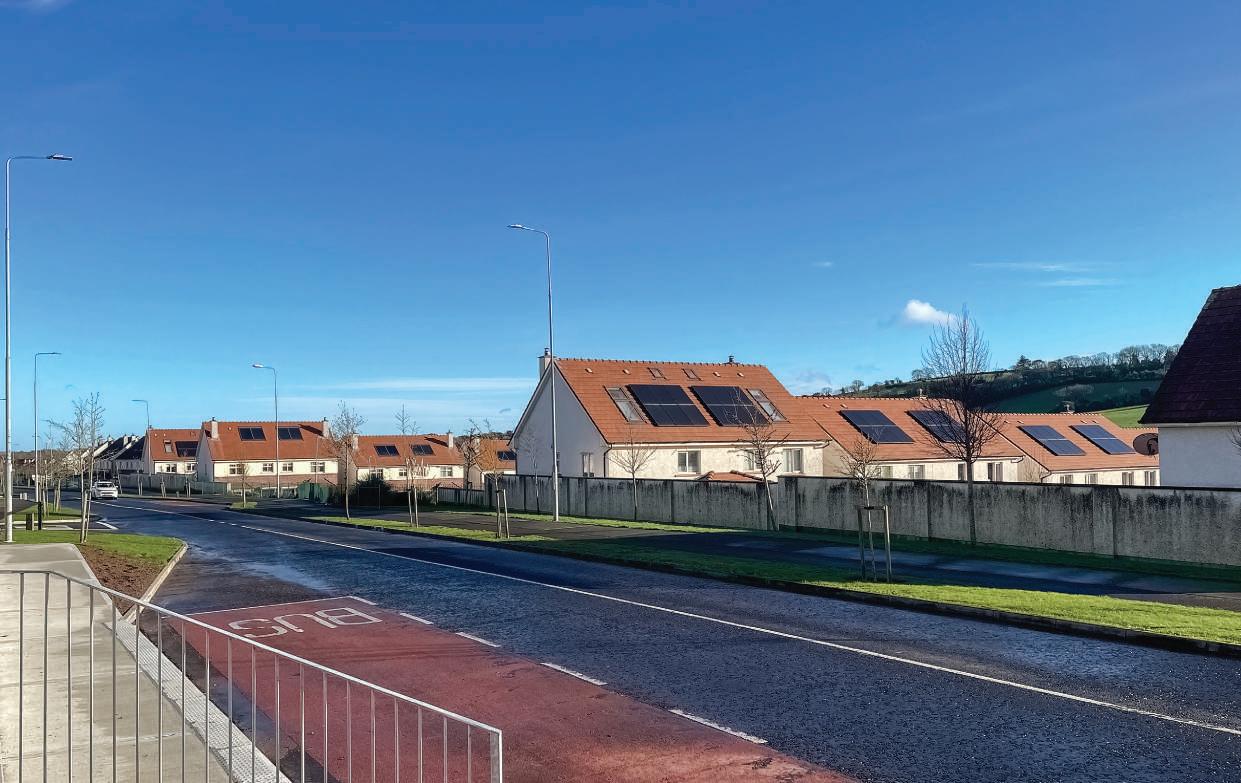
Introduction of government subsidies, integrated district approaches to developments, and eradication of energy poverty are among the requirements facing EU member states under the Energy Performance of Buildings Directive.
The revised Energy Performance of Buildings Directive, which entered into force on 28 May 2024, must be adopted by the State by 29 May 2026.
The Government is obliged, under the aegis of Article 17 of the Directive, to support compliance with minimum energy performance standards via the provision of appropriate financial measures, in particular those targeting vulnerable households, people affected by energy poverty or, where applicable, living in social housing, in accordance with Article 24 of Directive (EU) 2023/1791.
Furthermore, the State is to be tasked with providing technical assistance, including through one-stop shops with a particular focus on vulnerable households and, where applicable, people living in social housing, also in accordance with Article 24 of Directive (EU) 2023/1791.
The Directive further says that integrated district or neighbourhood approaches are necessary as they “help to increase the cost-effectiveness of the renovations required for buildings that are spatially related such as housing blocks”.
“Such approaches to renovations offer a variety of solutions at a larger scale,” the Directive states.
“Member states should encourage financial institutions to promote targeted financial products, grants and subsidies to improve the energy performance of buildings housing vulnerable households, as well as to owners in worstperforming buildings with multiple residential building
units and buildings in rural areas, and other groups for whom access to financing is difficult.”
To enable this, the Directive states that the European Commission should adopt a voluntary framework to help financial institutions target and increase lending volumes in accordance with the Union’s decarbonisation ambition and relevant energy targets.
Asserting that inefficient buildings are “often linked to energy poverty and social problems”, the Directive outlines that the Renovation Wave Strategy should “leave no one behind” and seize it as “an opportunity to improve the situation of vulnerable households, and a fair transition towards climate neutrality should be ensured”.
“Financial incentives and other policy measures should as a priority target vulnerable households, people affected by energy poverty and people living in social housing, and member states should take measures to prevent evictions because of renovation, such as caps on rent increases.”
In early 2024 former Green Party MEP Ciarán Cuffe, who played a key role in shaping the legislation in the European Parliament, said: “This Directive will unlock public and private money and direct it to renovations, and we have set a clear policy framework for this.
“The savings with this law will also be considerable: Guidehouse estimates that between 21 and 44 bcm of gas or €11 billion per year may be saved with the EPBD. This means significant savings for consumers and, crucially, reduced dependence on fossil imports from Russia.”


Construction is currently one of the most important sectors in Ireland where a range of new skills are needed to deliver on the Government’s ambitious targets for climate action and Housing for All.
Research commissioned by SOLAS, the further education and training authority, has indicated Ireland needs over 50,000 additional construction workers to build and retrofit all of the homes projected for 2030.
As well as the importance of having a steady stream of new entrants to the sector, construction workers will also require upskilling in newly emerging aspects of construction such as nearly zero energy building (NZEB), retrofitting and modern methods of construction (MMC). Equipping the construction sector with the skills to build new homes to a high energy standard and retrofit homes will be central to ensuring that Ireland can meet the huge demand for housing in the coming years.
Further Education and Training (FET) is uniquely placed to respond to the critical skills needs in this state. It is attracting a greater share of school leavers, serving as a resource for everyone to upskill and reskill throughout lifetimes and careers, and is becoming the go-to place for the development of specialist skills. The growth and demand for FET and apprenticeships is further evidence that it has become a valuable and recognised learning with recent figures indicating that one-in-10 adults in Ireland – around 423,000 people – were engaged in NZEB and retrofit training, construction skills schemes, apprenticeships, or other FET activity in 2023.
SOLAS is driving and supporting transformation in the sector to meet Ireland’s construction skills needs through significant investment in the expansion of provision at local level through 16 Education and Training Boards (ETBs) across the State.
Working in collaboration with the National Construction Training Campus at Mount Lucas, ETBs, the Department of Further and Higher Education, Research, Innovation and Science, and a broad range of construction stakeholders, SOLAS is enhancing the construction training infrastructure and implementing new and comprehensive construction skills pathways around MMC, NZEB, Certified Passive House construction and digital construction skills.
Green Skills for Construction through NZEB and retrofit upskilling provision are part of a broader suite of green skills FET programmes developed to ensure that every FET learner is equipped with the skills to become agents of change in the area of climate action. Led by the Green Skills for FET 2021-2030 Strategy, SOLAS is supporting the training and upskilling of those in construction occupations in the latest green technologies.
SOLAS is also supporting ETBs to develop specialist centres of skills development, with the ongoing national roll-out of NZEB centres of excellence seen as a significant step towards upskilling the amount of construction workers required to deliver on the Government targets to retrofit 500,000 homes by 2030. By the end of 2023, almost 5,000 people had been trained in essential NZEB and retrofitting skills, with a continued focus on easier access and simplified pathways to broaden access to construction upskilling. Developed with industry for industry, courses range in length from one to a handful of days, with evening and weekend provision available across most programmes. Time spent off-site for upskilling is minimal with short, flexible and hybrid offerings available at little or no cost.
NZEB FET provision has recently been promoted through a national information campaign led by SOLAS, together with the centres of excellence. Targeted at the construction industry, the campaign signposted workers to upskilling opportunities at local level. This marked the first national campaign of its kind, coordinating all centres of excellence across the country, from City of Dublin ETB, Cork ETB, Laois and Offaly ETB, Limerick and Clare ETB, Mayo, Sligo and Leitrim ETB, to Waterford and Wexford ETB.
As part of our ambitious FET Strategy to drive significant change, reform and transformation across the FET system, SOLAS is supporting a number of initiatives across the country to widen

participation and inclusion in NZEB and retrofit upskilling provision. In 2023, the National Construction Training Campus at Mount Lucas, under the provision of Laois and Offaly ETB, launched the Mobile NZEB Training Unit, which travels to construction sites across the country bringing upskilling opportunities onsite, and providing easier access to those that need it most.
The mobile unit is also travelling to secondary schools to introduce students to NZEB and MMC from an earlier stage. NZEB taster modules have been piloted over the past few years for Transition Year (TY) students in a number of second level schools across the country, with great opportunity for future integration into the senior cycle curriculum.
At the forefront of construction training in Ireland for MMC, retrofitting and NZEB, the National Construction Training Campus will be home to Ireland’s first ever Demonstration Park for Modern Methods of Construction – this state-ofthe-art facility will be key to ensure that we can provide the necessary critical construction skills for the future.
Additional developments include the delivery of upskilling opportunities in retrofitting for people in custody who are close to release. Together with key partners in the Prison Education Taskforce and Laois and Offaly ETB, SOLAS have developed a pilot programme to support rehabilitation and
employment of those post-release. This initiative is taking place on site in the Midlands Prison in Portlaoise and Wheatfield Prison in west Dublin, under the provision of Laois and Offaly ETB’s National Construction Training Campus at Mount Lucas. SOLAS is also supporting Laois and Offaly ETB’s collaboration with Saint Andrews Resource Centre to deliver construction skills and pathways to employment in Dublin’s south inner-city. These initiatives demonstrate the crucial role FET plays in widening access to accredited upskilling opportunities while driving future skills in sustainable construction.
Looking to the future, SOLAS will continue to power transformation in the FET sector, providing the necessary skills for workers to ensure that they have sustainable roles which will help deliver on our targets under Housing for All and climate action to ensure the sector is fully equipped to meet Ireland’s critical skills needs.
Find out more about SOLAS’ role in driving future skills in NZEB and retrofit:
W: www.solas.ie and www.thisisfet/nzeb
Sinn Féin housing
Ó Broin TD: ‘We could achieve a hell of a lot’

Surrounded by a dozen piles of housing policy documents, Sinn Féin housing spokesperson, Eoin Ó Broin TD sits down with Ciarán Galway to outline his critique of government policy and articulate the alternative.
Reflecting on the fact that Sinn Féin
President Mary Lou McDonald TD has repeatedly said that “housing will be the party’s number one priority” for 2024, and emphasising the significance of that, Ó Broin begins with a critique of government policy.
“One of the big problems we have at the minute is the Government’s social and affordable housing targets are too low and they are not being met, but also, too much of the stock that they are delivering, particularly on the cost rental and affordable purchase side, is too expensive,” he summarises succinctly.
Consistently in the Dáil and in the media, however, Sinn Féin has been challenged to publish its alternative housing plan.
Indeed, speaking with the Housing Ireland Magazine Housing Minister Darragh O’Brien TD observed: “He [Eoin Ó Broin] told the Sunday Independent
16 months ago that he was just about to publish it and he has not.”
Addressing the absence of his party’s plan from the public sphere as yet, and the related criticism that this attracts, the Teachta Ó Broin is unperturbed.
“I like to remind people that [Minister] Darragh O’Brien had no housing policy when he was an opposition – not a single piece of paper – and it took him a full year as Minister for Housing before he launched his plan,” he retorts.
Sinn Féin’s alternative housing plan, he maintains, will be published “well in advance of the general election”, and possibly as early as summer 2024. Its targets for unit delivery, allied to affordability would be “fundamentally transformative”, he adds.
“We were holding off until we got The Housing Commission’s report and some other information from government that is important. If we are going to map out a five-year plan, we want it to be fully
costed; something which even the Government’s own housing plan is not.”
Rejecting the narrative that the distinction between government housing policy and Sinn Féin housing policy can be distilled down to a difference in emphasis between home ownership versus social and affordable housing, Ó Broin argues that “the number of new homes that are coming to market for people to buy each year has flatlined”.
“Last year [2023], approximately 8,900 new-build homes went on the market for people to buy, compared with about 8,800 in 2019. That figure has not moved; it dipped a bit over Covid and went up a bit in 2022.
“Even though the overall increase in supply has been tracked from 2019 to now, the number of those homes that are for people to buy is falling



dramatically. It has gone from around 50 per cent of all new homes to less than 20 per cent.”
While Housing for All aims to deliver an average of 11,800 new homes for owner occupiers, and 6,500 for private renters, in 2023 it delivered approximately 8,500 for each. This, he argues, is a consequence of an increasing number of new builds being purchased by buildto-rent institutional investors.
“The private rented sector is playing far too big a role,” he insists. “In fact, it is outpacing the owner occupier sector, and it is exceeding its targets while the owner occupier sector is missing its targets.
“Homeownership is continuing to decline in real terms, as well as in percentage terms and what a Sinn Féin government wants to do is reset the balance away from institutional investors in the build-to-rent private rental sector in favour of regular folks buying homes in the private market, buying genuinely affordable homes from local authorities and approved housing bodies, and also getting access to affordable rent and social rent”.
While acknowledging that “we need a private rented sector”, Ó Broin believes that it needs to shrink as a proportion of the overall housing market. “Our private rental sector has grown too large, too dramatic, too insecure, and it is increasingly unaffordable. It needs to be professional; it needs to be secure; and its prices need to be moderated.”
Pointing to “more fundamental changes” and suggesting that he does not know “where government wants the housing system to be.”
“Our vision of where we want the housing system to be after five or 10 years – will be different. Similarly, the policies we are going to introduce right across the spectrum will be fundamentally different from what this government or its predecessors have done.”
When asked what elements of the Government’s housing plan – Housing for All – if any, that a Sinn Féin government would retain, his response is emphatic: “At the end of a five-year term of office – if Sinn Féin gets into government – there will be very little that will resemble what is there in the system now.”
While acknowledging that elements of policy, such as cost rental tenure and affordable purchase, are “good in
“Darragh O’Brien had no housing policy when he was an opposition –not a single piece of paper – and it took him a full year as Minister for Housing before he launched his plan.”
Sinn Féin housing spokesperson, Eoin Ó Broin TD
principle”, he feels that “the Government has mangled them beyond belief”.
“We are going to revert back to the original ideas. This government did not invent cost rental, for instance. In fact, cost rental existed in the 1920s and the National Economic and Social Council (NESC) has been arguing in favour of it for the last 20 years,” he says.
Outlining his ambition to “get rid of a lot of the bad schemes”, the Sinn Féin frontbencher references a Department of Public Expenditure, NDP Delivery and Reform (DPENDR) briefing from midMay 2024 – Key Considerations for Future Delivery Landscape. In the briefing, DPENDR recognises the “strong momentum in overall housing delivery” but notes that government is “still not achieving social/affordable targets with demand outpacing delivery”.
In the context of ramping up delivery to “circa 50,000 units per year”, and supporting housing activation in the long term, the document lists five policy levers. The first of these suggests “divesting capital way from upfront untargeted subsidies and toward infrastructure investment to enable housing”. The ‘untargeted subsides’ referenced include the First Home Scheme and Help to Buy.
Asked if Sinn Féin would bring an end to Help to Buy, Ó Broin responds assertively. “Absolutely. We have made it very clear we want to end Help to Buy and replace it with large volumes of publicly provided homes for people to purchase at prices between €250,000 and €300,000.
“Half the money that is spent on Help to Buy goes to people who do not need it. That is [supported by] independent research from the Oireachtas’
Parliamentary Budget Office and from Mazars [on behalf of the Department of Finance]. One-third of the people who receive it do not need it – they already have a sufficient deposit and a mortgage to purchase,” he says.
While conceding that the balance of people are feeling the benefit of Help to Buy, he insists that the scheme is artificially inflating house prices meaning that “lots of other people are locked out of the market”. Articulating this point to the electorate, however, may prove challenging ahead of the general election.
Faced with the reality that political opponents will portray his party’s proposals as having the potential to undermine first-time buyers, as well as demonstrating the party’s alleged ideological opposition to homeownership, he confirms that he would seek to replace the scheme rather than simply abolish it.
“We would replace it, in the first instance, with a really ambitious affordable purchase programme through local authorities and approved housing bodies, alongside other measures on the private sector side to activate more private sector supply, but at more moderate prices,” he comments.
Turning to social housing delivery, Ó Broin highlights that overall social housing need is increasing “because the number of new social homes that have been produced each year is about the same as the number of new households coming on to social housing waiting lists each year”.
Indeed, in March 2024, The Housing Agency published the 2023 Summary of Social Housing Assessments (SSHA) which revealed that a total of 58,824 households were assessed as qualifying for social housing supports on 1 November 2023 but were not having

their needs met. This represents an annual increase of 1 per cent (982 households) following an increase to baseline social housing income thresholds by €5,000 for all local authorities.
“The problem is that government only counts part of the need; the local authority lists. It should also count HAP and RAS tenants. Government estimates that we need about 50,000 to 60,000 new social homes. The actual real level of need when you include HAP and RAS tenants, is close to 140,000.
“So, the Government is producing only about half the number of homes that are needed to start reducing existing need and to meet the new need that is coming in. They keep making this stupid statement saying: ‘It is highest level of social housing since the 1970s.’ That is true, but the population has doubled, and the level of need has increased.
“If government wanted to actually meet social housing need in the way we did in the 1970s – when, in some places, we had a surplus – it would have to double the output [of social housing delivery],” he says.
Having identified the challenge, Ó Broin then articulates his solution. While acknowledging the role of housing benefit as a short-term necessity, he calls for a “controlled unwinding” of the reliance on rental subsidies as a form of long-term support via the introduction of affordable leasehold purchase.

“With respect to tenant purchase, tenant purchase has real value. The problem is when the properties are sold into the rental sector or the private forprofit market. We have long argued that we will continue tenant purchase, but we will not sell the land.
“Instead, we will give you free, indefinite use of the land through a legally binding covenant for you, your children, and your grandchildren. However, if you want to sell, you will have to sell back to the local authority at the discounted price, index-linked for inflation.
“That way you get the benefit of tenant purchase – an income mix within working class communities and intergenerational security of tenure –which are really valuable things, while never losing the stock to the private sector.”
The proposed affordable leasehold purchase scheme is a lightning rod for criticism. Speaking with the Housing Ireland Magazine, Minister for Housing Darragh O’Brien TD referenced the proposal as “a Cuban style model of housing that they want to bring in”.
Responding to a suggestion that his political rivals could portray the scheme in a manner that implies that people will not own their own homes, Ó Broin is undeterred. “The interesting thing, of course, is that under the Government’s Help to Buy scheme, you do not own your home because they own €100,000 worth of equity in it.
“I have conversations with people all around the country about this. The overwhelming majority of people want
to buy a home for them, their children, and their grandchildren, at a price they can afford. They are not, in the first instance, buying it and thinking of the windfall gains in 20 years.
“Our scheme allows them to do it; they own the home. The bricks and mortar are theirs, but the land is the State’s, as is the cost of site servicing. Whether you buy an affordable home or you acquire your tenant purchase home, that property is yours and you have all the same rights as any other owner. The only difference is that the State owns the land.”
In May 2024, comments made by major developers at a property, infrastructure and investment conference suggested that a radical new direction for housing policy taken by any new government would create uncertainty and slow down the sector.
Agreeing that “industry is entitled to its view”, the Sinn Féin housing spokesperson observes that “one of the most successful residential developers in the country – Michael O’Flynn – is calling for a radical reset”.
This is a reference to O’Flynn’s – the Chairman and CEO of the O’Flynn Group and a member of The Housing Commission – interview with RTÉ Radio 1’s Today with Claire Byrne, during which he said: “The vast majority of what we [The Housing Commission] are proposing here needs to be looked at and acted upon urgently. This is not a case of more of the same, this is a case of we need to make changes and we need to make them now.”
Expanding on this point, Ó Broin references his own engagements “with very large PLCs, the large private operators, or the SMEs”, most of whom he says, “are telling me that the current system is not working”.
“If we want half of all new homes to be public – social, affordable rental, and affordable purchase – that means the other half have to be private. That means private finance, private developers, private builders, and private land have to deliver those private homes – though far more owneroccupier than rental.
“The big failing of government is they have put all of their eggs in the demand side basket, and it has just been incredibly inflationary. It fuelled the wrong kind of investment capital, to operate in a much more speculative manner, which pushes up all-in development costs.

“We want to shift the focus completely away from the demand side subsidies, and towards what I call risk reduction, cost reduction, and activation measures, at the early stages of development, particularly around those sites that could deliver really high density.”
Providing his analysis of the Report of The Housing Commission, Ó Broin summarises that “very clearly, it is making some very radical propositions in terms of how to fix the things that are not working”.
“Some of the headline stuff is really important, the very fact that they have named the deficit [of unmet demand] and put a number to the deficit is really important,” he remarks.
The Housing Commission estimates that, at the time of Census 2022, the housing deficit within the State was between 212,500 and 256,000 homes.
Ó Broin also highlights the report’s recommendation that the size of the social and cost-rental housing sectors be increased to 20 per cent of total housing stock. “Getting to 20 per cent of all housing stock means that we need 50,000 – if not 60,000 – new homes each year. Half of those need to be social, affordable rental, and affordable purchase. That gives you a sense of the scale of the challenge The Housing Commission is laying down; not just the total number, but within that the social and affordable.”
On the proposed establishment of a Housing Delivery Oversight Executive, he expresses surprise at the Housing Minister’s initial opposition to the proposal. “I think he misunderstands what they are proposing; they are not proposing a new level of bureaucracy. We have a real issue, which is that different state agencies and the private sector have different capital programmes that are not aligned to Uisce Éireann, Gas Networks Ireland, ESB Networks, our local authorities, our approved housing bodies, and the private sector developers.
“If I understand the proposition right, it is more about a statutory mechanism to bring those different groups together, to align their medium- to long-term capital programmes and to remove obstacles in the short term. Certainly, that is something worth considering.”
“Within
Asked how he squares the comments made by chair of The Housing Commission, John O’Connor, that the “most important thing now is consistency”, with the Commission’s call for a “radical strategic reset of housing policy”, Ó Broin interprets O’Connor’s comments as highlighting “the fact that there has been very little consistency over the lifetime of this government or before”.
“Arguing for consistency does not mean they are arguing against change. They are arguing for very profound change. But once you make the change, you stick with the changes that you are implementing.”
In the context of The Housing Commission’s suggestion that a significant increase in the annual housing delivery target would require a “substantially higher” investment, senior government figures have argued that Ireland must become a “welcoming home” for international institutional investors.
Simultaneously, the Commission asserts that as “a consequence of [housing] policy failures... Ireland has, by comparison with our European partners, one of the highest levels of public expenditure for housing, yet one of the poorest outcomes”.
Asked about the role that international institutional investors can play in this context, Ó Broin dismisses what he regards as a false dichotomy. “The Government will try to say that it is for homeownership and that we [Sinn Féin] are for social homes, or that they are for private investment, and we are against it. Neither is accurate because we have been arguing all along that it is about the right kind of private sector investment.”
“I talk to a lot of investment folks. [Sinn Féin finance spokesperson] Pearse Doherty TD does the same. All they want to know is ‘what is the plan’? When they hear us saying that in
addition to prioritising the largest public housing programme in the history of the State, we want to create a stable environment for long-term, low-yield investment in the private sector to deliver that other 50 per cent, the proposition then becomes attractive to them. After that, it becomes about the question of the what, the why, and the where.”
In an interview with eolas Magazine in late 2023, Sinn Féin’s Matt Carthy TD suggested: “Some of the challenges are so big... that, of course, it will take more than a five-year term in government. I also think, to be quite frank about it, if we do not solve housing in one term of government, we will not get a second.”
Asked if he agreed with his colleague’s assessment and whether it was realistic that a challenge such as the housing crisis could be solved in a single term of government, Ó Broin insists that his party “must be very upfront with people” across all the portfolios.
“We have to set out very clearly to people what is deliverable year-on-year, what is deliverable over a full term, and what we would seek to deliver if we got a second term,” he says.
In housing specifically, he details his projected timelines for Sinn Féin’s alternative plan to take effect. “Within six months we could start to get the homelessness numbers down. We could start ramping up the delivery of social and affordable homes very significantly by year two, and then exponentially by years four and five.
“Very significant reform of the Residential Tenancies Act 2004 and changes to rent regulation could be done immediately, so that people would see our intentions.
“Within five years we could achieve a hell of a lot that would set us up to go back to the public and say: ‘Look at what we have done over the last five years, let us finish the job’,” he concludes.


Purchasers opt for newly built homes for various reasons. Whilst we hope for perfection in the completion of such properties, this is not always the case. Occasionally, defects become apparent, and purchasers must then look to the options available to them to have such defects rectified writes Conor Dunne, Associate, Fieldfisher Ireland LLP.
There are two main types of defects which may arise in newly-constructed homes, namely:
• Patent defects are those which become apparent initially. For patent defects, purchasers may rely on breach of contract claims against contractors and other professionals involved in the property’s construction. The law surrounding collateral warranties is also available to extend a claim to other persons.
• Latent defects are those which arise where a defect, caused by defective design, materials, workmanship, or supervision during construction,
existed when the construction was completed but did not become apparent initially.
Purchasers should consider the options available to them to help protect themselves against the unforeseen, potential high costs involved in latent defects which become apparent following completion of their property.
It is standard practice for defects to be excluded from property insurance policies. Latent defects insurance is an additional insurance policy which purchasers can avail of which typically provides protection against defects in
design, materials or workmanship which become apparent post-completion.
A primary benefit of these policies is that there is no requirement for fault or misconduct on the part of the Builder. This is valuable when compared with the practical difficulties which can arise in proving fault in litigation for defects.
Unfortunately, these policies do have their drawbacks. Notably, they can be costly. Often, such policies also require a technical audit assessment to be carried out to provide cover, which may be required prior to building work beginning.
Some providers may require sight of the

“Purchasers should consider the options available to them to help protect themselves against the unforeseen, potential high costs involved in latent defects which become apparent following completion of their property.”
laying of the foundations to provide cover. As a result, such policies may not be a viable option where construction has already begun on the property or is nearing completion. A greater issue arises where lending institutions require policies be in place as a pre-condition to providing loan facilities. Where construction has begun without supervision from the relevant provider or is nearing completion, the lending institution may accept a structural defects indemnity from the builder. It is often the case that the lending institution will also require an Architect’s Certificate confirming supervision or inspection by the Architect of the construction at various stages.
In the UK, Collateral Warranties are the industry standard. Statutory provisions also apply:
• The Defective Premises Act 1972 (‘the 1972 Act’) requires that those constructing any dwelling do so in a workmanlike manner using proper materials so that, when completed, the dwelling is fit for habitation.
• The Building Safety Act 2022 (‘the 2022 Act’):
o Certain provisions of the Act came into force from 28 June 2022, such as a provision which now allows property owners to make structural defect claims for pre-existing buildings up to 30 years after the property's completion.
o The Act has extended the mandatory warranty period on newly built homes from 10 years to 15 years. Under the Act, where a developer does not provide such a warranty prior to selling the property, they will be liable to pay either a fine of £10,000 or 10 per cent of the sale price, whichever is greater.
o The 2022 Act extends the limitation period in which litigants can bring a claim under the 1972 Act.
o The 2022 Act also introduces a right of action against any person who “takes on work in relation to any part” of a property. This allows for a larger scope for potential liability, extending the opportunities for litigants to bring claims under the 1972 Act which would have been statute-barred prior to these amendments.
In France, property purchasers are afforded protection against latent defects by way of a legal warranty. Under French civil law, all building work is guaranteed for up to 10 years, regardless of change of ownership. However, this warranty does not cover all work for the entire 10-year period. In the first year there is a comprehensive guarantee, whilst in later years only major defects are covered.
The legal warranty of quality will only be valid where a defect meets certain conditions. It must:
1. have existed at the time of the sale;
2. have been unknown to the buyer;
3. be serious and result in the property being unfit for what a reasonable buyer would have expected to use it for; and
4. be latent.
Under the legal warranty of quality, a purchaser may obtain a reduction in the sale price or annulment of the sale where there are serious defects. However, there is a limitation period of two years within which any action for the enforcement of the warranty for latent defects must be taken.
In Germany, extensive warranty rights are granted to purchasers of newly built properties. This includes the assignment of warranty claims against companies involved in the construction.
Liability for defects will arise where the work is not of the agreed nature, such as where there has been use of materials which were not agreed upon, or where the property is not suitable for the use envisaged in the contract.
Purchasers of newly constructed properties need to determine from the outset what type of defect insurance or warranties will be offered by the builder and ideally, prior to the commencement of construction.
W: www.fieldfisher.com/en-ie/locations/ireland


Principal Architectural Advisor and Head of the Strategic Delivery and Urban Advisory Unit in the Affordable Housing Division of the Department of Housing, Local Government and Heritage, Martin Colreavy, discusses the importance of a plan-and-design-led process for the delivery of affordable housing.
Describing the on-going challenges of climate change as the “ultimate sustainability project” for the Department, Colreavy says that sustainable residential development and compact growth are the apex of the solution, both nationally, and across Europe.
Project Ireland 2040 – encompassing the National Development Plan (NDP) and the National Planning Framework (NPF) – serves as the guiding policy framework for compact growth, with a particular focus on brownfield development.
Underpinning this, Housing for All, the Government’s housing plan to 2030, has an overarching objective of providing every citizen access to good quality homes, which can be rented or
purchased at an affordable price, built to a high standard in the right place, and offer a high quality of life.
Housing for All outlines four pathways to a more sustainable housing system.
• Pathway 1: Increasing affordability/home ownership;
• Pathway 2: Eradicating homelessness/improving social housing delivery;
• Pathway 3: Increasing new housing supply via mechanisms such as land value sharing, urban development zones, and the Croí Cónaithe (Cities) Scheme;
• Pathway 4: Vacancy and existing stock (Towns Centre First/Croí Cónaithe Towns).
Colreavy’s work mainly centres on Pathway 1 and affordability, but he emphasises that within the Department’s affordable housing division, there are correlating functions beyond this pathway that also focus on affordability, such as vacancy, viability funds, and mechanisms to increase overall residential supply, for example.
Articulating the vision of the Department, Colreavy echoes the words of Minister for Housing Darragh O’Brien TD that it wants to avoid certain unsustainable settlement patterns of the past and move towards more compact and sustainable growth.
On successes to date, he insists that current progress has not happened by accident, and points to a long tradition in Ireland of looking outwards towards
“A strategic plan-and-design-led approach to housing is critical.”
European counterparts. Citing the regeneration of the Hamburg docklands in Germany, and the Hammarby Sjöstad regeneration project in Stockholm, Sweden, as exemplars of housing sustainability during the early 2000s, he says: “At the same time we were investing in this consideration of quality and design through policies around urban design, adaptive reuse, and how sustainable mixed use neighbourhoods work.
“We developed and refined guidelines over and after the noughties, and more recently, we have invested in thinking again around the second iteration of quality housing through the Sustainable Residential Development and Compact Settlements Guidelines for Planning Authorities, and our own examination of affordable delivery best practice.”
Three years into its existence, Colreavy says that his division – led by Assistant Secretary Caroline Timmons – is extremely active, particularly in larger strategic development areas such as Clonburris and Cherrywood in Dublin, and Cork City Docklands.
“The scale of those projects provides certainty of pipeline. They provide a certainty of master planning approach where we can address blended investment.”
Colreavy explains that this master planning has also been key to unlocking private sector investment and leveraging public funds for other projects of either a medium-large scale in nature.
Outlining work with a multitude of delivery partners across the affordable housing sector, he believes that the Department is making a difference on sustainable communities and by extension, tenure mix.
Colreavy commends The Housing Agency’s Social, Affordable, and Co-operative Housing in Europe 2020 publication, which offered an assessment of how other countries were dealing with brownfield development and infill viability challenges, will ensuring that similar projects become more realisable in Ireland.
In response, and as part of Housing for All Action 32, the Department, alongside The Housing Agency, commissioned Bucholz McEvoy Architects to assess 12 of its funded
affordable purchase and cost rental schemes across the country. This published case example work was concluded and titled Examination of innovation/efficiencies in design of affordable housing1. The purpose of this publication was to highlight how quality affordable housing can be most effectively delivered by demonstrating innovation and efficiencies in construction and design on existing projects to inform future approaches.
“Based on that, we have looked at the process of pipelining and how projects get delivered conceptually through the cost modelling, if it is cost rental, or through affordable purchase, in terms of viability to the completion stage.
“It has afforded us an opportunity to take a step back and assess the affordability schemes we are involved with nationally.”
Concluding, Colreavy says: “What we have determined from that process is that a strategic plan-and-design-led approach to housing is critical, based on an acute analysis of the local challenges and a tailored response to match. This moves away from the more routine or formulaic approach and creates a value added ‘vision’ factor.
“We have also learnt that a strong local governance approach or a dedicated champion is essential, normally comprising a multi-disciplinary team who understand the planning and design considerations of the place but who are informed by community stakeholders.
“In any housing strategy – but for affordable delivery in particular – the business case is essential. It must be comprehensive and examine both the risks and opportunities of schemes in terms of viability, cost benefit, and in some cases long-term commerciality.
“Finally, those components will not land unless there is a good delivery strategy. The methodology of implementation must be comprehensive and concise, ensuring the deliverability of the various schemes are achievable in both the short and long term.”
1. www.housingagency.ie/publications/examination-innovation-efficiencies-design-affordable-housing

The recently published ICSH 2023 Activity Report showed a continuing increase in social housing delivery by approved housing bodies (also known as AHBs or housing associations) for that year. This accounted for 47 per cent of all total social housing delivery.
Together with local authorities, almost 12,000 social rented homes were provided for households on the local authority waiting lists. The contribution of AHBs has now increased from around 20 per cent of total social housing delivery in the last 20 years to now almost half. From a low point in 2014 of just under 400 homes delivered by the AHB sector a decade ago in 2014, almost 6,000 homes, both social and cost rental, were delivered in 2023. A considerable achievement by AHBs and
their wide range of delivery partners in the public and private sectors that are essential for achieving delivery at this scale.
The sector has now an estimated 61,500 homes owned and in management and adds around 10 per cent or more each year to the long-term permanent stock of social and affordable rental housing. A smaller number of AHBs have increased their development capacity significantly in recent years particularly for family and
general needs housing as well as cost rental housing for targeted medium income groups. The outcome of this is that there are many more mixed tenure housing developments that the AHB sector is now actively involved in leading, both in the delivery and management. New considerations through planning obligations, such as the need for communal facilities are part of this, and the emerging issues of how they are funded in terms of both the construction and subsequent management. Changes to conditions relating to the CALF and CREL (with social and cost rental housing) have facilitated increased delivery to reflect market conditions. The pipeline for social housing delivery for AHBs has strengthened as well as cost rental which has had a significant number of new projects approved in recent months. This will yield increased AHB delivery of cost rental this year and in the coming years.
While there has been very strong delivery of homes for general needs and family housing, a number of other groups require further housing options. These include housing for targeted groups such as for older people, disabled and formerly homeless households. For targeted groups such as older and disabled people, housing delivery has fallen proportionally in recent years. All the funding schemes such as CAS and CALF need to be used to their maximum to ensure increased delivery to these groups so that there is not a two-speed delivery process for different groups on the waiting lists. AHBs that are able to plan and design for a mixture of household types have been successful in spreading delivery across different groups. In particular, one of the growing areas, now and in the future, is the need for age friendly housing that enables older people to age in place. AHBs have a strong record since the 1960s in providing housing for older people, whether this has been in small group housing schemes meeting local housing need, or larger schemes that have on site supports. In some cases, the role of the HSE and other providers have a central role as a delivery partner.
Figures from the ICSH Activity Report show that 1,100 retrofits have been completed since July 2022. AHBs have a high percentage of properties, according to RTB figures that are built and performing to an A-rated energy standard. A-rated new homes are now the norm within new AHB developments providing highly energy efficient homes for tenants. However, the AHB sector has a considerable number of older homes from protected structures built in the late 1800s, right through to early CAS projects that were built from 1984 even up to the advent of more specific building regulations in 1990.
The AHB stock which was developed and expanded right throughout the country since 1984 had a small number of house/apartment profiles. These include terraced housing, semidetached houses and bungalows and apartments, particularly from 1991, and the advent of the CLSS funding stream for family housing. AHBs that have undertaken retrofits have successfully used one stop shops. However, costs and financing required are still an issue as well as eligibility for retrofitting. The recent

report undertaken by the South East Energy Agency (formerly 3CEA) for the ICSH, based on a number of financial models, indicated the levels of state support required that would facilitate increased retrofitting of AHB homes, particularly those with lower BER ratings. The sector is keen to play its part in meeting climate action targets for 2030 and 2050. One other area for greater consideration for AHBs and their delivery partners is reducing the level of carbon and greenhouse gases in the production and building of a significantly increased number of social and affordable homes in the next decade. Reducing the level of carbon and greenhouse gases in the production of new homes from the current level – 30-40 tonnes of carbon for some homes – could be an important objective for AHBs and their partners to lead the way. Different housing typologies, new innovations and enhancing the circular economy in construction are central to this.
A range of other activities were undertaken by the sector in 2023 at different levels and scale. Mortgage to rent, Housing First, housing for sale, raising finance from the HFA and other financial institutions as well as continued collaboration projects in the sector have been an ongoing part of the ICSH and the sector’s work. Various mergers, takeovers and collaboration projects were also undertaken to further support an effective AHB sector. 2023 had the highest ever delivery from the AHB sector with 5,924 homes provided and provides a strong base for future delivery.
Donal McManus CEO Irish Council for Social Housing (ICSH)
The ICSH Activity Report 2023 is available here: www.icsh.ie/resources/housingassociation-activity-report-2023

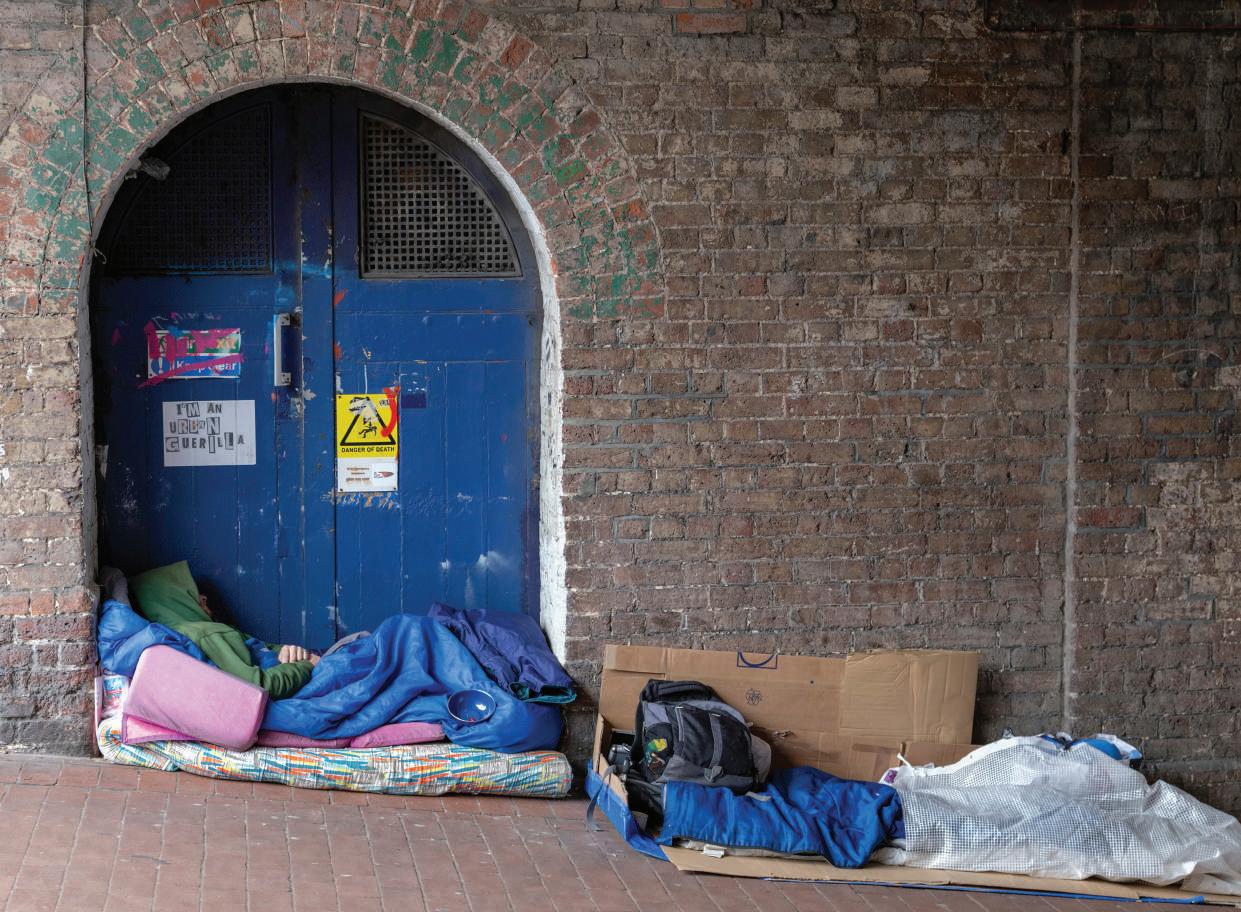
Despite efforts to eradicate homelessness across the island of Ireland, figures continue to increase both north and south.
Homelessness in Ireland, north and south, is escalating, as evidenced by recent statistics and surveys. In the Republic, the number of people in homelessness has surged by 14 per cent from April 2023 to 2024, with a considerable proportion of the homeless population concentrated in Dublin. The number of children in emergency accommodation has increased by 45 per cent since January 2020.
In the North, despite a temporary decline, the number of households presenting as homeless has risen by 7 per cent when compared with 2021/2022 to 2023/2024; with a figure demonstrating increases from the commencement of the pandemic. The acceptance rate for full duty applicant (FDA) status, which obliges the Housing Executive to provide accommodation, has increased by 20 per cent when compared with figures between 2022/23 and 2023/24.
Meanwhile, hidden homelessness
remains a challenge – both north and south – according to the Simon Communities of Ireland and Simon Community NI.
Hidden homelessness can be defined as including people who are not engaging with the statutory bodies and are therefore absent from the official figures.
A recent all-island poll undertaken by Lucid Talks and Ireland Thinks, jointly commissioned by the Simon Communities of Ireland and Simon Community NI found that approximately 32,500 households across the island (24,000 in the Republic and 8,500 in the North) are experiencing hidden homelessness.
Due to the multiple discrepancies in the metrics used for recording homelessness north and south, it is impossible to determine an accurate comparison of the frequency in each jurisdiction.
According to the latest available Department of Housing, Local Government and Heritage (DHLGH) figures, in April 2024, 9,803 adults and 4,206 children were accessing emergency accommodation; a 14 per cent rise from April 2023, when the total number of homeless people in the State exceeded 12,259.
Of those counted as homeless in the April 2024 statistics, 61 per cent were male and 39 per cent were female. Furthermore, 72 per cent were based in the Dublin region.
This represents a significant increase from the Census figures in 2022, when 10,300 people were counted as homeless on census night.
Reflecting on the proportion of adults in emergency accommodation in April 2024 by citizenship and region, 55 per
cent were Irish, while 23 per cent had EEA or UK citizenship, and 22 per cent had non-EEA citizenship.
The April 2024 figures from DHLGH show that there has been an increase of homelessness by 36 per cent since January 2020. Additionally, there has been an increase of 45 per cent in children accessing emergency accommodation since 2020.
Regarding the rough sleeper count, the official winter count of persons in the Dublin region was carried out over the week of 6 to 12 November 2023. A total of 118 unique individuals were confirmed as rough sleeping across the Dublin region over the week of the count. This figure represents an increase of 35 persons (42 per cent) on the spring 2023 count carried out the week of 6 to 12 April 2023.
Meanwhile, in the North, the number of new social homes being built is set to drop to the lowest level since 2009, after the Department’s reduced capital budget indicated that only 400 units would commence in 2024/25; an 80 per cent cut to the initial target of 2,050. This stands in stark contrast to the 1,506 new build units commenced during 2023/24 and 1,956 in 2022/2023.
The number of people presenting as homeless in the North is calculated through the Department’s figures of the population presenting as homeless to the Housing Executive (HE). A homelessness ‘presenter’ is a household that has applied to undergo a homelessness assessment by the Housing Executive. Furthermore, the number of people included within each individual ‘household’ that presents as homeless is undetermined.
From 2023 to 2024, 16,943 households presented as homeless, of which 62 per cent were accepted as full duty applicants (10,518 households). Full duty applicant status is granted to a household presenting as homeless. When a household is granted FDA status, the HE has an obligation to ensure that accommodation becomes available.
Of those accepted as full duty applicants, 34.4 per cent were families and 29.9 per cent were single males. The age cohort that recorded the highest frequency of homelessness was the 26-59 single males and single female’s bracket.
Despite the total number of households presenting as homeless experiencing a steady decline from 2017 to 2020, figures have consistently increased every year since.
In 2021/22, the total number of people presenting as homeless was 15,758. This represents a 7 per cent increase in comparison to 2023/2024, and directly correlates with the onset of the Covid-19 pandemic. Furthermore, the total number of people receiving FDA status has increased between 2022/23 and 2023/24, with total acceptances of 8,388 and 10,518
respectively. This equates to a 20 per cent increase in applicants receiving FDA status in a single year.
Complying with a recent Freedom of Information request, Housing Executive figures indicate that the total number of people, rather than simply households, who have been awarded FDA status equates to 55,500 people as of 31 December 2023.
As referenced above, the all-island poll commissioned by Simon Communities of Ireland and Simon Community NI estimates that there are a further 25,000 people who are currently experiencing hidden homelessness in the North.
In addition, the most recent figures published the HE on rough sleepers in the North indicate that a total of 33 people were estimated to be rough sleeping, 26 of whom were counted in Belfast. This represents a 30 per cent increase from the 2021 figure of 23.
Responding to a Housing Ireland Magazine request, the Department of Housing, Local Government and Heritage stated: “Supporting those experiencing homelessness remains a priority for the Government. It continues to work closely with the local authorities and their NGO service delivery partners to support households to exit homelessness into a tenancy, including tenancies in local authority and AHB properties or in the private rental market supported by HAP…But ultimately it is the supply of housing and accommodation – social, affordable and private – that remains the ultimate solution to addressing the challenge in the longer term.”
The Department for Communities had no further comment to make on the statistics, deferring instead to the HE.
Grainia Long, Chief Executive of the Housing Executive said: “The rise in demand for social housing and increased numbers of individuals and families who are homeless is unprecedented and is an unfortunate trend occurring across these islands.
“The solution lies in the provision of more new social homes… supply is falling well short of current demand. The publication of the Department for Communities draft Housing Supply Strategy is an important statement of intent which would help address many of the challenges across the housing sector and we look forward to playing our role especially in the delivery of more social homes.”
Wayne Stanley, Executive Director of the Simon Communities of Ireland, said: “It’s disheartening to see that in 2024, we still have not gotten ahead of this crisis. We have known for all those years that the solution is to increase the supply of social housing. We need government to do more to provide support and protection to these individuals and families and prevent homelessness before it starts.”


In more recent years, CHI has grown its capacity rapidly to support its burgeoning output and adapted to new regulations for AHBs as well as an everchallenging building climate. With over 5,500 homes under its management and having supported 3,000 home ownership co-operative homes the organisation continues to focus on providing a quality service to its member tenants.
Chairperson of CHI, Pearse O’Shiel discusses the important changes that have shaped the organisation since his appointment.
“The main change over the last five years is the introduction of the regulator and the response of the organisation to that. When that regulation was put on a statutory footing, we changed in response to those new regulatory requirements,” says O’Shiel. Increasing the organisation’s capacity through
recruitment to meet the demands of housing management has been a consistent theme at CHI since O’Shiel’s appointment, he says, and will remain so in the coming years. “The organisation has grown rapidly in response to the housing crisis and its requirement. Matching growth with the organisation’s
capacity and number of employees has been an ongoing task,” he says.
An important part of growing CHI’s capacity has been attracting the right type of personnel at every level, including the Board. This has been a key focus, especially addressing the introduction of
new regulations for AHBs and the foundation of AHBRA in 2019. O’Shiel believes that the organisation is keeping on track with healthy growth and high performance across each strategy point.
“According to our metrics our growth rate is in a very healthy state, and we’ve been able to respond effectively to the demands that have been put on us by the state in terms of the housing crisis and the Housing for All programme. The targets in Housing for All fall considerably short of housing need. This has been acknowledged by The Housing Commission and there is consensus that we need to ramp up the delivery of homes between now and 2030, particularly social homes, beyond what is originally planned.”
Thinking ahead, O’Shiel foresees the need for housing to adapt to the everchanging world in which we live. “The housing crisis we’re responding to operates in an ever-changing system. The environment in which houses are being built consists of innumerable moving parts with energy crises, the war in Ukraine, access to finance, increased labour costs, and the lack of availability of skilled labour.”
O’Shiel believes community development and the co-operative values are a central component of CHI’s work: “Many aspects of life are being questioned, and I have a strong sense that in fact the co-operative model will be increasingly needed in these next few years, and I am very gratified that CHI is putting more emphasis on building communities and on community development, that is a very important part of our work, beyond the quantitative aspect, beyond the numbers, that those more human, more qualitative sides are getting attention.”
O’Shiel would like to see CHI lean into its co-operative identity more to maximise the number of people who can be supported by the opportunities the cooperative ethos presents. “We have been operating very successfully as an AHB over the last number of years. Yet the cooperative housing movement – as we see across Europe – can do more in meeting housing need regardless of income levels and housing tenure, for people not be eligible for social housing. I would like to see people over the social housing income threshold co-operate and utilise the co-operative expertise that CHI has, and that we make our co-operative knowledge available to them. This would require financial support from the state and would be great to see these people work co-operatively to explore solutions to their housing needs through land trusts with the support of CHI.”

“The co-operative ethos should be available to all, regardless of their income level.”
Pearse
“I can imagine a future where children or the grandchildren of our member tenants look to come together and set up their own housing co-ops. They should be supported and could have direct access to CHI membership.”
O’Shiel sees great opportunities within CHI’s structure to support its younger adult residents to work towards a future housing solution with a co-operative model. With an increasing number of young adults living with their parents today, O’Shiel believes a big picture view is needed. “We should support young adults living at home with their parents to identify people in the same boat who could work with them to overcome their collective housing needs. There are people already in our houses and in our communities who would move on from their home if they could be supported to co-operatively provide their own home.
O’Shiel believes that CHI can work towards supporting members in other endeavours outside of housing provision to strengthen the fabric of the
communities they live in. He is interested in seeing more longer-term projects with a lasting social impact, for example, initiatives to support people to advance further in their education. “I think it is important to identify areas in our members’ lives that we could support them in. Education is a good way and looking at broader social questions. I think there are big questions around the rapidly changing environment and nonhuman life too as we move into the age of artificial intelligence. It will be interesting how that affects the workforce more generally, and, in turn, the lives of our members and their needs.”
For more information: Contact details:
Co-operative Housing Ireland, 11-12
Warrington Place Dublin, D02 E221
T: +353 1 661 2877
E: admin@cooperativehousing.ie
A Housing Committe report on modern methods of construction (MMC) has found that MMC has the potential to address challenges such as meeting climate change targets, meeting the needs of a growing population, and helping to solve the housing crisis.
The report on modern methods of construction, published by the Committee on Housing, Local Government and Heritage in October 2023, states that current approaches to building design and construction “will not sufficiently address the urgent challenges of climate change, Ireland’s growing population and consequent housing crisis, as well as the added difficulties of labour shortages and gender imbalance in the construction sector”.
However, the report stipulates that lowcarbon building technologies, such as MMC and timber, have the potential to address these challenges.
To build capacity for MMC, the report recommends that mandated targets are set to allow a minimum of public sector new builds to be built through low-carbon building technologies.
To enable this, the report asserts that multiannual framework agreements are created for companies’ building capacity for low-carbon building technologies including MMC and 3D volumetric building technologies, including the provision of seed capital, to create a pipeline and assist capacity for low-carbon building technologies including MMC and 3D

“Modern methods of construction will be the future of the industry, using technology and innovation to deliver badly needed homes quickly and at scale.”
Steven Matthews TD, Cathaoirleach, Committee for Housing, Local Government and Heritage

volumetric building technologies in the construction industry.
For public sector leadership, the report recommends the establishment of a cross-departmental working group with industry participation is established on progressing the adoption of low-carbon building. The working group would appoint an independent chair, include public and private industry, adopt clear and specific terms of reference, and complete its work within an “appropriate timeframe”.
The report recommends that the Technical Guidance Document B on Fire Safety (TGD B), which requires non-combustible construction materials in buildings taller than 10 metres, to be amended to “reflect modern developments in construction” and to “support the decarbonisation of the built environment”, with the aim of “removing barriers to adopting timber-based building technologies on a larger scale”.
Under the report’s recommendations, TGD B would be reviewed every two to three years to keep pace with changing technologies and to allow itself to be informed by evidencebased and innovative construction methods.
The report further recommends that a whole-life carbon assessment introduced as a requirement on all planning applications, and that building regulations are amended to regulate smoke toxicity levels in building materials.
The introduction of ministerial to local authority fire officers with the objective of allowing for construction of demonstrator buildings is among the report’s other recommendations for overcoming regulatory challenges.
With the objective of upskilling and training, the report recommends the development of further third level education and construction training and of public awareness of the opportunities that exist for low-carbon building technologies including MMC and 3D volumetric building technologies.
It further stipulates, in this context, that mandated targets should be set to allow a minimum of public sector new build houses to be built through low-carbon building technologies.
In exploring the topic of modern methods of construction, the Committee held three sessions, with two sessions focusing on modern construction methods, and one session involving discussion on the Review of Fire Safety Building Regulations.
The Committee heard from a wide variety of stakeholders, including National Standards Authority of Ireland, Construction Industry Federation and Dublin Fire Brigade, among others.
Cathaoirleach of the Committee for Housing, Local Government and Heritage, Steven Matthews TD, said on publication of the report: “Modern methods of construction will be the future of the industry, using technology and innovation to deliver badly needed homes quickly and at scale.
“The Committee gained valuable and detailed insights into this topic from several witnesses, and as a result has made practical recommendations which aim to progress the use of these efficient building technologies.”
Publishing its Housing for All Q1 2024 Progress Report in April 2024, government confirmed extensions to the development levy waiver and the water connection charge rebate scheme aimed at reducing residential construction costs and sustaining increased housing development commencements.
Commencements in Q1 2024 increased by 63 per cent relative to the first three months of 2023. Government attributes this significant increase to initiatives including the development levy waiver and the Uisce Éireann rebate, which it says, “are having a really positive impact”.
As such, government has extended the availability of the development levy waiver (a suspension of local authority ‘section 48’ development contributions) until 31 December 2024 and the Uisce Éireann rebate (a refunding of water and waste water connection charges) until 30 September 2024. “The extension is designed to ensure we continue to boost the supply of new homes,” it explains.
Initially, the temporary development contribution waiver scheme was set to apply to all permitted residential development which was to be completed no later than December 2025, for the year between 25 April 2023 and 24 April 2024.
On 30 April 2024 – as a result of the imminent expiration of the suspension of
levies and the Government’s agreement to extend them – the Department of Housing, Local Government and Heritage (DHLGH) issued a circular (PL 02/2024) outlining the details of a new package of a new package of measures aimed at incentivising the commencement of housing developments.
In relation to the suspension of ‘section 48’ development contributions, the circular indicates that:
• development works on qualifying houses must commence no later than 31 December 2024; and
• completion date for works to qualifying units has been extended to 31 December 2026.
Claims for the levy waiver must be submitted to local authorities no later than 28 February 2025.
Meanwhile, DHLGH’s circular outlines the updated conditions for the refund of Uisce Éireann standard connection charges.
The time-limited refund scheme applies to residential developments that:
• commence on site between 25 April 2023 and 30 September 2024; and
• are completed not later than 31 December 2026.
This completion date applies to all qualifying houses commenced since the introduction of the scheme, including those that have already commenced prior to the extension of the levy waiver and water charge refund arrangements. Applications for Uisce Éireann refunds will only be accepted up to 31 December 2024.
Speaking with the Housing Ireland Magazine, Housing Minister Darragh O’Brien TD asserts: “I had to do something to reduce costs... I brought in the temporary development levy and water connection charge rebate which saves up to €20,000 per unit. We have seen a massive response to that... [with] 18,000 homes started in the month of April this year [2024] and 53,000 homes started in the last 12 months.”
However, Sinn Féin spokesperson on housing, Eoin Ó Broin TD believes the development levy waiver has done nothing to make homes cheaper to buy, stating: “While the waiver may make some smaller housing schemes more viable, in most cases it will simply boost larger developers’ and investors’ profits. There is no way to ensure that the savings to the builder are passed onto the purchaser or the tenant.”

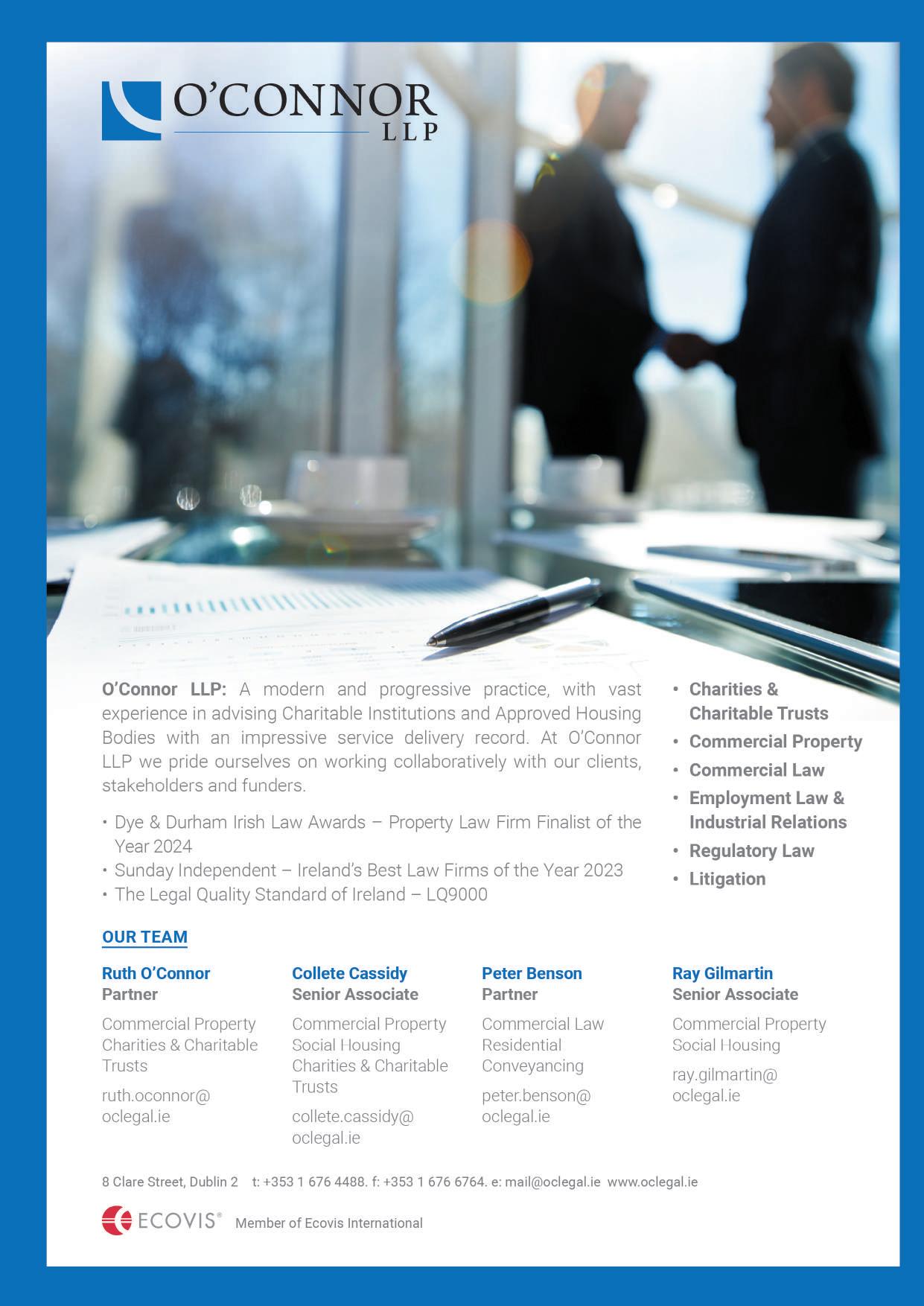
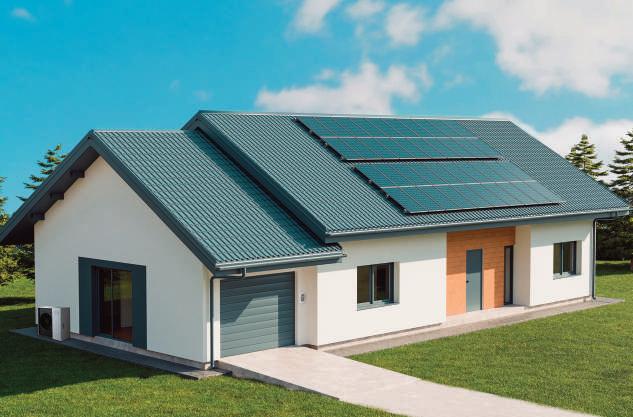
SSE Airtricity is working with governments, local authorities, and domestic customers to support the decarbonisation of homes across the island of Ireland.

As a leading provider of cleaner, greener energy for homes and businesses across Ireland, we are all about making Ireland a more sustainable place.
Stuart Hobbs is the Director of SSE Airtricity Energy Services (AES), a business dedicated to delivering home energy upgrades and utilising energy efficiency technologies to deliver a cleaner greener environment. SSE AES offers home energy upgrades under a number of different government-funded programmes: SEAI One Stop Shop retrofit programmes, Better Energy Homes, local authority energy efficiency retrofit programmes (EERP), and SEAI Warmer Homes. Up to 1.5 million homes in Ireland are in need of energy upgrades by 2050, as energy efficient buildings are essential to meet our climate action targets. These upgrades typically include external wall insulation, energy efficient windows and doors, attic insulation, heating controls, heat pumps, solar PV and battery systems, and electric vehicle (EV) charging points.
Part of the Irish Government’s Climate Action Plan includes a national retrofit programme aiming to see 500,000 homes, one-third of Ireland’s housing stock, retrofitted to a B2 building energy rating by 2030. SSE AES is supporting the retrofit of 40,000 homes in Ireland over the next 10 years, with around 4,000 upgrades already completed. These works will drastically reduce the emissions of thousands of homes, saving millions on energy costs for consumers and making their homes warmer, healthier. Once delivered, this will equal approximately €20 million in reduced energy costs every year.
A Generation Green Home Upgrade from SSE Airtricity is the perfect way to upgrade your home. Hobbs states: “We offer an award-winning retrofit service with a full range of home upgrade options, expert project management and a streamlined grant application process. We have partnered with Ireland’s leading experts in energy efficiency upgrades. From solar PV to windows and doors, internal and external insulation, heat pumps, and EV chargers, we only work with the best. Our customers receive a free home consultation to discuss their home upgrade requirements and receive expert recommendations from our team of specialists. It is one call, it is one job, it is one point of contact.”
SSE Airtricity has been providing home energy upgrades since 2012, working with SEAI, local authorities and other housing bodies on joint initiatives. SSE AES help local authorities deliver their Energy Efficiency Retrofit Program (EERP) obligations by taking a lot of the hassle and complexity away, enabling
them to deliver larger projects at a better cost and with more flexibility than their own resources might allow. “Over the last decade, we have delivered significant energy upgrades to fuel poor and social housing units, and we have significant ambitions to expand and increase these partnerships. SSE AES’s award-winning service provides a full EERP turnkey solution for local authorities, managing the works from start to finish on a partnership basis with local authorities or housing bodies. We offer pre- and postBERs, full project design, guidance and preparation and management of all tender documents to be fully compliant with EU procurement requirements, including full end-to-end project management.” SSE AES also compiles all certificates and associated paperwork for the local authorities to make a successful claim to the department. In addition, SSE offers financial support to the project in the form of energy credits generated, as well as offering bridging finance for local authority EERP projects. SSE AES has a body of retrofit contractors and resources ready and able to deliver in all 26 counties in the Republic of Ireland.
Warmer Homes is a nationwide retrofit scheme administered by the SEAI delivering free energy upgrades for households in receipt of certain government benefits. Energy retrofit measures delivered under this scheme include high energy efficiency heating
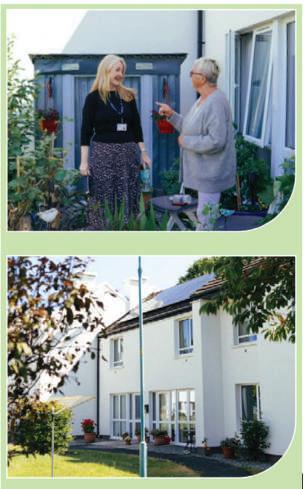


systems, ventilation, external wall insulation, attic insulation and in some cases windows and doors – making these homes warmer, healthier, and more economical to run. SSE AES is a registered SEAI Warmer Homes contractor to deliver energy upgrades under this national scheme. SSE AES has delivered over 270 home energy upgrades under this scheme since 2020 across a range of shallow and deep retrofit measures and have recently been successfully reappointed to the SEAI 2023 Warmer Homes Contract, to continue delivering energy retrofit upgrades on behalf of SEAI over the next four years.
SSE AES retrofit programs received awards and recognitions over the past few years for their various retrofit services. Last year alone SSE AES received nominations and secured wins
alongside their local authority partner, Dún Laoghaire-Rathdown, for their upgrade to 58 units in Beaufort OAP Complex in Glasthule. These included winning the Residential Energy Upgrades Awards category at the SEAI Energy Awards 2023, the Local Authority Innovation Award category at the Chambers Ireland Excellence in Local Government Awards, and achieving the gold award in the Energy Initiative/Project of the Year at the All-Ireland Sustainability Awards. Also our One Stop Shop Service won the “Best Retrofit Service” at the 2024 Bonkers Awards.
For further information on SSE AES programme supports, contact Stuart Hobbs on: T: 087 923 6404 E: stuart.hobbs@sse.com W: www.sseairtricity.com

The number of households in the state in the state whose social housing need is not being met rose by almost 1,000 between 2022 to 2023, with an evident disparity of need across all 31 local authorities.
On 1 November 2023, a total of 58,824 households were recorded as qualified for social housing support but were not having their social housing needs met.
While the figure is an overall decrease of some 36 per cent from an initial assessment in 2016, the 2023 assessment represents an increase of 982 over the year, with only nine of the 31 local authorities recording a decrease in households waiting.
The figures do not include those who are deemed to have had their housing need met through social housing supports such as the Housing Assistance Payment (HAP), the Rental Accommodation Scheme (RAS), or the Social Housing Capital Expenditure Programme.
The figures are represented in The Housing Agency’s Summary of Social
Housing Assessments (SSHA) report, which offers a snapshot at a point in time of the housing lists of 31 local authorities.
The four Dublin local authorities account for almost 42 per cent of the national total of applicants qualifying for social housing support, with a combined 12,779 households on the waiting list, and recorded a decrease of 142 households (0.6 per cent) over the year.
Cork City Council registered the largest reduction of its waiting list, reducing the list by 993 (25.6 per cent) households from 3,886 to 2,893. South Dublin County Council and Longford County Council also recorded annual percentage decreases above 20 per cent, however, this is in the context of large disparities in the size of the waiting lists for each local authority.
For example, Leitrim County Council had 198 households who qualify for social housing support but who are not having their needs met in 2023, the lowest of all 31 local authorities. compared to Dublin City Council, who recorded the highest rate of 12,779.
The report also measures changes to household profiles within the local authorities. While many of the overarching themes of household profiles remain the same, there have been some notable shifts in respect of the waiting list.
For example, one-adult households continue to be the main household grouping on the waiting list, rising from 56 per cent in 2022 to 57.4 per cent in 2023. While one-parent family
households continue to be the highest household grouping, that number has fallen marginally from 23.5 per cent to 23.3 per cent over the year.
Similarly, decreases were recorded in the number of people within the private rented sector (with and without rent supplement) on the waiting list, a trend which has been consistent since 2016. Currently, 40 per cent of the waiting list is occupied by those within the private rented sector, down from 67.4 per cent when an initial assessment of all local authorities was carried out.
A decrease was also recorded in the second largest tenure type on the waiting list, households living with parents, relatives, and friends over the year, down from 37 per cent to 34.5 per cent in 2023.
However, these decreases are in the context of annual increase – from 11.6 per cent to 13.5 per cent – of the number and proportion of households whose basis of need for social housing is homelessness.
Also telling is the fact that the number of applicants deemed ‘unemployed and in receipt of social welfare’ has been declining year-on-year since 2016. Just under half (49.4 per cent) of all those on the waiting list fall into this category,
Social
however, in contrast, those households where the main applicant is deemed employed has risen by 2.7 per cent from 2022 to 2023. There was also a marginal increase in the number of households on the waiting list whose employment status is ‘retired’ (0.7 per cent).

The demographic landscape of Ireland is rapidly evolving, with an increasing proportion of the population reaching the age of 65 and over. According to the latest census data, there has been a 22 per cent increase in the number of people aged 65 and over living in Ireland since 2016, and by 2030 20 per cent of the population will fall within this age group.
With this shift in mind, it is crucial to address the housing needs of older individuals to ensure that they can live independently and age in place with dignity. The age-friendly housing sector in Ireland has historically been underdeveloped. However, in recent years, it has received increased attention, particularly in the context of Housing for All – a New Housing Plan for Ireland. The Housing Commission report
also emphasises the need for substantial investment to ensure an adequate supply of age-appropriate housing.
Recognising the unmet need for suitable housing options for older individuals, Clúid Housing, one of Ireland’s leading approved housing bodies, made the strategic decision to establish Clann in 2020. Clann provides secure, affordable and socially inclusive homes for people aged 55 years and over.
Clann now manages more than 1,000 properties across Ireland. In 2023, it delivered over 190 homes and is looking to almost double this to 380 in 2024. All Clann homes are developed using the principles of Universal Design, to ensure their new residents can age in place and enjoy their homes for many years to come. With a commitment to offering age-friendly housing in urban centres, Clann ensures that residents have access to their communities and appropriate support systems.
A key feature of Clann schemes is that they are located close to local amenities. The neighbouring schemes of Fernwood Green and Maplewood Heights are at the heart of the established community in Tallaght. The development is composed of 40 one- and two-bed bungalows, with a community space where residents can socialise. This community-centred approach is replicated in Clann’s Sallymills scheme, which consists of two purpose-built apartment blocks of 85 one- and two-bedroom homes. The complex has a large communal space, promoting active engagement and positive ageing for residents and community. Confirming the significant demand for such homes, these
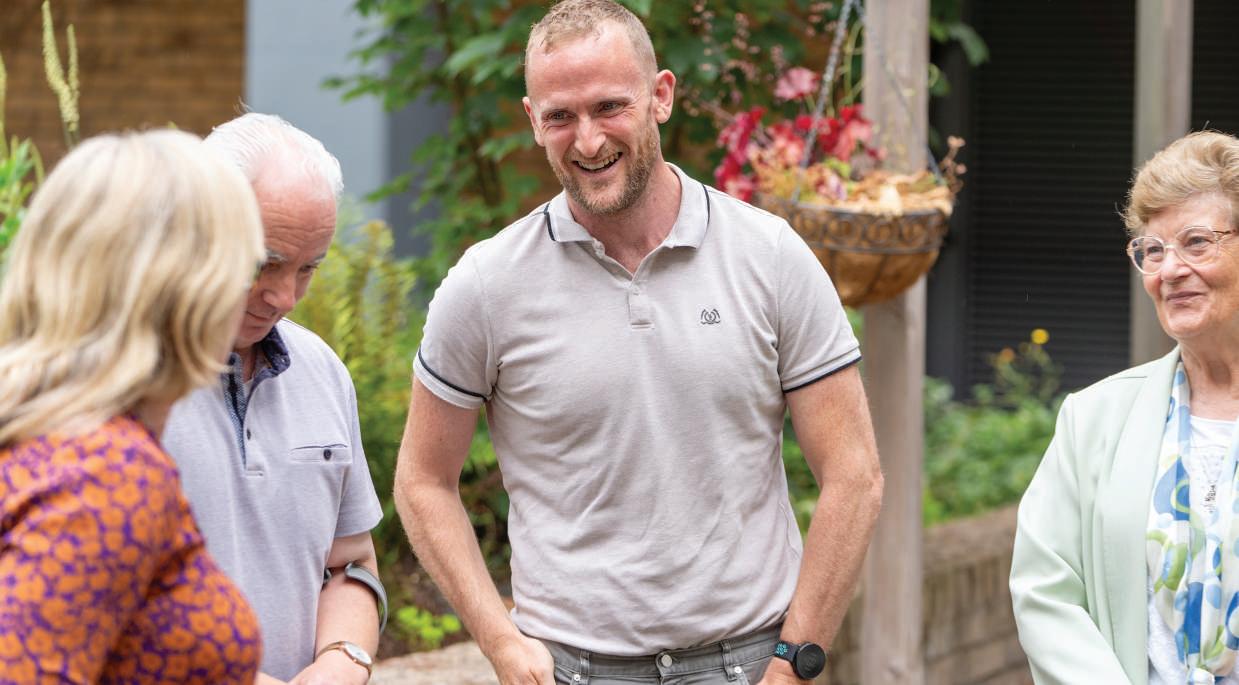
developments are fully let, and residents are happily settling into their new forever homes. Clann schemes are continually coming on stream, with 81 homes at The Weir in Tallaght welcoming residents from June 2024 and 65 homes at Bethany House, Sandymount, with residents moving in later in the summer.
In January 2024, Steve Loveland was appointed as the Head of Clann. Loveland’s experience in various housing roles, encompassing homelessness and addiction services, as well as general needs social housing, has equipped him with a nuanced understanding of the challenges and opportunities in the agefriendly housing sector.
Loveland explains: “We took the decision to launch Clann because we recognised many older people were ending up in care homes, nursing homes or even hospitals – even when this was not clinically necessary – due to there not being suitable accommodation for them to age in place with dignity.
“Clann does not provide care services. We provide age-friendly housing. The signposting and focus on wellbeing provided by the Clann team is considered low support to meet this need in a new way.”
Loveland highlights the critical importance of a resident-centred approach, putting them at the heart of the decision-making processes.
“I have worked for more than two decades across a variety of housing roles, and I have spent the best part of that time challenging assumptions around ‘solutions’ for certain cohorts that undermined the agency for those groups and inferred vulnerabilities that were rarely warranted.
“There is a danger that we do something similar when talking about housing for older people instead of advocating for options that promote autonomy, choice, independence and dignity. I think a level of humility is appropriate when having any conversations around housing given that the residents of our homes are often far better placed to identify what solutions are best due to their lived experience.”
Loveland points out that initiatives like Clann, with a focus on promoting independence, wellbeing, and community connections, are paving the way for a more inclusive and supportive housing environment for older adults.
“Currently, the PRS [private rental sector] does not provide the choice, suitability or security we want in older age. This can result in a mismatch between our desire to age in place close to existing supports and the appropriateness of those homes available to us.”
The Clann team is developing a new five-year strategy, focusing on ensuring the sustainability of the service.
Loveland says: “Of course, what is required when crafting a strategy for our age-friendly housing is a multi-faceted approach. We need to consider the
planning, design and management of our housing schemes, and develop these in consideration of the residents who will ultimately call them home.”
The key challenge to Clann’s growth is a viable funding model that includes nondebt funding.
“Clann already has the largest agefriendly social housing development programme in Ireland. However, we need sustainable funding structures to support increased delivery. Consideration also needs to be given to financing communal areas where residents can build connection and communities, so vital for this age cohort.”
One of Clann’s core aims is to make age-friendly housing widely accessible. With the Government placing a greater emphasis on this topic of debate, there is hope for increased progress in the future.
W: www.clannhousing.ie
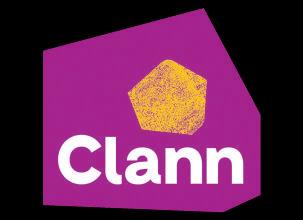

Project viability, not access to finance, remains the primary challenge to residential development, a government appointed investment group has reported.
Funding of land without planning permission; funding apartment developments which do not have a committed purchase from the State; and funding projects which require significant infrastructure development, are highlighted of examples of some of the viability challenges currently being faced in residential development.
However, the report says that while viability remains a challenge in certain segments, reasonable access to finance for viable development does exist.
The Report on the Availability, Composition and Flow of Finance for Residential Development was delivered by the Department of Finance, following the establishment of an Investment Workstream group to carry out a priority action of Housing for All.
Noting the impact of increasing interest rates in the past 12 to 18 months, particularly, the cost of funding, the report says that stakeholder feedback suggests this is only having a “marginal” impact on viability, and is not causing residential projects to become unviable as a standalone factor.
Highlighting the increased role of approved housing bodies in providing funding to developers through the
construction phase of delivery, the report says that while this has previously been a feature of the funding market, momentum has been growing over the past year and is growing in scale.
This has made for an “active funding market” for social and affordable delivery, with strong competition to provide funding from domestic banks, secondary and alternative lenders, the Land Development Agency, and approved housing bodies.
Highlighting feedback that the increased role of approved housing bodies to provide construction phase funding has served to reduce total overall acquisition costs for the bodies, the report adds that by eliminating any private financing costs (debt and equity), the process can make high density developments viable, and can allow AHBs more control over the design process.
However, it also outlines that all stakeholders identified that such an approach redistributes risk from the developer to the funder, meaning it “requires expertise and close monitoring of development projects”.
Uncertainty around planning was identified as one of the largest risks to future development. While stakeholders
identified recent changes, and await the enactment of the Planning Bill, all noted that “significant risks and uncertainties remain” and that “the risks involved in taking a project through the planning cycle is inextricably linked to the availability of capital”.
Indicating a lack of lender appetite to fund land without planning permission, the report says that planning process timelines, as well as judicial review and the de-zoning of land risk all impede the delivery of new homes.
The outcome, some stakeholders suggest, is a “two-tier land market” in operation. “There is heightened competition for land which has planning permission, and consequently there has been no resetting of land prices in this segment. This is also supported by the activity of state or state-backed entities in progressing projects which have planning permission in place,” it sets out.
Another risk identified is the significant upfront cost placed on developers associated with infrastructure development and the provision of utilities. The Department states: “In relation to the provision of infrastructure, debt and equity providers have limited appetite to fund long-term projects that require extensive infrastructure as this
infrastructure can take many years to complete, prior to any homes being constructed or sold.”
Adding: “A number of stakeholders also identified the impact of delays with the connection of utilities, in particular water and electricity, as this extends the timeline of delivery of projects, which in turn increases costs for developers.”
Noting feedback that international institutional investment in residential development had been lower during 2023 than in previous years, the report acknowledges a global reduction of private rental sector activity “in a meaningful way”.
Feedback pointed to the 2 per cent rental cap and policy uncertainty as key themes raised by investors as potential deterrents to investment. However, those consulted surmised that Ireland remains attractive for investment generally, given the strong demand and demographics, particularly for rental market products.
The report, published in June 2024, assesses the level of development finance that will be required to deliver on the current annual Housing for All target of 33,000 homes to 2030. However, these figures are subject to change given the Government’s commitment to publish a revision of the National Planning Framework later in 2024, which will include an increase of housing targets.
Offering a breakdown of the composition of development finance in the market in 2022, the Department calculates that the 29,751 housing units completed required development funding, both public and private, of about €11.4 billion.
The modelling estimates that €13.6 billion of development funding will be required per annum, the majority of which (€11.5 billion) will be required from private capital sources to maintain the 33,000 homes per annum target. These figures are the result of a modelling update carried out in December 2023 to reflect increased in the cost of construction of a house and an apartment.
If the supply of housing was to increase to an average of 40,000 units, estimated development funding of €16.2 billion would be required, of which €13.6 billion will need to come from private capital sources.
A target of 50,000 units would require almost €20.4 billion in estimated development funding, €16.9 billion from private capital sources and €3.5 billion from the public sector. The Department attributes the significant jump in public funding under the 50,000 unit scenario to “the increased costs in funding apartment development”.
The report states: “All stakeholders emphasised the importance of attracting private capital alongside
investment, and that in order to maximise the impact of State investment, any interventions should be co-designed in collaboration with the private market.
“In so doing, private capital may be leveraged alongside

The EU aims to be climate-neutral by 2050, an objective that is at the heart of the European Green Deal and its strategy for a sustainable built environment.
Today, construction and the building sector represent 38 per cent of global energy related CO2eq emissions, and with the focus now firmly on decarbonisation, the traditional methods with which we construct our built environment are now being challenged. In Ireland, there is an urgent need for new homes to satisfy demand, and we need to transition away from carbon intensive building materials and move to more low carbon, sustainable building solutions. Because of its significant environmental credentials, wood is now being repositioned as the sustainable

building material of the future. Coillte’s forestry strategic vision aims to balance and deliver the multiple benefits of its forests for climate, nature, wood, and people.
This is a long-term vision that will see new forests created, existing forests managed for greater carbon capture, enhanced biodiversity and more recreation spaces for people to enjoy. Coillte also has an ambition to support the creation of new homes by delivering sustainably grown Irish wood products to build low-carbon houses and support the decarbonisation of the built environment.
In the period to 2030, Coillte plans to produce 25 million m3 of certified Irish wood to support the delivery of Ireland’s Climate Action Plan which seeks to cut the embodied carbon emissions for materials produced and used in Ireland by at least 30 per cent. It will also continue to promote the increased use of wood products to raise the level of homegrown wood use in the construction of housing from its current low level of 20 per cent to 80 per cent by 2050.
The drive to decarbonise can be achieved by increasing the adoption of timber frame for new homes and by unlocking the market for emerging technologies such as mass timber for medium rise residential and commercial buildings.
The fact that wood products have the lowest embodied carbon of any mainstream building materials, is now being recognised by design practitioners
world-wide who are designing and building multi-storey, mass timber skyscrapers. These high-rise residential and commercial buildings are manufactured from engineered wood, offsite, in quality-controlled environments and delivered and erected on site in a matter of days. These new solutions are being rolled out across Europe but unlike our European counterparts, Ireland does not have a culture of using timber in construction and historically, our design practitioners need guidance and support to assist them to specify correctly.
We are however, beginning to see change, as the timber frame market grows, and developers begin to benefit from faster construction, less waste, and lower embodied carbon. In the coming years, we expect to see increased demand for wood and more timber frame homes. This will present significant opportunities for our forest products sector to stimulate further investment to drive sustained growth in timber processing, grown sustainably, and in the research and development of new lowcarbon wood and wood-based products, components and building systems. This in turn will underpin new green jobs across the forestry supply chain and support the move to off-site modern methods of construction.
Ireland is uniquely positioned to grow the quality wood required for construction. Softwood sourced from coniferous trees such as Sitka spruce is the most popular type of wood used for construction worldwide due to its ease to work with, coupled with the fast growth rate of the trees themselves. In continental Europe a spruce tree may take up to 100 years to reach maturity, while in Ireland it can take as little as 35 years. This gives Ireland a fantastic opportunity to grow construction grade timber sustainably and quickly, creating a secure and independent homegrown supply while reducing pressure on old growth forests elsewhere in the world. Using wood in this manner drives the bioeconomy, decarbonising the construction sector with sustainability at its heart – for every tree harvested Coillte replants three trees in its place.
There is also significant interest among the development community to utilise mass timber for medium rise construction here in Ireland. However, while mass timber buildings of up to 25 stories are safely constructed in other countries, Ireland’s building regulations currently

Mass timber is a group of construction products comprising layers of timber boards bonded together to form high-performance structural beams, columns or panels, which are then used for framing, walls, floors, and roof structures.
Commonly referred to as glulam or cross laminated timber (CLT) these technologies were developed in the 1990s and are extensively used throughout Europe for medium and high-rise residential and commercial applications.
restrict the use of limited combustible materials, such as timber, to buildings of up to three storeys. The recently established Interdepartmental and Industry Timber in Construction Steering group will play a pivotal role, and with this collaborative approach, a framework can be created to work through the current barriers, allowing this form of more sustainable construction to become mainstream.
To support the increased use of timber, measures are needed to facilitate and drive the necessary innovations and technology adoptions for timber based modern methods of construction. A fasttrack approach is required to develop more advanced regulations, standards and statutory guidance that allow the adoption of low carbon timber building systems whilst ensuring the highest degree of building safety. A better understanding of the benefits of building

with wood is needed as well as the provision of technical guidance and support to design professionals. Focusing on training and skills development will no doubt enable a platform to support the decarbonisation of the built environment.
Timber based modern methods of construction offer a valuable solution to several issues facing housing delivery in Ireland: increasing the speed of delivery, delivering more sustainable homes, reducing the reliance for onsite labour, decarbonising our built environment, and supporting Ireland’s net zero ambitions. Other jurisdictions are already advancing their timber revolution. Ireland needs to transition to a new low carbon building model fast, for the sake of our future.
W: www.coillte.com

The Minister for Housing, Local Government and Housing published The Housing Commission’s referendum report calling for the State to guarantee a right of access to adequate housing “as far as practicable”. Owing to fundamental disagreement, the Minister simultaneously published the minority report prepared by dissenting commissioners, which argues that the Constitution already allows government to take the necessary measures on the housing crisis.
In Proposed Wording for an Amendment to Bunreacht na hÉireann/Constitution of Ireland, The Housing Commission recommends the creation of a proposed article 40A of Bunreacht na hÉireann, which would stipulate:
1°: The State recognises that having a home is of fundamental importance to quality of life and that access to adequate housing, by facilitating the development of family, social and community relationships, promotes the common good.
2°: The State therefore guarantees to every citizen a right of access to adequate housing and pledges, as far as practicable, by its laws to protect and vindicate that right.
The commission rationalises that a constitutional amendment could perform three functions:
(i) clarify the legal and constitutional position that the State is entitled to regulate private property rights in the interests of the common good, including in the interests of ensuring access to adequate housing;
(ii) affirm and recognise the importance of housing to the dignity of individuals and its connection to the enjoyment of a range of personal rights under the Constitution; and
(iii) place an obligation on the State to take measures in relation to the provision of housing in particular circumstances.
Several dissenters within The Housing Commission disagreed with the need for a constitutional amendment, arguing: “No constitutional barrier exists to the government taking the steps needed to address the housing crisis.”
In that context, the Minority Report on Proposed Wording for an Amendment to Bunreacht na hÉireann asserts that an amendment based on the premise of a “pervasive perception” of there being some constitutional impediment to developing an effective housing policy would be “not only unnecessary but also unwise”.
“Promoting a constitutional amendment on the basis of nothing more than perception would very likely entail unintended consequences.
The minority report further argues that the official report does not sufficiently substantiate the conclusion that an amendment to the Constitution is necessary to clarify the law and that an amendment is not necessary to clarify for future generations, the State’s commitment to housing.
The minority report further says that there are “alternative measures that should be pursued in preference to amendment of the Constitution”.
During its period of work, The Housing Commission was tasked with independently advising the Government on critical factors for consideration. One such critical factor is the ability of the State to meet any guarantee it provides to its citizens in the Constitution. The minority report analyses that a significant gap currently exists between housing required by society and the existing stock, a deficit that will take years to address.
In that period, the minority report argues that, regardless of any wording in the Constitution and despite best intentions, “the State simply cannot guarantee to every citizen that they can access adequate housing”.
“Including in the Constitution an individual right that guarantees to every citizen a right of access to housing will unfairly create a false expectation.”
The circumstances determining access to housing generally are complex, the minority report argues that “legislation can better consider all potential stakeholders and those impacted in relation to any proposed changes and can address the needs and concerns of all in detail and with greater certainty”.
“The manner and quantum of the application of
State resources, and the decision as to how those resources are to be apportioned in meeting social and economic policy goals, is and should remain the domain of the democratically elected Government. Review by the Courts can be introduced, to ensure implementation,” the report says.
In the event that a referendum is held on a constitutional amendment relating to housing, the minority report proposes the insertion of the following text into Article 45, at its conclusion: “5 i. The State shall direct its social policy towards ensuring adequate affordable housing for every citizen, as part of a national housing policy that meets the needs of its citizens. ii. In furtherance of such obligation, the State shall take legislative and other measures, within its available resources, to achieve the progressive implementation of such a housing policy. iii. Notwithstanding the provisions of the preamble to this Article, compliance with the requirements of paragraphs 5(i) and 5(ii) shall be cognisable by the Courts established by Article 34 of this Constitution.”
Bunreacht na hÉireann is the fundamental law of Ireland. It establishes the branches or organs of government and the courts and sets out how those institutions should run. It also describes the fundamental rights of every Irish citizen.
In developing a potential wording for a referendum on housing, therefore, the overall wording and structure of the Constitution was considered by the Housing Commission. As well, articles were analysed during the Commission’s deliberations on the appropriate placement of the proposed amendment. Particular attention was given to Articles 40, 43 and 45.
The following articles were examined:
• Article 40, in which fundamental rights are set out;
• Article 43, in which the property rights of every citizen are set out (as well as in Article 40.3.2); and
• Article 45, which lays down Directive Principles of Social Policy that are addressed to the Oireachtas.
In putting together its official report, the Housing Commission received submissions from organisations in favour of a referendum on housing. The Commission received

submissions from organisations, including community and voluntary groups, housing bodies, charities, trade unions, nongovernmental organisations, political parties, and research institutions.
From these submissions from key stakeholders, the official report states that common themes can be extrapolated from the submissions received, a synopsis of which is provided below:
(a) Many of the submissions argued that the introduction of a constitutional right to housing would compel the State to take a greater role in the direct provision of adequate and affordable housing.
(b) Many of the submissions argued that a constitutional right to housing would tackle the perceived imbalance that exists within the Constitution.
The official report states that several submissions noted that the Government had claimed to be constrained in its ability to respond to the housing crisis because of the Constitution. While noting that it is arguable whether such an attitude would be reflected by the courts, the submissions argued that, in practice, a referendum is necessary to remove such perceived barriers to legislative action in relation to housing.
The 2020 Programme for Government does not contain a commitment to a constitutional right to housing. Instead, it states: “We believe that everybody should have access to good-quality housing to purchase or rent at an affordable price, built to a high standard, and located close to essential services, offering a high quality of life.
“We understand that the provision of more affordable housing has a profound benefit socially and economically and believe that the State has a fundamental role in enabling the delivery of new homes and ensuring that best use is made of existing stock.”
The Housing Minister received the majority report on the proposed wording of a referendum on housing from The Housing Commission in July 2023 and the minority report in November 2023.
Speaking with the Housing Ireland Magazine, Minister summarises his rationale for waiting to publish them alongside the Report of The Housing Commission: “It was a preference.”
Asked if there would be a housing referendum in the lifetime of this government, the Minister responds: “In fairness, the joint Oireachtas committee will have a role in that. I have got to go to cabinet... Any referenda have to be prepared properly and have to be understood.
“It was always something that I have wanted to advance but it has to be advanced properly. I am not overly concerned if it is in the next few months or if the next government that does it – it is definitely something that needs to be considered properly and how do you vindicate what is in the Constitution. That is the most important thing.
“I think it will be for the next government but at least now, the work has been done to be considered so that any government will now have a template to move forward with it.”
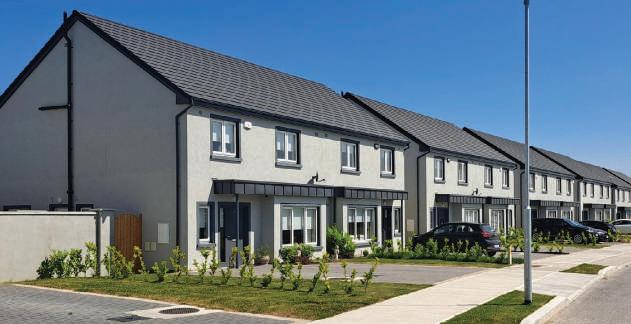

Grant continues to lead the way in innovative home heating technologies that ensure Irish homes can benefit from highly efficient, sustainable, low-cost heating.
Having largely transformed into a renewable heating company, Grant’s product portfolio boasts a wide range of award-winning technologies including the Aerona³ air to water air source heat pump, the HVO biofuel compatible Grant Vortex boiler and multiple supporting technologies including hot water cylinders, aluminium radiators and underfloor heating.
The globally renowned heating manufacturer works closely with local authorities, builders, developers, architects and engineers to offer support and guidance on integrated heating solutions which ensure compliance under building regulations for single new build dwellings through to larger new build developments.
A new social housing development in Rathdrum, County Wicklow has recently installed the 6kW Grant Aerona³ R32 air source heat pump and a 210 litre Grant pre-plumbed hot water cylinder as part of a bespoke integrated heating
package solution, within all 61 homes included in the development.
Barry Gorman, National Renewables Sales Manager at Grant explains: “Installing a 6kW Grant Aerona³ heat pump as the main heat source has provided each home with a cleaner, more environmentally friendly heating solution, which can achieve high SCOP’s and is sustainable at low temperatures. With an ErP of A+++ the Aerona³ is highly efficient, easy to install and compact in size.”
A new residential housing development located in Robertstown, Naas, County Kildare, has also chosen to install the 6kW Grant Aerona³ R32 air source heat pump as part of a bespoke integrated heating package solution for its 22 homes, with a further 15 homes due to be built this year.
As part of the integrated heating package solution for this residential development, the Grant Uflex underfloor heating system and Grant Afinia
aluminum radiators were installed as heat emitters within each home. Heating each individual room, these modern heat emitters efficiently distribute heat, whilst offering versatility to support the overall design and architecture of the homes.
Gorman adds: “To ensure maximum efficiencies and long-term carbon and cost savings for each of the homes in the projects we support, a bespoke integrated heating package solution is designed by our in-house technical specialists. On receipt of house plans, our team carries out in-depth heat loss calculations to enable us to correctly size and specify the best suited heating technologies and carefully combine these for every project. This professional service is helping to save considerable time on new-build projects of various scales and sizes throughout the country.”
Avail of Grant’s Integrated Heating Package Solutions Design Offering: T: 057 912 0089
E: heatpump@grant.ie
W: www.grant.ie
X: @GrantIRL
Instagram: @Grant_IRL
LinkedIn: Grant Engineering ULC
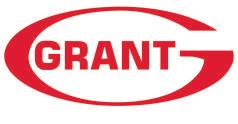

Under Climate Action Plan 2024 (CAP24), the Government is targeting a 40 per cent reduction in residential buildings emissions through retrofitting, district heating, and heat pumps.
Published in December 2023, the forth iteration of the Climate Action Plan (CAP) reiterates government’s target for 500,000 homes to be retrofitted to a B2 Building Energy Rating (BER) by 2030. To attain the target, CAP24 reemphasises the importance of the National Retrofit Plan, which aims make “retrofitting more affordable and easier to access”.
Furthermore, CAP24 states that the continued rollout of the Social Housing National Retrofitting Programme will increase funding to help low-income households upgrade their homes.
The target of 680,000 heat pumps installed by 2030 is also restated within CAP24, with the support to roll-out 215,000 heat pumps in homes by 2025. This target includes both new and existing housing. Additionally, CAP24 aims to ensure new dwellings are designed and constructed to nearly zero energy building (NZEB) standard by 2025, and Zero Emission Building standard by 2030. Currently, NZEB/retrofit centres of excellence are training new entrants into the construction sector, who, CAP24 states, will be “invaluable in retrofitting our building stock”.
Furthermore, a target of 0.8TWh of district heating is set to be developed across both the residential and commercial building stock by 2025, and up to 2.7 TWh by 2030. This includes the Tallaght District Heating Network which utilises excess heat from a nearby data centre to heat 32,800m2 of buildings. CAP24 also provides a target of up to 0.6 TWh of heating to be provided by biomethane by 2025, and up to 1.1 TWh by 2030.
Additionally, CAP24 highlights that regarding trends in the sector, the built environment sector accounted for 11.1 per cent of Ireland’s greenhouse gases in 2022, down from 12.3 per cent in 2021. Within the residential sector, the emissions ceiling set out in CAP24 is 29 MtCO2eq. for 2021-2025, and 23 MtCO2eq. for 2026-2030.

Turning to the adoption of modern methods of construction (MMC), CAP24 states it “has the potential to dramatically improve [construction] sector productivity, innovation, speed of delivery, sustainability and ultimately, costs”. The National Construction Training Centre and demonstration park in Mount Lucas, County Offaly, established under Housing for All, aims to act as “an accessible and interactive location for applied research, training and demonstration, reflecting the current and future needs of the housing sector”.
The training and reskilling will include:
• informing and supporting innovation within the built environment through the introduction of modern methods of construction methodologies and techniques;
• creating innovative education and demonstration facilities that include live testing (research) and training (skills development); and
• promoting sustainability and the circular economy in the built environment.
In January 2023, the Department of Housing, Local Government and Heritage (DHLGH) launched a new €150 million scheme from the Urban Regeneration and Development Fund for vacancy projects as part of the Vacant Homes Action Plan. This fund is available to local authorities to acquire vacant or derelict properties or sites to make them more attractive for re-use or resale, aiming to incorporate activation of vacant properties in the Urban Regeneration and Development Fund.
Regarding residential standards and regulations, the DHLGH, in conjunction with SEAI, is working with professional bodies to progress professional development modules on the retrofit of traditional buildings for delivery to construction professionals.
CAP24 states that Housing for All commits the Government to acting in this area and a report on regional demographics and structural housing demand at county level will be produced by the ESRI in 2024. The findings within this report will be addressed within future climate action plans.
The plan highlights that addressing energy poverty is at the heart of a ‘just transition’, and is the guiding principle of the Energy Poverty Action Plan. ESRI research has found that targeted supports for low-income households can address energy poverty.
In relation to just transition, the action plan states that government policy has resulted in the equitable redistribution of carbon tax revenue to support a socially progressive residential retrofit programme. In 2023, over half of the Government’s total annual retrofit budget is ring-fenced through the Warmer Homes Scheme and the Social Housing Energy Efficiency Retrofit Programme.
A working group led by the Department of Transport and DHLGH is also identifying transport orientated development opportunities in major urban centres, as identified in Housing for All. In July 2023, the Department of the Environment, Climate and Communications, presented Ireland’s second Voluntary National Review (VNR), entitled Building Back Better, which outlines progress Ireland is making in achieving the UN Sustainable Development Goals.
Regarding heat, the Heat and Built Environment Delivery Taskforce was established in 2023 to oversee and support outputs and projects in relation to retrofitting, renewable heat, district heat, decarbonisation and energy use of the building stock, and industrial heat. The taskforce, over the course of 2024, aims to continue to focus on the acceleration of system-wide project and programme delivery, with high level actions to be taken set out in each Climate Action Plan going forward.
To achieve heat targets, CAP24 states that the publication of a National Heat Policy Statement in 2024 will draw on the evidence of the National Heat Study. The Policy Statement will also aim to guide the Government’s overall response to the National Heat Study across all sectors and will be underpinned by the Renewable Heat Obligation.
The Minister of the Environment, Climate and Communications, Eamon Ryan TD stated during the publication of the CAP24: “Our buildings’ emissions target is on track, showing an 8 per cent decrease this year [2024], driven largely by greater energy efficiencies, a progressive new homes policy which is effectively eliminating fossil fuels from our new stock, and the retrofitting success.
“This year, we will support over 46,000 homes to be warmer and cheaper to run, smashing our target of 37,000 for the year.”

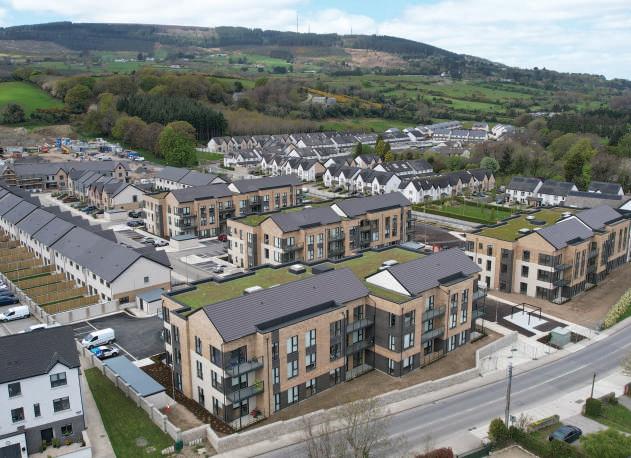
Tuath is one of Ireland’s largest approved housing bodies with over 13,000 homes in management. Our commitment to strategic growth and collaboration has positioned Tuath as a partner of choice for the public and private sectors, aiding the delivery of high-quality homes and first-class services to residents.
A growing number of our tenants now live in a cost rental home delivered by Tuath. We plan to scale up cost rental operations to help meet the growing demand for affordable housing for the many people who cannot afford the private rental sector but who also do not qualify for social housing.
Cost rental offers high-quality homes at affordable rents, calculated on a not-forprofit basis to cover the costs of delivering, managing, and maintaining the properties only. Apart from a discounted rent, the tenure also offers long-term security, high quality energy efficient homes with a responsive management service valued by customers.
Last year saw 2,482 homes added to Tuath’s owned and managed property
portfolio, including 115 new, cost rental homes. To date, Tuath has delivered over 400 cost rental homes, with an additional 2,000 more in the pipeline, on site, or in planning.
Tuath’s cost rental delivery programme expanded outside Dublin with the successful provision of cost rental housing developments in Mullingar and Drogheda. Both developments were massively oversubscribed, highlighting the huge demand for this new, secure form of housing tenure. In 2024, Tuath will deliver almost 500 cost rental homes in new housing developments in Fingal, Dublin City, South Dublin, Cork, Kildare, Westmeath, and Wicklow.
Tuath’s CEO, Sean O’Connor, commented: “The cost rental initiative is an important step in improving housing affordability and security to households who could not otherwise achieve it. We are laser focused on expanding its delivery across the country, bringing a
high quality and secure rental option to more people and creating choice in a market that shuts out too many.”
The selection of approved housing bodies (AHBs), such as Tuath, to deliver projects under the Government’s Cost Rental Equity Loan (CREL) initiative acknowledges the expertise and capacity of AHBs across the housing sector. We are experts at working in partnership, collaborating with local authorities, developers, and financial institutions, to leverage all available resources to deliver locally tailored, high-quality housing solutions on the ground.
Partnerships play a crucial role in delivering large scale, mixed tenure developments. These developments typically include a mix of cost rental, social, and private housing, creating balanced and thriving communities. In Stepaside, County Dublin, Tuath in collaboration with Dún LaoghaireRathdown County Council delivered 96 new homes via a mix of social and cost rental housing in just under a year from start-on-site, as part of the wider 200 plus home Kiltiernan Wood estate. At Parklands in Citywest, south Dublin, 52 families moved into their new homes last year, building upon the 44 cost rental homes previously delivered by Tuath at the same scheme. The overall Parklands development will comprise 1,010 homes on completion.
An important construction project commenced at Citywest late last year in partnership with Ardstone Ltd and South Dublin County Council. The project will contain 290 homes, including 137 apartments for social housing and 153 apartments for cost rental. Tuath leveraged its access to competitive, long-term fixed finance rates via the Housing Finance Agency and The Housing Agency to forward fund the project, removing expensive development finance and helping to reduce costs and lower outturn rents for cost rental tenants.
Forward funding not only accelerates project delivery timelines but also
provides financial stability and predictability, crucial for long-term planning. By leveraging forward funding, Tuath plans to scale operations to meet growing housing needs across Ireland.
Over 1,000 Tuath homes last year were delivered via modern methods of construction (MMC). MMC offers many advantages, including reduced construction times, lower costs, and minimal environmental impact. We will continue to foster MMC with a focus on increasing the number of homes being provided via off site manufacturing in the coming years to aid speedy delivery at best value whilst minimising the impact on the environment. Such projects completed to date are high quality, have been delivered promptly whilst producing cost savings.
The conversion of Springville House from office to residential in partnership with Cork City Council is a prime example of sustainable development incorporating modern methods of construction. Through the use of light gauge steel systems and environmentally friendly materials, a derelict office block’s structural integrity was enhanced, and its carbon footprint minimised during construction. Currently underway in Galway, the Claí Mór development will deliver 102 A-rated homes which will also employ light gauge steel frameworks to optimise efficiency, reduce construction time, and minimise environmental impact.
MMC can also accelerate high-density projects. 56 per cent of Tuath’s delivery last year comprised of apartments and duplexes reflecting the changing
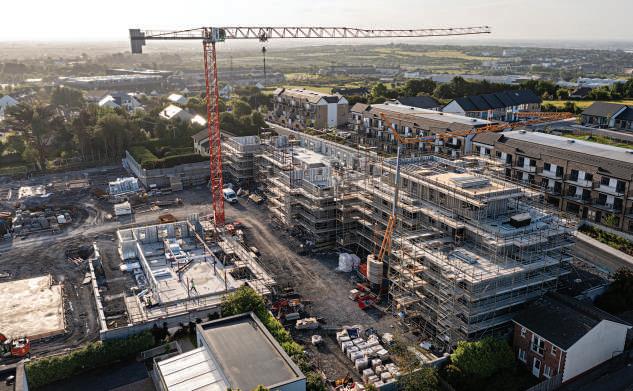
dynamics of housing delivery. We believe that effective planning of welllocated, multi-unit developments can help to evolve perceptions of apartment living, and contribute to the sustainability of affordable, urban-living communities in accommodation suited to household size and underlying population demographics.
As more cost rental homes become available, they provide an affordable alternative for middle-income households who do not qualify for social housing but struggle with market rents. This increased availability of affordable rental homes will help ease the demand on the private rental sector, contributing to more stable rent levels overall.
Additionally, cost rental housing can help moderate house prices by offering a viable long-term rental option, reducing

the urgency for individuals and families to purchase homes as their only path to secure housing. A more balanced housing market means demand is evenly distributed between rental and ownership, helping to prevent the kind of price inflation that can occur when too many people are chasing too few homes.
Tuath’s Director of Development, Martin Loughran, emphasises the broader impact: “Cost rental developments create choice and diversity in the housing market and provide affordable homes that are urgently required. The intention is that delivery under this model, at scale, will stabilise the wider rental market.”
As we look to the future, Tuath remains dedicated to pioneering new approaches to housing delivery. Our focus on cost rental housing, large-scale mixed tenure developments utilising modern construction methods and environmentally sustainable practices will continue to drive our efforts to create vibrant, inclusive communities across Ireland.
We are committed to working closely with all our stakeholders and the communities we serve to ensure that everyone has access to a safe, affordable home. By leveraging our expertise and innovative approaches, we are confident that we can make a lasting impact on Ireland’s housing landscape, delivering homes that meet the diverse needs of the population and contribute to a more equitable society.
W: www.tuathhousing.ie


Although the construction sector is dealing with supply challenges arising from the Covid-19 pandemic and the war in Ukraine, the Build 2024 report asserts that there is “reason to be positive” in terms of the initiatives which aim to increase the efficiency and productivity of the sector.
The Build 2024 report, published by the Department of Public Expenditure, NDP Delivery and Reform (DPENDR) in June 2024, outlines how the construction sector has faced significant challenges over recent years including Covid-19 restrictions, inflationary pressures, and supply chain disruptions.
However, the report asserts that there is reason to be positive due to initiatives being undertaken by the public and private sectors such as the adoption of modern methods of construction (MMC), the introduction of public sector building information modelling (BIM) mandate, and reforms to the planning system.
On investment and funding in the construction sector, the report states that gross fixed capital formation (GFCF) – which captures both public and private investment in building and construction (B&C) in areas such as housing, commercial buildings, civil
engineering and public infrastructure – increased by circa 6 per cent to €31.5 billion in 2023 relative to 2022. In addition, forecasts anticipate GFCF in B&C of €36 billion in 2024 with further growth anticipated in the years ahead as investment increases.
On implementation of the National Development Plan, the report states that a total of 132 projects have received funding of €1.7 billion between 2018 and 2023 under the URDF and 245 projects received funding totalling €577 million between 2018 and 2024 under the RRDF.
On planning and delivery, the report states that there were 32,801 residential commencement notices in 2023, an increase of 5,844 (22 per cent) relative to 2022. Similarly, the number of planning permissions granted for civil engineering projects increased by 14 per cent to 2,529 in 2023 relative to 2022.


Collaboration between the public and private sectors continues to increase the efficiency and productivity of the construction sector.
However, it is noteworthy that Dublin has seen a significant drop in the proportion of planning permissions for apartments; falling from 94 per cent of all permissions in 2021 to 74 per cent in 2023. Nonetheless, apartments now account for a substantial share of dwelling completions across the State, rising by a factor of four from 9 per cent of completions in 2018 to 36 per cent in 2023.
The value of exports by construction companies grew by one-fifth in 2022 relative to 2021 to €3.76 billion, with market analysis suggesting that demand for commercial office spaces is slowing down and will continue to decrease over the next two to three years. There is an opportunity for some of the workforce in commercial property to transfer to residential construction during this period, particularly apartments. There is also potential to convert some vacant office buildings into residential units.
The revised National Planning Framework (NPF), due to be published in Q3 2024 will consider a projected one million increase in the population of the State by 2040. Census 2022 recorded over 5.1 million people living in the State.
In terms of planning and wider reforms to housing delivery, the report outlines that the Government will consider the recommendations and findings of The Housing Commission. The Housing Commission’s final report, published by the Department of Housing, Local Government and Heritage (DHLGH) in May 2024 makes 83 recommendations and finds an underlying housing deficit of up to 256,000 homes.
In terms of legislation, the Planning and Development Bill is due to be published in autumn 2024, before the dissolution of the 33rd Dáil. While the report states that the Bill is “unlikely to be a panacea for all of the issues
with housing and infrastructure delivery”, it adds that the Bill “aims to reform the plan-making process to encourage community involvement at the drafting stage of City/County Development Plans and reform the judicial review process, amongst other measures”.
On costs related to the construction and built environment sector, the report outlines how, in the 12 months to Q1 2024, the wholesale price index (WPI) for building and construction (B&C) materials decreased by 1 per cent.
“The WPI for electricity and energy products has decreased by 77 per cent and 71 per cent respectively from Q2 2022 (peak) relative to Q1 2024. This follows three years of significant increases in the cost of energy, electricity and materials which made some projects unviable,” the report states.
Following the publication of the Residential Construction Cost Study Report in May 2023, the report states that DHLGH is currently carrying out an overall development cost report which incorporates ‘hard’ construction costs and ‘soft’ costs such as fees, land, and finance. This research is projected to be completed in 2024 and contribute to further initiatives to standardise dwelling types, specifications and scope.
Publishing the report, Minister Paschal Donohoe TD said: “Build 2024 shows that collaboration between the public and private sectors continues to increase the efficiency and productivity of the construction sector.
“It is vital to maintain the existing momentum and focus on measures that can assist in removing bottlenecks to delivering on the priorities outlined in the National Development Plan (NDP).”
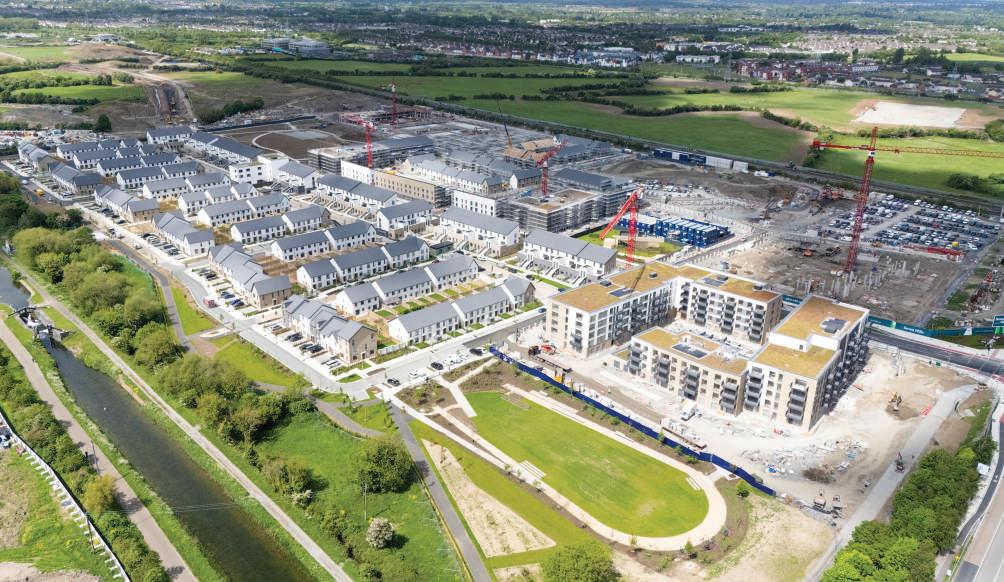
The Greek Philosopher Heraclitus famously once said: ‘Big results require big ambition’. Cairn embarked on a new adventure that certainly required bundles of big ambition – the building of Seven Mills, a vibrant new town, located on the Grand Canal between Lucan and Clondalkin in Dublin 22.
Once completed, the development will contain over 8,700 homes, with 5,500 of these built by Cairn, making it their most ambitious project to date.
The town will be made up of a series of new communities and will include all the amenities you’d expect, from creches, schools, and healthcare facilities, to restaurants, shops, and leisure. Set amidst 225 acres of green space featuring dedicated biodiversity areas and parks, play areas, and green spaces, plus 3,500k of canal frontage,
each thoughtfully designed, sustainably built home is no more than two minutes from a green space.
Seven Mills is a place for everybody, so will feature a variety of home types including houses, duplexes, and apartments, spread across the mixed tenure of private ownership, cost rental, and social and affordable housing. It will include parks and playgrounds and be pedestrian and cyclist friendly, with a cycleway direct to Dublin city along the Grand Canal Greenway. It will house

community buildings as well as 300,000 ft2 of LEED registered commercial and 180,000 ft2 of prime retail space, which will ensure local people have new employment opportunities and residents will have spaces within which to work, eat, and unwind. There will be easy transport links for commuters, with two train stations onsite – Clondalkin Fonthill and Kishoge – providing direct lines to Heuston Station (12 minutes) and Pearse Station (34 minutes).
To put the scale of this new town and its population into context, it will be of a similar size to Naas or Ennis. However, while these towns developed over decades and centuries, the timeframe at Seven Mills is considerably shorter. In fact, building began in January 2023, with the first residents moving into their new homes before Christmas that same year – and the goal is to complete this new town by 2030.
The project is supported by approximately €200 million worth of urban regeneration development funding and is a significant development in terms of infrastructure for the wider area. Typically, 700 people can be seen on the ground working daily on all aspects of the project, and it is expected that between 750 and 1,000 homes a year will be delivered at peak. This represents a significant contribution to Ireland’s housing supply.
For Cairn to support this effort, it is crucial to implement a series of measures, including early investment in the design stage; central management of project controls; standardisation across design teams and supply chain; and proactive management of supply chain and resources by the business’s commercial function.
Ensuring this means the business can work with the supply chain to continuously add value and efficiencies.
Health and safety are key also, which is why a significant amount of time and resources is invested to keep everyone on site safe, while still ensuring that the required quality of build and design is delivered within the tight timeframes required.
Cairn understands deeply the importance of building not just homes but communities. This is evident in the way that Seven Mills has been designed as a green town, meaning it prioritises the preservation of the nature of the site as well as promoting the physical health and wellness of its community.
It is a sustainable, accessible, and versatile development with facilities designed to meet the educational, cultural, sporting, and environmental needs of the people who live there. It is a truly walkable town, designed to include access to all essential amenities and

services within five minutes of every home. Sustainable travel is also at the heart of Seven Mills, with two train stations servicing the community, ensuring quick and easy access to the city centre.
In 2023 Cairn launched its ‘Built for Good’ campaign which speaks to the role the business wants to play in Irish society and their commitment to leaving the wider communities in which they work in a better place than when they arrive.
As a greenfield site, Seven Mills provided an opportunity to build a town that brings the campaign message to life. By applying best practice aspirations for sustainability and biodiversity, the objective is to deliver a collection of Biodiversity Net Gain neighbourhoods where the biodiversity of the completed town will equal and exceed the predevelopment conditions. To help achieve this ambition, the Seven Mills masterplan establishes a strong network of green corridors, parks, and green linkages that will provide new habitats and permeability for wildlife.
On a human level, Cairn is very much in tune with the needs of buyers and communities, consistently delivering the homes that are most needed and playing an important role at such a crucial time for housing in Ireland.

Its hard-earned reputation has been built on first class customer experience. That reputation and the trust from customers has led to the company being recognised as a partner of choice, working closely nationwide with many local authorities, various AHB’s and the Land Development Agency.
Recognising the positive role the state is playing in terms of Housing for All, and the real impact of the policy supports and initiatives to increase the supply of housing, Cairn is acutely aware of the need to deliver 50,000 new units per annum between now and 2030 and the challenge that presents. Their intent, as the population of Ireland continues to grow, is to supply high quality homes at scale and pace.
Seven Mills is an important step on this journey, and a testament to what is possible when government, policymakers, key stakeholders such as South Dublin County Council and private industry come together to increase the supply of homes and build sustainable communities.
T: 01 696 4600
E: info@cairnhomes.com
W: www.cairnhomes.com


Senior architect advisor within the Department of Housing, Local Government and Heritage’s (DHLGH) housing advisory unit, Joan MacMahon, discusses the role of design standardisation measures in ensuring affordable delivery.
DHLGH’s housing advisory unit comprises a team of architects and quantity surveyor advisors, which provides technical advice to colleagues across the social housing division and wider Department. Primarily, it evaluates funding applications for social housing against several metrics including the quality of the development, the appropriate level of specification, the consistency with the Department’s design standards and guidelines, and ultimately, value for money.
These assessments are guided by the Design Manual for Quality Housing and Employers Requirements for Detail Design of Quality Housing policy documents which, operating under the ambitions and targets of Housing for All, are intended to provide a consistent standard for social housing development nationally, and facilitate an efficient approval process for the Department.
“The Design Manual for Quality Housing outlines appropriate site layout principles and illustrates
acceptable internal layouts, while the Employers’ Requirements document sets out an appropriate level of specification which are considered eligible for department funding and delivering value for money. Overall, the intent is that the standardised approach will bring a benefit to industry, with efficiencies in tendering supply programming and a much more standardised and consistent set of works requirements,” explains MacMahon.
The senior architect advisor outlines the importance of input and feedback from consultation with the social housing delivery sector in formulating the documents, particularly in ensuring some flexibility exists, while maximising efficiencies.
“The layouts presuppose indicative greenfield or brownfield sites, while department policy also encourages town centre brownfield housing. Effectively, every site is different. There is an acknowledgement that every site must respond to its own immediate context, but clear principles in
“There is an acknowledgement that every site must respond to its own immediate context, but clear principles in the guidance should be transferable across every site and every condition.”
Joan
architect
the guidance should be transferable across every site and every condition.”
Outlining the composition of the Design Manual for Quality Housing, MacMahon explains that chapters one and two deal with site selection and the design brief, while chapter three sets out urban design and master planning principles. Chapter four provides guidance in terms of site layouts and apartment buildings, leaving chapter five to outline guidance and individual internal layouts.
Discussing the importance of chapter five, she says: “It provides a graphical representation of the space standards that were established in the 2007 Quality Housing for Sustainable Communities document and the design standards for new apartments guidelines.
“There is a large number of options and variations covered in terms of houses, duplexes, apartments and community dwellings. Importantly, we have included 16 universal design or UD units, which they were developed following really informative engagement with colleagues in the National Disability Authority’s Centre for Excellence in Universal Design and following feedback from the local authority sector. All internal layouts are available in digital format and AutoCAD, meaning they are available to download to allow for ease of adoption.”
MacMahon explains that the Government’s Roadmap for increased adoption of MMC in Public Housing delivery published in 2023, which set out the Government’s intention to lead by example on decarbonisation by progressing advanced and efficient construction methods and delivery of housing, has led to the inclusion of a limited number of internal layouts, reviewed by the Department and the National Development Finance Agency (NDFA), to allow for ease of delivery utilising MMC (including 3D volumetric).
“We have looked at including a number of these standardised units, and through engagement with colleagues in the NDFA during the early stages of the design development of bundles four and five of the PPP programme, which will
deliver approximately 1,500 units across 20 sites and six local authorities.
“The standardised approach that was taken on at the very initiation of those design development stages of those bundles has been of benefit to the Department, particularly in terms of efficient approvals.”
However, MacMahon suggests that standardisation enables extra time and scope to focus on unit quality and that the real benefit of a consistent design approach across the sector will be felt by those tendering to produce the units.
Turning to the Department’s Employers Requirements for Detail Design of Quality Housing document, an outline standard specification, MacMahon explains that it sets out the general qualities of materials, finishes, and fittings that are considered eligible for department funding and delivering value for money.
She outlines: “The format of both publications is such that they can be updated, should emerging policy need to be addressed. At present, the employers’ requirements document is under review, and I understand each local authority has been contacted with a request to submit feedback for incorporation in the latest update. We look forward to incorporating that and continuing to evolve that document.”
Concluding, MacMahon welcomes sectoral involvement in the formation of both policy documents, stating: “It is really positive to see that a number of design proposals are now coming forward, utilising design manual layouts. It is expected the standardised approach will really deliver benefits in the future as we look to meet our housing delivery targets.”
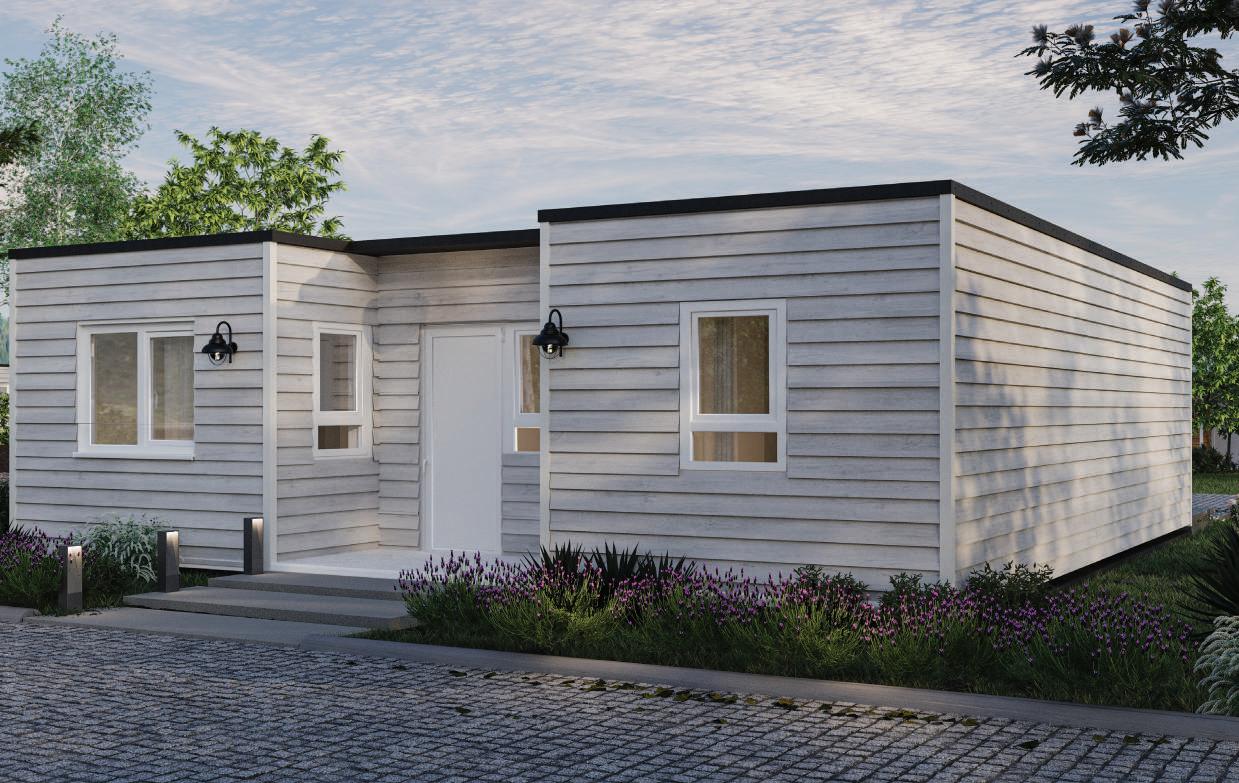

MMC Homebuilding is introducing its innovative approach to permanent-build but relocatable housing to the Irish temporary housing market. Committed to delivering affordable, sustainable, and high-quality housing through its portable optimised dwellings (PODs), these robust, relocatable, modular homes are designed to address the specific needs of diverse populations.
MMC Homebuilding’s PODs are built with precision in their Gloucester-based factory and certified by BOPAS with 60+ years of durability, ensuring highquality standards. These homes are designed to be relocatable and scalable, providing flexibility for various living situations. Reinforced OSB design and plasterboard for internal finishes ensure robust and long-lasting structures. These homes also come with natural waste cork renders, underfloor heating, tripleglazed windows, and PV solar panels, highlighting their commitment to energy efficiency and sustainability.
The PODs come in various configurations to cater to different needs. Each unit is designed with the user’s comfort in mind, featuring spacious living areas, full
kitchens, and customisable aesthetics to suit personal preferences. The modular nature of these homes allows for easy expansion and adaptability, making them suitable for both temporary and long-term use with their BOPAS 60+ years of certified durability.
The rising demand for temporary accommodation (TA) across Ireland highlights the critical need for innovative solutions. The number of people in emergency accommodation in Ireland has reached record highs; MMC Homebuilding’s PODs offer a viable solution to this crisis, addressing the urgent need for scalable, relocatable quality housing solutions.
MMC Homebuilding strongly emphasises sustainability. To enhance environmental

performance, their PODs are built using eco-friendly materials such as Low E recycled milk cartons and waste natural cork, which is carbon-negative. Integrating solar PV installations and triple-glazed windows ensures these homes achieve net zero annual energy costs, aligning with their vision of creating sustainable living solutions.
• Durability and certification: Each POD is designed to last over 60 years and is BOPAS certified, ensuring quality and compliance.
• Energy efficiency: Triple-glazed windows and solar PV installations help achieve zero net annual energy costs.
• High social impact: Constructed by prisoners on day release and ex-prisoners, the PODs contribute to community development.
• Modular flexibility: The design allows for easy extension and adaptability to meet various living situations.
• Customisable aesthetics: Exterior cladding options allow residents to personalise their homes.
MMC Homebuilding majority shareholder is a housing infrastructure fund managed by Gresham House, with over £8.3 billion of funds under management. This strategic backing provides MMC Homebuilding with robust financial support and reinforces its mission of delivering scalable housing solutions.
MMC Homebuilding’s PODs represent a significant advancement in temporary housing solutions. They combine innovative construction methods, social responsibility, and environmental sustainability with a commitment to quality, durability, flexibility, and community development.

The evolving housing market demands a rethinking of traditional economic models. MMC Homebuilding’s PODs offer high-quality housing and substantial socio-economic benefits. This comprehensive approach enables local authorities to deploy new solutions; MMC Homebuilding represents a forward-thinking shift towards more sustainable and equitable housing solutions.
For more information on MMC Homebuilding and its innovative PODs:
W: www.mmchomebuilding.co.uk


North’s housing supply strategy could be approved ‘fairly quickly’

Ireland which narrowly missed out on Executive approval, remains in “good shape” and could be approved quickly, MLAs have been told.
Answering questions before the Northern Ireland Assembly’s Committee for Communities, the Department’s senior official with responsibility for housing, Mark O’Donnell, said that while he did not want to be over confident, he believed that the draft Housing Supply Strategy, initially due to be published in March 2022, could be taken to the Executive “fairly quickly”.
Preparatory work for the Strategy, which plans to deliver over 100,000 new homes by 2037, began back in 2020. Initially delayed due to the Covid-19 pandemic, finalisation of the draft strategy coincided with the collapse of the Stormont institutions,
meaning it has yet to receive Executive approval.
Within the 100,000 home target at least a third are set to be social homes, prompting calls for the strategy to be prioritised by the Executive amid rising levels of housing stress in Northern Ireland.
At the end of 2023, there were 46,461 applicants on the social housing waiting list, 34,651 of whom are deemed in housing stress, a 7 per cent increase on Q4 2022. Increasing the social housing stock is recognised as a critical part of addressing this challenge.
If agreed by the Executive, the new
Housing Supply Strategy would require delivery of an estimated 2,222 new social housing units per year.
Recent social housing targets set by the Department for Communities average below 2,000 units per year.
The Social Housing Development Programme set a target of delivery of 1,950 social housing starts, and 1,400 social housing completions for the 2022/23 year.
Recently released figures show that housing associations narrowly exceeded those targets, completing 1,449 homes across 82 schemes, while starting work on 1,956 new homes. However, targets for the current
2023/24 year have been reduced, and concerns have been raised that a proposed 38.2 per cent cut in the capital funding available for the Department for Communities could see only 400 new starts funded in 2024/25.
The most recent annual budget, set by the Secretary of State in the absence of a functioning Executive, the Department recognised a 27 per cent shortfall in capital required for 2023/24.
O’Donnell, the Deputy Secretary of Housing and Sustainability, attended the Communities Committee alongside Permanent Secretary for the Department, Colum Boyle. In an opening address to committee members, Boyle laid out the “incredibly challenging” budgetary position for the Department in recent years, but stressed that housing was a main priority for the new Minister Gordon Lyons MLA.
One potential sticking point is that the Housing Supply Strategy was drafted on the assumption that the Executive would publish and operate a multi-year budget. A squeeze on public finances raises doubts over whether ambitions of the strategy will be fully funded.
The draft Housing Supply Strategy sets out a vision that “everybody has access to a good quality, affordable and sustainable home that is appropriate for their needs and is located within a thriving and inclusive community”, acknowledging that the adoption of a whole-system approach can ensure inclusive transformation of supply.
Rising levels of homelessness, coupled with a social housing waiting list in excess of 45,000, the vast majority of which are in housing stress, has been compounded by inflationary pressures on supply, rising rents, and an acknowledgement that current housing stock is not reflective of the changing needs of the population.
Social Housing Development Programme (SHDP) New social housing dwelling completions 2010/11 –Q3 2023/24
2010/112011/122012/132013/142014/152015/162016/172017/182018/192019/202020/212021/222022/23Q32023
The draft Housing Supply Strategy is centred on five key objectives:
1. Creating affordable options: Increase supply across all tenures and establish new intermediate products;
2. Prevention and intervention: Developing a holistic approach to housing provision, including wraparound and support services;
3. Quality: A comprehensive review of fitness standards;
4. Better places: New approaches to place-making; and
5. Decarbonisation: Working with housing providers to ensure new build homes are net zero carbon by 2026/27.
The return of the Executive has reenergised calls for inclusion of a standalone strategic housing outcome in any future Programme for Government. The New Decade, New Approach deal to restore power sharing in 2020 included a pledge to include housing as a specific priority in the Programme for Government (PfG), however, no such PfG was developed prior to the subsequent collapse.
At the end of February 2024, new First Minister Michelle O’Neill and deputy First Minister Emma Little-Pengelly MLA told the Executive Office Committee that the Executive was focused on bringing forward a PfG “as soon as possible”.
Undoubtedly, a critical element of an increase in Northern Ireland’s social housing supply will be progression of plans to revitalise the Housing Executive, including the reduction of prohibitive barriers for the organisation to borrow, and therefore build new social homes.
Speaking in late February 2024, O’Donnell said that officials in the Department were set to meet with the Minister to discuss “the pressing need” to address the huge levels of investment needed in the Housing Executive’s some 82,000 stock.
He added that discussions with the UK Treasury are ongoing around the budgeting treatment of the Housing Executive’s borrowing and the impact on public finances.

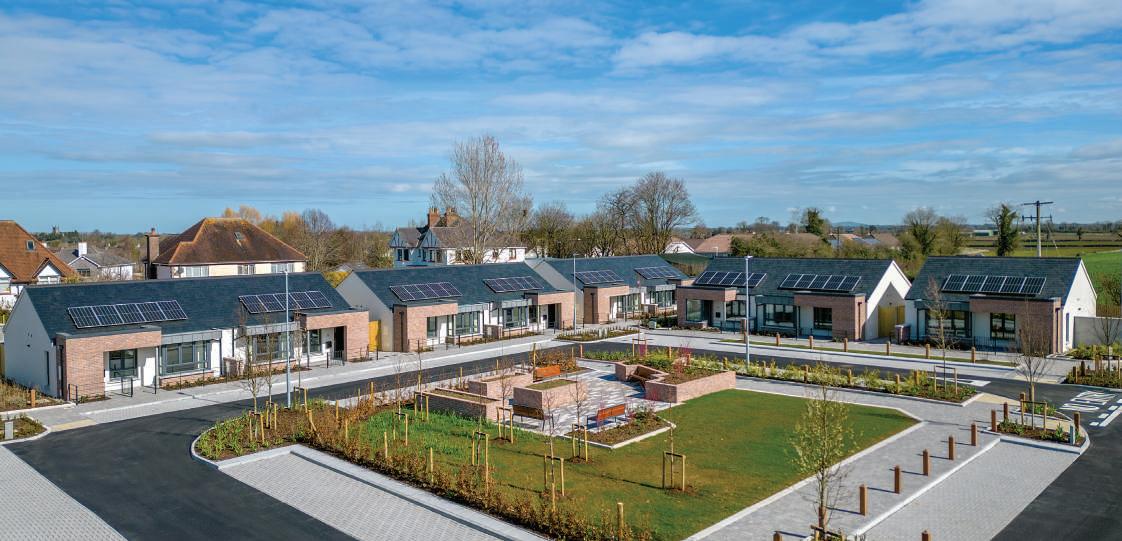
Oaklee, an approved housing body established in 2001 and a founding member of The Housing Alliance, is transforming to meet the need for social and affordable housing.
The priority of the Oaklee board for the next three years is to deliver more homes and to make a significant contribution to increasing the supply of social and affordable homes.
To guide our work, we have restated our purpose — why we exist — and refreshed our values to confirm what our partners and residents can expect of us and what we hold ourselves accountable to, as we deliver on our most ambitious plan yet.
Our mission is to change people’s lives by providing them with secure and stable homes which enables them to live, thrive and prosper. We do this by creating more sustainable and inclusive futures for people and communities through great housing.
Sharon Cosgrove, Oaklee CEO, commented: “Everything we do and achieve depends on our many partners, residents and of course our own team of dedicated people. We can only realise our ambitions by working together to achieve positive change.”
Despite the impact of external factors on our 2020-2023 plan including Covid-19 and the war in Ukraine, our record and performance during this period in relation to addressing building defects, improving health and safety compliance and resident services, is one we are very proud of.
We grew our housing stock and homes in management through our delivery programme, the completion of Acorn Housing and Social Housing Bundle 1. We also established three hubs that operate in Kilkenny, Tullamore and Ardee where we have “boots on the ground” and local connections strengthened. As we look forward and start our financial year from April, we are focused on enhancing prospects through housing.
The delivery of social housing at scale, with strong counterparties and with the addition of cost rental properties are all ambitions contained in the corporate plan.
The landscape has changed, with local authorities (in Dublin and commuter counties, Cork, and Limerick) increasingly asking large AHBs like Oaklee to deliver mixed tenure developments of both social and cost rental. This is a challenge and a new tenure we are excited to be involved in.
For that reason, Oaklee’s pipeline grew during 23/24 with more mixed tenure projects now being assessed by the team, and in turn are beginning to come through the organisation for consideration. Taking this change into account, embracing the opportunities presented for mixed tenure, the targets in this business plan propose an increase in cost rental, alongside social housing for 24-25 and beyond.
“We have a number of exciting projects currently in contract stage and once completed, will become landmark developments for the company” said Helen Moore, Director of New Business and Development.
Oaklee provides services to residents in Oaklee’s owned and managed housing, as well as in Comhar PPP Bundle 1. We strive to delivery high quality responsive services and to ensure that customers value and trust what we do and how we do
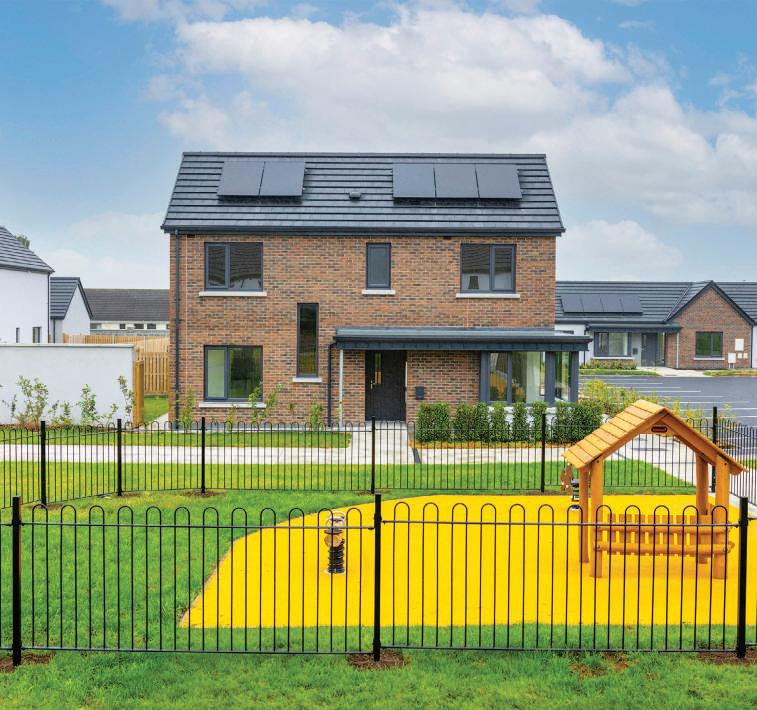
it. We make use of the feedback through regular surveys and strong resident engagement activities to design and to improve our services. We work collaboratively with support organisations, agencies, and service providers to ensure that our residents with specific needs are properly supported to sustain their tenancies and live independently. We also work with local authorities, An Garda Síochána, and other agencies to address anti-social behaviour and to make the homes and communities safer for our residents.
Our approach to building communities starts with using our learning to inform the type, location and design of new homes and communities, working closely with development colleagues in Oaklee and design teams on construction projects. The allocations and pre tenancy work, as well as the initial building of resident groups and resident engagement activities all help to ensure that we support the creation of thriving communities, where people can prosper. We set targets for service delivery across the range of services we provide, that we monitor monthly, and we use sector
benchmarking to drive performance in Oaklee, learning from others and sharing what we do well.
To support these ambitious company objectives, Oaklee has just completed a significant rebranding project. This unique identity will allow Oaklee to expand its communications channels and activities to achieve greater reach and drive increased awareness of the brand and provide the right foundations from which we can achieve great things over the next three years.
As we work to deliver against our objectives, our corporate values are what guide our behaviour and make sure every action, every decision, every word or promise we make leads to more and better homes for those who need one.
T: 01 400 2650
E: enquiries@oaklee.ie
W: www.oaklee.ie
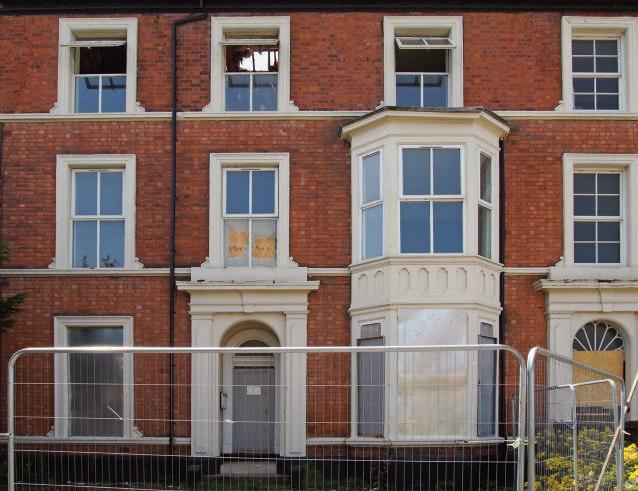
Almost 2,500 vacant homes have been returned to active use in 2023 under the Government’s Voids Programme, following a significant uplift in funding.
A total of 2,481 vacant social homes were brought back into active use across local authorities in 2023 under the Voids Programme, after a significant uplift in funding of €46 million.
Whilst 2023 did not obtain the largest expenditure and units returned, there is a significant increase from the year prior, with €28.9 million funding provided and 2,307 units returned in 2022. The highest amount of funding took place during the Covid-19 pandemic, with €56.5 million funding and 3,607 units returned. This figure suggests that there is a correlation between Government expenditure and the number of units being returned.
In 2019, €26.7 million was provided to return 1,503 vacant homes. When comparing the years 2014 to 2019 and 2020 to 2023, €1.45 billion was given in funding from 2014 to 2019, in comparison to €1.63 billion from 2020 to 2023.
Reflecting on the voids data which examines the total units returned between 2014 to 2023 across all local authorities, the highest returns equating to 3,607 units took place in 2020, with €56.5 million of total funding. Comparatively, the lowest returns took
place in 2018, with 1,765 units returned and €26.2 million of funding provided. When comparing per local authority, between 2014 to 2023, the highest units returned took place within Dublin City Council, with €86.8 million of funding provided and 5,252 units returned. Furthermore, the lowest units returned took place in Leitrim, with €2.7 million of funding and 207 units returned.
The total funding between 2014 and 2023 equated to €335.8 million with 23,315 units returned.
Of the €46 million recouped to local authorities for the Voids Programme in 2023, €3.4 million supported the continuation of payments towards planned maintenance and included funding towards stock condition surveys, which aims to help ensure quicker turnarounds for putting existing stock back into use.
Since 2020, the Government has spent over €163 million to return 10,820 homes to active use. This is almost half (46 per cent) of the homes returned in the lifetime of the programme since 2014 (23,315 units).
Minister for Housing, Local Government
and Heritage Darragh O’Brien TD said: “Refurbishment and the return to use of vacant properties helps to reduce pressure on existing housing stock, increase supply, and ultimately, provide much needed homes for people.
“Apart from addressing the need for social housing, the refurbishment of these unoccupied social homes also has a positive impact on communities. It prevents the decline and abandonment of vacant properties, which, in some instances, can lead to antisocial behaviour.
“Speed in tackling vacant social housing is also critical to regeneration and improving the vitality and vibrancy of communities in towns and cities across the country. Through this Housing for All action, we have now shifted to a position of planned maintenance of social housing stock to ensure the fastest possible turnaround and re-let times for social housing stock.”
The latest homelessness bulletin (April 2024) shows that there are currently 14,009 people are accessing emergency accommodation throughout the State. This is in spite of the Census 2022 figures which show that there are currently 166,792 vacant homes and apartments.
Census 2022 outlines that there are now 330,632 homes rented from private landlords, and the proportion of owneroccupied homes has fallen from almost 70 per cent to 66 per cent, in the 11 years to 2022.
Making more efficient use of existing housing stock is a key action of the Government’s Housing for All plan. The Voids Programme aims to support local authorities in preparing vacant homes for re-letting and builds on the ongoing work to tackle vacancy and dereliction to bring vacant properties into re-use for housing.
Within the Voids Programme, units returned can be defined as the number of vacant homes back into active use.







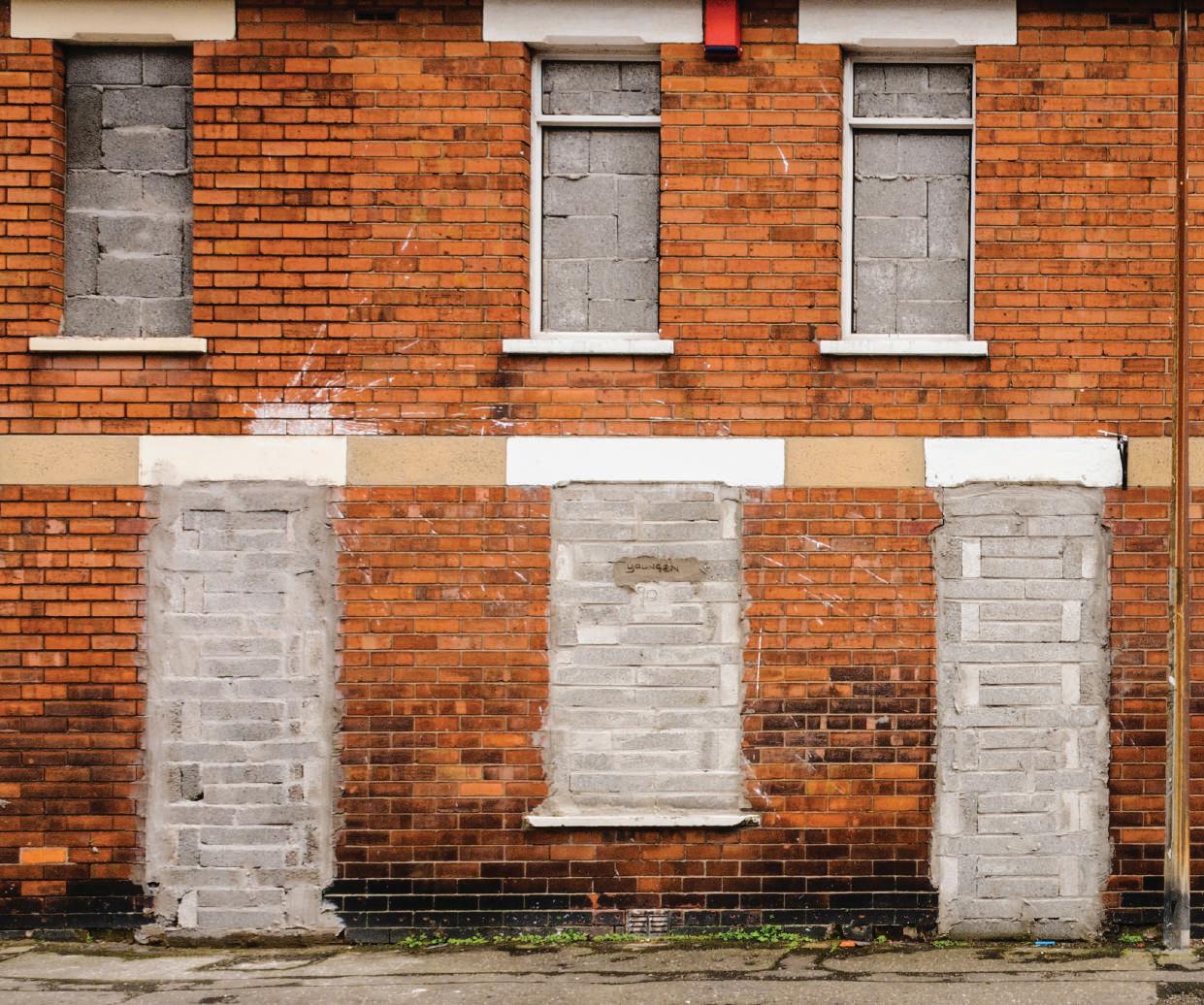
7,366 applications have been received for the Vacant Property Refurbishment Grant Scheme since its launch in 2022, the most recent figures by the Department of Housing, Local Government and Heritage show.
Of the total applications, 3,937 were made to the applications for Vacant Property Refurbishment Grant and 3,415 applications were made for the Derelict Property Top-up Grant stream of this scheme.
In total, 4,278 total Vacant Property Refurbishment Grants were approved from its launch to 31 March 2024.
From 2022 to Q1 2024, Donegal County Council had the highest number of applications among the 31 local authorities, with over 668 applications received. Of those applications, 413 had been approved as of 31 March 2024.
However, per county, Dublin had the highest number of applications – with 1,196 applications received in its four local authorities combined.
Additionally, Cork County Council received the highest number of applications approvals per local council, with 404 properties being granted permission to date.
Mayo County Council had the second highest number of applications to a single authority, with 454 applications received and 287 approved.
There were 395 applications made to Kerry County Council, and with 113 approved, the rate of applications approved equated to approximately 29 per cent.
This represents the lowest approval rate of any local authority within the first quarter of 2024.
Dún Laoghaire-Rathdown obtained the highest approval rate of 90 per cent, with 155 applications received and 139 approved. This was followed by Kildare County Council, which granted 76 per cent of application approvals.
Furthermore, Galway City Council had the lowest number of applications at 54 by the 31 March 2024, of which 38 were approved.
On a broader scale, 1,455 applications were recieved in Q2 2023, the highest amount since the grant’s launch. Despite this, the quarter which received the greatest number of approvals took place during Q4 2023, with 1,180 applications granted permission.
Reflecting on the most recent quarterly figures, Q1 2024 received 1,257 applications and granted permission to 953 properties, suggesting that momentum is needed to continue to increase numbers within vacant properties on a national basis.
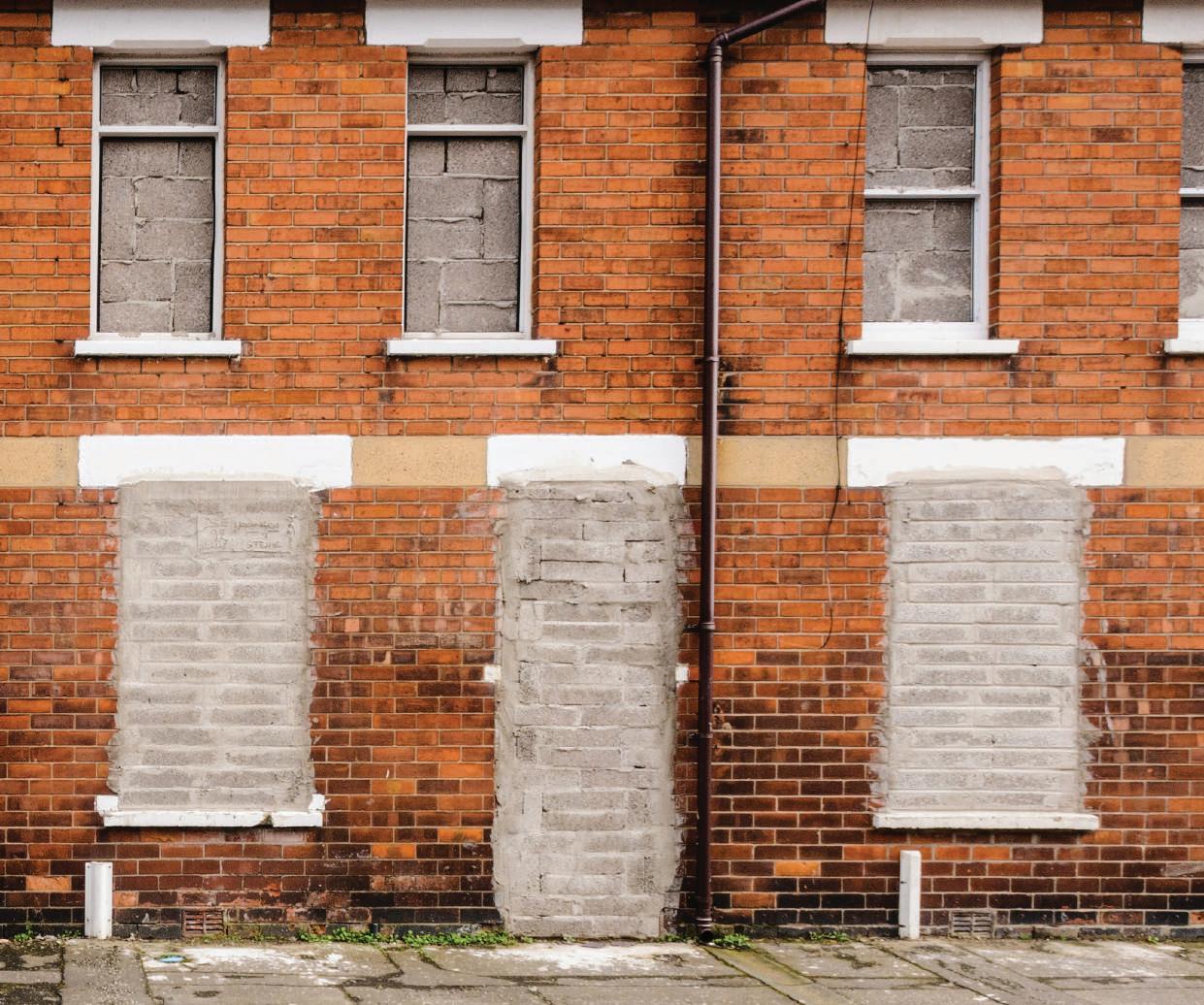
The Vacant Property Refurbishment Grant is a payment to help refurbish a vacant house or building into a permanent home or rental property.
Launched in July 2022, a grant of €50,000 is available for the refurbishment of vacant properties for occupation as a principal private residence or to be made available for rent. Where a property is derelict, a top up grant of €20,000 is available, bringing the total grant available for a derelict property up to €70,000.
The Government has lowered the threshold for long-term tenants to own their local authority homes.
In January 2024, the Government lowered the qualifying threshold for the Incremental Tenant Purchase Scheme to €11,000 from €12,500.
New eligibility criteria to the Incremental Tenant Purchase Scheme, which includes lowering the minimum income requirement and broadening of the welfare payments that can be counted as income, was introduced on 29 January 2024.
The Government has indicated that the scheme is particularly geared at helping older people buy their home, with Housing Minister Darragh O’Brien TD adding that he aims to “strike a balance” between facilitating long-term tenants to purchase their homes but not unduly diminishing the local authority housing stock available for those on the waiting list.
Around 350 homes were bought under
the Incremental Tenant Purchase Scheme in 2022, which allows local authority tenants to buy their homes with discounts on the market rate paid of between 40 to 60 per cent, depending on income. The changes to the qualifying criteria of the scheme mean that residents with an annual income of €11,000 are now eligible to apply (replacing the previous income limit of €12,500).
In addition to changes in the income eligibility, the previous requirement in the case of joint applications that both tenants had to have been receiving social housing support for 10 years has been changed and now only one tenant is required to fulfil the requirement.
These changes are based on Housing for All’s commitment to maintaining the right of social housing tenants to purchase their own home if they wish
and are part of the work being carried out on the broader social housing reform agenda, with the objective of bringing consistency and fairness across the different schemes in this area.
Minister for Housing, Local Government and Heritage Darragh O’Brien TD says:
“These changes to the Incremental Tenant Purchase Scheme will help those social housing tenants who wish to own their own home to do so as well as providing housing security and supporting people to remain living in their communities.

“The scheme is one of a number of affordable purchase options which meet the needs of those requiring longterm housing support and helps lowincome tenants make a start on the route to homeownership.”
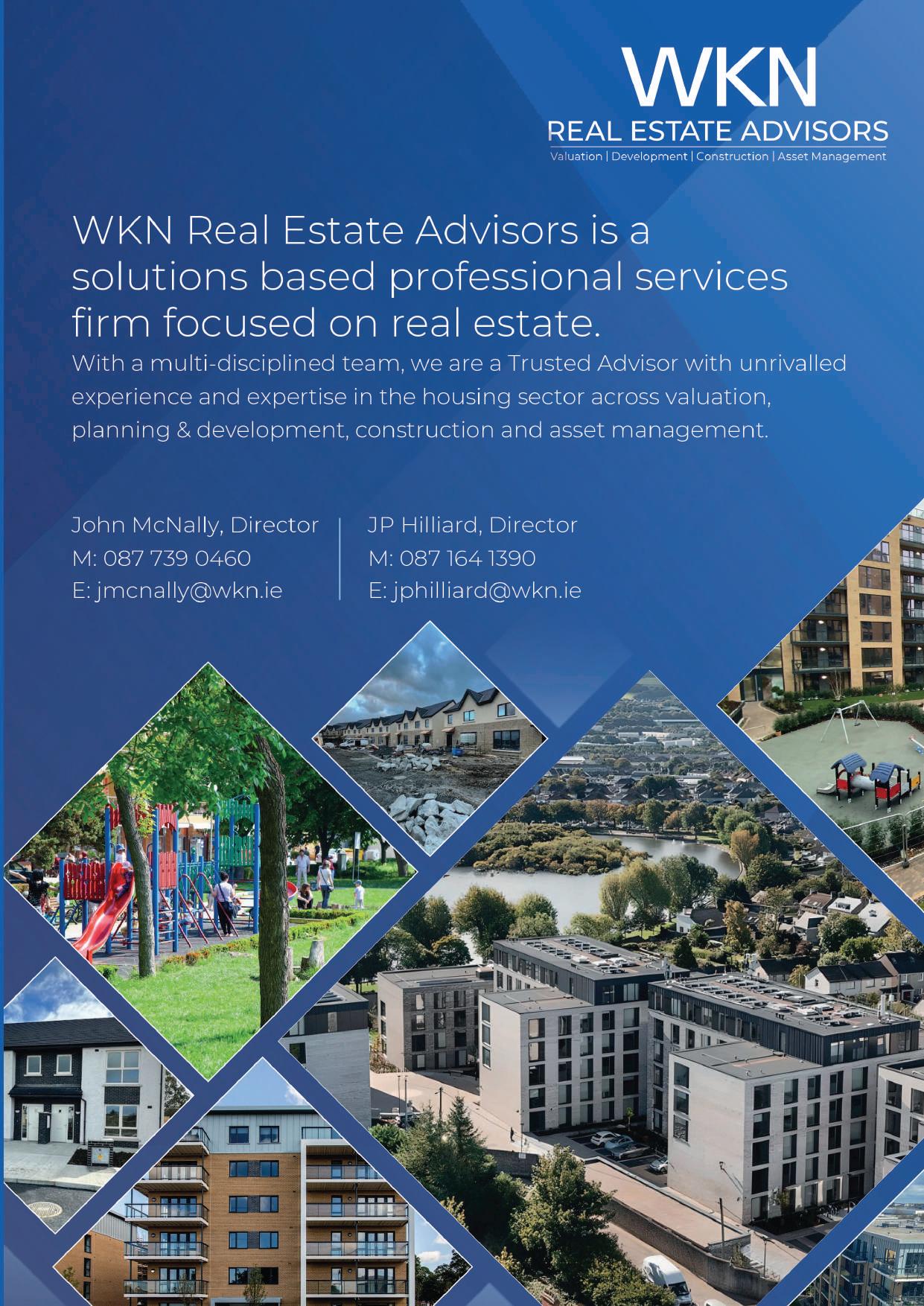
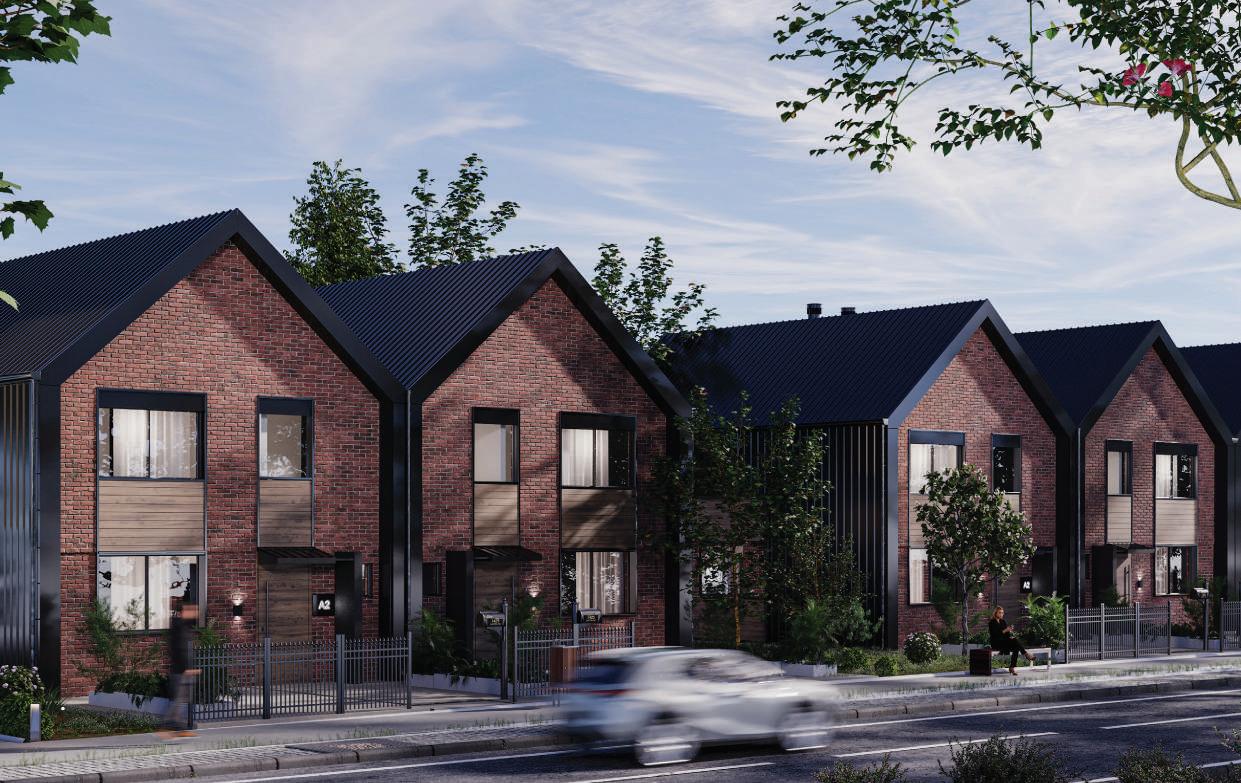
Hapi Homes’ innovative approach to construction, which utilises MMC and light gauge steel, aligns perfectly with the Government’s agenda to meet demand challenges and provide homes which are sustainable and fit for a net zero future.
The Irish housing market faces a persistent challenge in meeting the demand for affordable, high-quality homes. As the Government emphasises modern methods of construction (MMC) to address these challenges, Hapi Homes provides an innovative approach using MMC and utilising light gauge steel. Our methods align with the Government’s MMC agenda and offer faster, more affordable housing solutions that are also highly customisable.
The benefits of light gauge steel frames
Light gauge steel (LGS) is a versatile and durable material that provides several key benefits:
• Strength and durability: LGS is incredibly strong and capable of withstanding significant stress and load. It is also resistant to pests, fire, and moisture, ensuring long-lasting structural integrity.
• Precision and efficiency: Steel components are manufactured with high precision, reducing the need for on-site adjustments and minimising waste. This precision ensures a smoother and faster construction process.
• Sustainability: Steel is one of the most recycled materials globally. Using light gauge steel significantly reduces the environmental impact of construction, aligning with our commitment to sustainability.
• Energy efficiency: LGS construction inherently supports energy-efficient design. The precision manufacturing of steel components allows for tight building envelopes, reducing thermal bridging and improving insulation. This results in more energy-efficient homes, reducing homeowners’ heating and cooling costs and contributing to a lower environmental impact.
At Hapi Homes, we pride ourselves on our comprehensive in-house design, architecture, and engineering expertise. Our team of professionals ensures that every project is meticulously planned and executed to the highest standards. Additionally, our two dedicated factories – one for producing steel frames and another for off-site construction – enable us to maintain quality control and efficiency throughout the building process.
One of the primary challenges in the Irish housing market is the speed and cost of construction. Traditional building methods can be slow and expensive, often leading to delays and budget overruns. Hapi Homes’ use of light gauge steel and off-site building addresses these challenges directly, offering a faster and more affordable solution.
The prefabrication of light gauge steel components allows for a much quicker assembly process on-site. Our homes can be constructed up to 40 per cent faster than traditional methods, significantly reducing ground-breaking time to occupancy. This rapid construction process is crucial in addressing the housing shortage, enabling us to deliver high-quality homes at a pace that meets market demands.
The efficiency of light gauge steel construction extends to cost savings as well. By reducing the need for extensive on-site labour and minimising waste, we can lower overall construction costs by up to 30 per cent. These savings are passed on to our clients, making our homes more affordable without compromising quality or sustainability.

Every homeowner or developer has unique needs and preferences, and Hapi Homes is dedicated to providing highly customisable housing solutions. Our approach allows for significant flexibility in design, ensuring that each home is tailored to meet specific requirements.
Our innovative configurator tool empowers clients to design their homes with ease. Users can choose from various interior styles, including modern, mid-century modern, and Scandinavian, to create a home that reflects their taste. This tool also allows for customisation of layout, finishes, and other key elements, ensuring that every home is as unique as its owner.
To cater to a diverse range of clients, Hapi Homes offers both turnkey solutions and self-build housing kits. Our turnkey solutions provide a comprehensive package covering every aspect of construction, from design to final finishes. For those who prefer a more hands-on approach, our self-build housing kits include all the necessary materials to allow builders, developers, and homeowners to benefit from the MMC option provided by Hapi Homes.
Hapi Homes can play a role in revolutionising the Irish housing market with its innovative use of light gauge steel and commitment to modern construction methods. Our ability to deliver highly customisable homes faster and cheaper than traditional methods makes us a valuable partner in the housing sector. By offering turnkey solutions and self-build kits, we provide flexible options to meet the diverse needs of our clients.
Sustainability is at the core of everything we do. Our use of ecofriendly materials and energy-efficient design practices ensures that our homes are high-quality, affordable, and environmentally responsible. As we continue to support MMC’s goals, we are dedicated to positively impacting the housing market and the broader community.
T: 01 442 8139, or email us at E: hello@hapihomes.com. W: www.hapihomes.com
Housing Minister Darragh O’Brien TD has stated his intention to include proposals for significant reform of RPZs in the upcoming rental market review.
Since their introduction, RPZs have undergone change, but a comprehensive review of their effectiveness is still pending. The Minister for Housing, Local Government and Heritage, Darragh O’Brien TD has told Housing Ireland Magazine that the Review of the Private Residential Rental Sector is due to be published by Q3 2024.
Meanwhile, recommended reforms in the Report of The Housing Commission include replacing the current RPZ system with a ‘reference rents’ model.
Published in May 2024, the report states: “Rent regulation is an integral part of a well-functioning rental market, as both tenants and landlords need certainty.”
The stated objective of RPZs is to create a more stable and sustainable rental sector, thus providing predictability for both tenants and landlords. However, the system faces significant critique, including as an alleged barrier to investment. Furthermore, renters are increasingly experiencing affordability challenges due to “historically high rents, while those seeking to find rental accommodation are met with low availability”, according to the report.
The current market conditions in Ireland have become increasingly difficult for both landlords and tenants. Landlords have been constrained by the Rent Pressure Zone regime and have reported a lack of policy certainty and diminished net rental returns as reasons for leaving the rental market. The Housing Commission highlights the need for evidence-based regulation to balance affordability for tenants with the profitability and viability for landlords.
The Housing Commission asserts that the “methodology employed when extending the system to cover new areas is not fit for purpose,” leading to “inconsistencies”. For example, 74 per cent of private rented dwellings are currently under RPZs, but extending these zones is hampered by criteria based on average rents, leaving some areas unregulated.
Recommendations from The Housing Commission suggest substantial changes. These include transitioning to cost rental housing, where rents are based on the cost of provision, management, and maintenance, rather than market rates. This system, it suggests, would be managed by public and non-profit sector organisations to ensure long-term affordability.


The Commission also proposes that replacing the current RPZ system with a ‘reference rents’ model, pegging rent increases to local benchmarks and considering factors like management costs and household incomes. This, it contends, would unlock greater certainty for both landlords and tenants.
Speaking with the Housing Ireland Magazine, Minister for Housing, Local Government and Heritage, Darragh O’Brien TD reflects on these suggested changes within The Housing Commission’s report.
“The RPZs had a sunset clause. I inherited the RPZs. They had a rental increase ceiling of 4 per cent and when I came in [as Minister], I changed it to 2 per cent.
“The reason I extended the RPZs for one year is because we are in the middle of the Review of the Private Residential Rental Sector. They [RPZs] were due to end at the end of this year [2024]. I did not want a cliff edge, so we put it onto the end of 2025 to give certainty for the renter.
“The recommendations from The Housing Commission are interesting. I know some commentators gave them a guarded welcome and said they would be

complicated and there is a complexity in relation to tagging rents in different areas. It is something that deserves consideration and I am going to be asking to be included in the Review of the Private Residential Rental Sector because it will be the next government who will make the decisions around what replaces RPZs.
“But what I really did not want was RPZs to just end this year and then anyone could set rents at any level. I announced it [the extension] in early May [2024] so that tenants and landlords are abundantly clear that the status quo remains until 2025. That is the right way to do it.”
Sinn Féin housing spokesperson, Eoin Ó Broin believes that The Housing Commission’s “critique of rent pressure zones is very well made”.
“It is something we have been arguing for a long time. Their talk of reference rents is interesting; it is a little bit different to our alternative proposal. As you know, we have proposed a ban on rent increases for three years, and then linking all rents to an index. But reference rents are baked into our proposals in terms of how you would set the rents for new properties coming into the market.”
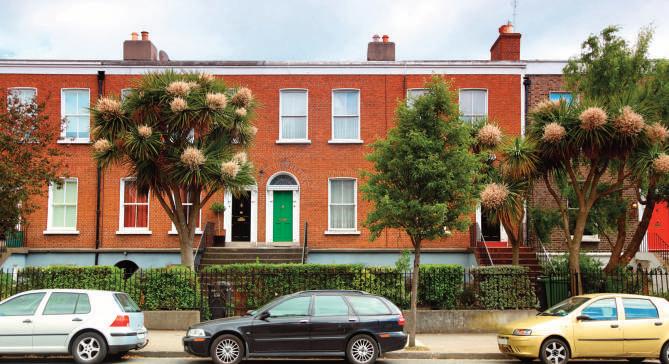
A Rent Pressure Zone (RPZ) is a designated area where rental increases are capped to protect tenants from sharp rent increases. In these zones, rent increases are limited to either the general rate of inflation or 2 per cent per year; whichever is lower. Initially, the rate was set to 4 per cent per annum.
This reduction applies to new and existing tenancies unless an exemption is granted, for instance, due to significant changes in the property’s nature. New rentals or properties that have not been rented in the past two years are exempt from RPZs. RPZs were to initially set to remain in place until 31 December 2024, however, on 14 May 2024, the Government agreed to extend the deadline until 31 December 2025.
Introduced in 2016, RPZs were part of the Residential Tenancies Act 2004, which prohibited rents above market rates and established mechanisms for dispute resolution, due to spiralling rental prices in certain areas.



Ivana Bacik TD is the Labour Party Leader, Party Spokesperson on Housing, Local Government and Heritage and Northern Ireland. She was first elected to serve in Seanad Éireann in 2007. Ivana was elected to Dáil Éireann to serve as TD for Dublin Bay South in July 2021, following a by-election resulting from the resignation of Fine Gael TD Eoghan Murphy. In March 2022, Ivana became the 14th Leader of the Labour Party.


Jim Baneham is Director of Delivery and Innovation at The Housing Agency. He graduated from DIT Bolton Street in 1989 as a Chartered Quantity Surveyor. Soon after he began working with the National Building Agency (NBA) in the area of delivery of social housing and other local authority facilities. From 2007, he moved into a corporate role within the NBA before moving to The Housing Agency in 2011. It was there he helped develop the AHB funding model. Since then, he has gone on to be Head of Housing Supply and Head of the Mortgage Support Section.


Joanna Bannon is a Director in Fieldfisher’s Real Estate department. She is an experienced and accomplished advisor to many institutional clients in relation to real estate transactions and leads a team servicing volume housing acquisition projects, long terms leasing and residential investment lending. Joanna also advises developers in relation to the sale of completed units and provides advices in relation to the construction and finance of the sites.





































































































Pat Barry is Chief Executive Officer of the Irish Green Building Council (IGBC) which he co-founded in 2010. He is an Architect with many years of experience in Ireland, Europe, a Masters in Environmental design of buildings from University of Cardiff and is a qualified Passive House and DGNB consultant. The IGBC is an membership organisation of over 430 corporate members with a mission of transitioning Ireland construction sector to sustainability, through advocacy, education and innovation, a partner in Construct Innovate – Ireland’s construction technology centre. IGBC run a number of programmes including Home Performance Index the national certification for quality sustainable new homes and EPD Ireland a programme for Irish construction product manufacturers to transparently declare the environmental impact of their products.
Neil Bolton, Respond’s Director of Housing, has over 20 years of strategic and operational experience in social housing in the UK and Ireland. He has held executive roles, including Operations Director and Property Director with Clúid Housing in Ireland and Customer Services Director for a large Bathbased Housing Association in the UK. Neil also worked in senior housing roles for Bristol City Council and served as a non-executive Director for the Irish Council for Social Housing from 2015-2017. He holds a PG Diploma in Housing Studies, a PG Diploma in Business and Executive Coaching, and is a Chartered Member of the Chartered Institute of Housing.
Hugh Brennan is CEO of Ó Cualann Cohousing Alliance CLG. Hugh had worked in various contracting and consulting roles in Ireland before spending 10 years on Humanitarian Aid projects in South Africa and Haiti. Returning to Ireland, he cofounded Ó Cualann in 2014. Hugh has assumed the lead in developing the Ó Cualann model for affordable housing delivery throughout Ireland. In collaboration with local authorities, other AHB’s and community led housing groups, Ó Cualann plan to deliver over 1,200 homes over the next five years.




































































































Kieron Brennan has been CEO of Cooperative Housing Ireland since 2014. He has extensive experience in the community, voluntary and cooperative sector, which saw him lead the Irish League of Credit Unions from 2008-2014. Prior to this, he held a leadership position as a Programme Manager with POBAL, a not-for-profit community development and financing company, which manages programmes on behalf of the Irish Government and the EU. He was also Irish Manager of Triodos Bank (one of Europe’s largest ethical banks), Executive Director of Clann Credo (social development fund), and Chief Executive of Partas.

Andrew Brownlee is CEO of SOLAS, the state agency responsible for Further Education and Training (FET), Safepass and construction skills schemes, and the coordinating provider for craft apprenticeships in Ireland. He has driven a transformation programme, which has increased craft apprenticeship capacity by 50% from pre-pandemic levels and resulted in unprecedented demand for FET with the learner base growing by 17% in 2023 alone. Now more than one-in-ten adults in Ireland are involved in either an apprenticeship, construction scheme or another further education course. Andrew has helped to position FET and apprenticeship as a key resource in addressing the housing challenge. Key developments have included the Modern Methods of Construction demonstration park being established at the National Construction Campus at Mount Lucas; six centres of excellence focusing on ZEB and retrofitting upskilling; an online renewal system for Safepass, and the rapid expansion of Skills to Advance, which offers free or heavily subsidised upskilling to enterprise (including a major focus on construction).

Liam Burke is Senior Executive Officer in the Housing and Community Development Department at Fingal County Council. He has over 40 years of local government experience, working mainly within the housing area, and is widely respected across the sector. He manages the delivery of housing support and homeless services in Fingal and the administration of the Tenancy Services Division and has worked extensively on the delivery of Traveller specific accommodation. Liam has led strategic and operational change and is committed to the transformation of systems in the delivery of housing services.


Michael Carey is Chairman of The Housing Agency. He has extensive experience in overseeing State bodies, having served as Chairman of Bord Bia (2011-2018), and as Chair of the Grow Dublin Tourism Alliance in 2016. He is the Executive Chairman of The Company of Food, a specialist food investment business, providing equity to start-up and established high-growth food businesses, and is also Chairman of East Coast Bakehouse, Ireland’s largest biscuit manufacturer. He has been involved in several not-for-profit initiatives: Chair of Soul of Haiti Foundation (2009-2015) and Traidlinks Uganda (2013-2016) member, Clinton Global Initiative (2009-2015); and a current member of the Emeritus Advisory Board of Smurfit Graduate Business School.


Since October 2023, Paul Carroll has been Interim Director of Housing and Community Development at Fingal County Council. He is responsible for meeting Fingal’s ambitious targets under Housing for All, through the construction of large scale affordable, cost rental and social housing schemes. A graduate of Trinity College, Paul previously held the position of Senior Engineer in the Planning and Strategic Infrastructure Department, before which he worked in a variety of roles in both the public and private sector. Paul draws on his expertise in public sector procurement, planning and project management to help deliver sustainable communities in Fingal.


Collete Cassidy is a Senior Associate in the Property department at O’Connor LLP and has acted for a number of housing charities in Ireland. Collete is currently advising extensively in relation to the acquisition of land and houses for social and affordable housing on behalf of a number of Housing Bodies. She has wide experience in the acquisition of development land and the various planning issues, easements and wayleaves, and other property issues that arise in those transactions. Collete has also advised on contractual issues and collateral warranties arising on the building and development of sites.


Padraic Clancy is Director of New Business and Development, leading the Co-operative Housing Ireland Development Team. Padraic has over 25 years’ experience in property acquisition and development and holds an Honours Degree in Surveying and a National Diploma in Estate Management.
Padraic has managed properties on behalf of NAMA, all major banks and receivers and is a specialist in property management, security and maintenance. Padraic was previously Head of VPSitex in Ireland, managing the security and maintenance works on large mixed property portfolios for PwC, Mazars, Grant Thornton and Duff and Phelps.


John Coleman has been Chief Executive of the Land Development Agency since its inception in September 2018.
John previously held senior roles at Ireland’s National Asset Management Agency (NAMA), worked extensively on the set up of its Residential Delivery division and was its Chief Financial Officer.
John is a graduate of University College Dublin (BComm) and a chartered accountant (FCA). Prior to joining NAMA in 2011 he worked in banking and accountancy.


Mary Conway is Chairperson at Irish Property Owners Association. Mary is a qualified Nurse and Midwife and with a Master’s Degree in Nursing (Clinical Practice) from UCD. She has been a residential landlord for 28 years with experience in student lets, houses of multiple occupancy, apartment letting, and Airbnb. She was the first female committee member of the Irish Property Owners Association. In addition to property management, lettings and sales of property, Mary is Ireland’s first Senior Move manager and Certified Living in Place Professional. She supports older persons and their families who are going to transition to a new living space or rethink their current living arrangements.





































































































Sharon Cosgrove is CEO of Oaklee since 2016 and during that time has led significant change and growth. Now an independent group structure, Oaklee has a strong diverse team with a passion to make a difference to the lives of their residents. Sharon held several previous senior roles in the NGO sector including CEO of the Asthma Society of Ireland and Sonas Housing. Sharon’s focus over the last four years has been on achieving high standards in customer service, creating a safety and compliance culture, delivering high quality sustainable developments, building a valiant brand for Oaklee, and ensuring the long-term financial viability of the company. Sharon is currently Vice Chair of The Housing Alliance and has been a key industry stakeholder by delivering Acorn Housing’s SPV and the Comhar Consortium, the first social housing PPP bundle in Ireland. Sharon is committed to delivering Oaklee’s Corporate Strategy 2023-25 – delivering more homes through strong partnerships and strengthening communication and engagement with stakeholders.
Kath Cottier was appointed as CEO at Fold Housing in January 2023. Kath has over 20 years’ experience working in the Irish housing association sector; leading development, property and housing teams. Prior to Fold, at Executive level in Clúid and Clann Housing, she was responsible for front-line services and working to lead the organisations strategic development and growth as well as contribute to strengthening the housing association sector. Kath holds a MA in Geography, diplomas in Urban and Community Development and Property and Facilities Management, and an MSc in Management Practice from the Irish Management Institute. She a chartered member of the Chartered Institute of Housing, and chair of their Ireland Board. She is also a founding member of the Construction Defects Alliance lobbying for financial redress for individuals and housing associations who bought homes that don’t meet building standards.
Niall Cussen is Ireland’s Planning Regulator and Chief Executive of the Office of the Planning Regulator (OPR) since its establishment in April 2019. The OPR works to ensure Ireland develops sustainably while protecting our environment and enhancing communities. The OPR independently assesses statutory local government plans for their fit with Government planning policy and conducts reviews of systems and procedures used by local authorities and An Bord Pleanála in their statutory planning functions. OPR also conducts research, training and public awareness around planning. Prior to his appointment, Niall was Chief Planner at the Department of Housing, Local Government and Heritage.



































































































Dara Deering is CEO of Home Building Finance Ireland having joined the organisation on 2 September 2019. Dara has extensive experience in financial services having previously served as Executive Director and Head of Retail Banking at KBC Bank Ireland plc since February 2012. During that time Dara led the launch and implementation of a new retail bank, broadening the range of products and services available, and offering a new banking alternative for Irish consumers. Prior to her time in KBC Dara held a number of leadership positions in the retail financial services industry. She holds an MBA from Smurfit Business School and a Bachelor of Science Management from Trinity College Dublin.

Alan Dillon TD is Minister of State at the Department of Housing, Local Government and Heritage with special responsibility for Local Government and Planning. He was appointed to this role on 10 April 2024. He is also Chairperson of the Fine Gael Parliamentary Party. Alan holds a Bachelor’s degree (B.Sc.) in Applied Mathematics and Biology from Maynooth University, a Master’s degree (M.Sc.) in Pharmaceutical Science from the RCSI and a Postgraduate Diploma in Education from NUIG.

Graham Doyle is Secretary General of the Department of Housing, Local Government and Heritage, having been appointed in July 2020 after the formation of the new Government. Previously he was Secretary General of the Department of Transport, Tourism and Sport. Graham was an external recruit to the Civil Service in 2013, initially responsible for the public transport and climate change portfolio. His background is in aviation management and business consulting with experience in insolvency, corporate finance, and business strategy. He is a Chartered Accountant by profession, having trained with PwC, and holds a range of business-related qualifications, including an MBA. Beyond his own role, Graham is a member of cross-government groups and boards including, for example, the Civil Service Management Board, the Public Service Leadership Board, and the Project Ireland 2040 Delivery Board.


David Duffy is Director of Property Industry Ireland (PII), Ibec’s sectoral association for businesses in property and construction, providing an independent and inclusive representative organisation for all subsectors of the Irish property industry. PII’s policy focus is member driven and in recent years has included the Planning and Development Bill, the impact of RZLT and LVS on viability, the availability of zoned and serviced land, and the National Planning Framework and its review. Before joining PII, he was a senior research officer at the ESRI, where his main research area was the housing market. He has published on such housing market issues as measuring house price change, negative equity, affordability, and household formation.


Sinead Dunne joined The Housing Agency as CFO in October 2022. A qualified accountant by profession, she has over 20 years’ experience in leadership roles across the private and public sector having worked with AIB, Accenture, The Institute of Public Administration, Musgraves, South Dublin County Council and Dún Laoghaire-Rathdown County Council. She holds a BA from UCD along with Diplomas in Leadership Development and Executive Coaching from Smurfit Business School.


Declan Dunne has been CEO of Respond since August 2016, with extensive experience in both corporate and non-profit sectors. He previously built and sold a business to an American multinational, becoming its General Manager in Ireland. Formerly CEO of Sophia Housing, Declan has contributed to numerous boards focused on housing, education, and welfare. He was a non-executive Director of the Ballymun Regeneration Board and served two terms on the National Education Welfare Board. Declan received the Distinguished Leader Award from the Ireland United States Alumni Association, presented by the U.S. Ambassador to Ireland, Claire D. Cronin, in January 2024.



Kate English is a Director, Head of Real Estate Research at Deloitte. With an undergraduate and master’s degree in economics from University College Cork, Kate analyses the real estate market through an economic lens, conducting data driven research across both the residential and commercial property markets in Ireland. Supply and demand dynamics is at the core of her analysis, with demographic indicators also a heavy feature. Having previously worked as the Chief Economist, Head of Ireland Research & Insights at Cushman & Wakefield and a Senior Economist/Researcher at Sherry FitzGerald, Kate’s experience in real estate spans 8+ years. She produces a range of internal and external Deloitte publications, focussing on the economic and real estate climate. In addition, she produces bespoke research reports for public and private sector clients, is a frequent voice in Irish media and undertakes speaking engagements at industry events.


Claire Feeney is Director of Services and Inclusion at The Housing Agency. Her Directorate consists of Approved Housing Body Services, Local Authority Services, the National Housing First Office, and Part V, all of which act as centres of excellence in their given areas to support The Housing Agency’s stakeholders. She joined Dublin City Council in the late 1980s. She spent time on secondment to the Department of Environment, Community computerising Motor Tax Offices and moved back to Dublin City Council in 2003 and had responsibly for a number of regeneration projects. She moved to the Limerick Regeneration Agencies in 2007 working as Project Manager for the Physical and Economic Regeneration. In 2012 Claire moved to The Housing Agency to manage the Mortgage to Rent Scheme nationally and drive the National Housing Strategy for Disabled People 2022-2027.


Ivan Gaine is Managing Director, Commercial and New Homes for Sherry FitzGerald. Ivan has considerable expertise within the property industry in Ireland and manages a large team of experienced property professionals across Ireland. His team works to build long-term partnerships with developer and non-developer clients to develop tailored solutions to achieve clients' risk/return objectives by providing strategy advice, portfolio management and transaction services across new homes and commercial sectors. His drive is to provide strategic, policy and sales consultancy advice to a wide range of institutional, capital and developer clients. Ivan started his career with Sherry FitzGerald in 1999, initially within DTZ Sherry FitzGerald (now Cushman & Wakefield). After qualifying as a chartered surveyor, Ivan moved to Sherry FitzGerald New Homes & Commercial where he specialises in residential development land, mixed use developments and portfolio work. Ivan is a member of ULI (Urban Land Institute) and Chairman of Property Industry Ireland (PII).





































































































Tom Gilligan is Director of Services at Mayo County Council with responsibility for Housing, Roads, Service Development and the Ballina Municipal District. An Accountant with an MBA in Local Government, prior to joining Mayo, Tom worked as the Head of Finance in both Limerick and Waterford County Councils’ and was a central figure in the successful reform of local government arrangements in both locations. Founder of the popular crowd-sourcing, portal website VacantHomes.ie which Mayo County Council is the lead authority on behalf of the Local Government Sector, Tom is a key influencer and change leader in the whole area of vacancy and bringing vacant homes back into use.
Barry Gorman is the National Renewables Sales Manager at leading heating technology manufacturer Grant and has over 20 years’ experience in the heating sector. Barry is responsible for helping to advance the deployment of renewables in Ireland through Grant’s award-winning sustainable and highly efficient heating technologies including the A+++ rated, Grant Aerona³ R32 air to water, air source heat pump range, HVO biofuel compatible Grant Vortex condensing boiler range, Grant Spira Pell condensing wood pellet boiler range and associated products. Barry leads the team working closely with local authorities and developers across the country to support social housing projects, new build developments and retrofit projects to provide integrated heating solutions.
John Hannigan is Chief Executive Officer of Circle Voluntary Housing Association. He took up his current position in September 2017. John previously held the position of Managing Director of Sunbeam House Services from 2010. Prior to that, he worked as Finance Director with Respond Housing Association. John is currently the Chair of The Housing Alliance, an alliance of seven of the largest Housing Associations in Ireland. John has more than 30 years’ experience in the Social Housing sector in the UK and Ireland. He is also the incoming Chair of the Governing Board of the Chartered Institute of Housing with 17,000 members worldwide. John is also a Chartered Director, a Fellow of the CIH and a Fellow of the Chartered Association of Certified Accountants. John is also a Board Member of Clanmil Group in Northern Ireland and Chairs two of its subsidiaries.




































































































Roger Harrington is a Principal Officer at the Department of Housing, Local Government and Heritage. He has responsibility for the policy and operations for the Capital Advance Leasing Facility (CALF), and working with the Housing Agency in the context of the acquisitions fund (HAA). CALF is the principal funding mechanism for the AHB sector in Ireland to build, acquire and make available housing units for social housing. The HAA Fund supports both the Housing First and the Cost Rental Tenant in Situ schemes.

Veronica Harrington is Uisce Éireann’s Connection and Developer Services Senior Manager and has 25 years’ leadership experience in the utilities industry in a range of roles across Asset Management, Regulation and Customer Operations. Veronica led the strategy to improve customer focus by building and implementing Uisce Éireann’s first Connection Charging Policy. More recently, she implemented the enhancements of the Connection Charging Policy such as First Mover initiative. Veronica works actively with the Department of Housing, Local Government and Heritage in relation to the development of the Temporary Standard Charges Refunds project. The Connections and Developer Services team works closely with key stakeholders, including housing developers, Approved Housing Bodies, Land Development Agency and Commission for Regulation of Utilities to support housing delivery nationally. The aim is to engage, facilitate and support housing development while vesting assets infrastructure to allow Uisce Éireann provide water services to these home into the future.

Yvonne Harris has extensive experience working in utilities and currently holds the position of Housing Programme Director in Uisce Éireann. Since the launch of the Housing for All strategy, Yvonne has promoted strong collaboration, within Uisce Éireann, and with external stakeholders to ensure the utility continues to support delivery of housing connections, in a timely and efficient way. Establishment of a Developer Services Forum, supported by the IHBA, CIF and ACEI, has provided a forum for direct engagement with industry representatives and has driven key strategic improvements in the delivery model. Yvonne holds a Bachelor of Business studies, a Masters’ in Business Practise and a Diploma in Company Direction. Yvonne is a Chartered Director and is a member of the Institute of Directors Ireland.


Stuart Hobbs is Director of Energy Services at SSE Airtricity, which he joined in 2009. With over 25 years of experience in the energy industry, he previously worked at ESB Networks for 10 years. Stuart holds a degree in Human Resource Management and an MSc in Management and Leadership from UCD Smurfit Business School. He oversees a portfolio of energy solutions to improve efficiency for SSE Airtricity Energy Services’ clients. SSE AES works across a number of government funded housing upgrade programs such as One Stop Shop, Better Energy Homes, SEAI Warmer Homes as well as the Local Authority EERP program. Stuart manages government-funded housing upgrade programs and partnerships, including SSE’s investment in Activ8 Energies and serves as an advisor to its Board. He is also a Director of EnergyCloud, a non-profit focused on using renewable energy to support those in fuel poverty.


Paul Hogan is Acting Assistant Secretary – Head of the Planning Division, Department of Housing, Local Government and Heritage (DHLGH) He has more than 30 years’ experience of working in planning and development in Ireland and the UK. Paul’s current responsibilities include reform and resourcing of the planning system, through delivery of the Planning Bill 2023 and revision of the NPF to support the delivery of housing, infrastructure and the national response to climate change. Paul’s previous role at the Department of Housing as Principal Adviser included leading the planning and land elements of Housing for All. Prior to joining the Department in 2015, Paul was a Senior Planner at South Dublin County Council for more than 10 years. He has a Master of Regional and Urban Planning degree from UCD (1992), is a Fellow of the Irish Planning Institute and recently completed a higher diploma in Organisational Change and Transformation.


Parag Joglekar, Director of Investment and Development at Respond, is a registered Architect in Ireland and the UK. He holds a Master’s degree in Architecture from University of Leuven and a Post Graduate Diploma in Real Estate Investment Finance from Oxford Brookes University. A member of the RIAI and ARB, Parag has over 25 years of experience in Urban Design, Housing, Regeneration, and Commercial projects. Since joining Respond in 2001, he leads a 23-member team managing a €1.5 billion development pipeline, fostering strategic partnerships, and contributing as a speaker at housing events.



Bob Jordan is CEO of The Housing Agency and has a strong leadership record in the housing sector. Between 2018 and 2021 he was the National Director of the Government's Housing First programme, which provides permanent homes and wraparound supports to people who have experienced rough sleeping and long-term homelessness. Based in Dublin City Council, he worked closely with local authorities, approved housing bodies, health services and homeless charities to extend the programme nationwide. Prior to his role in Housing First, Bob was Chief Executive of the housing charity Threshold for nearly a decade. He was Special Adviser to the Minister for Housing during 2016-2017.


As Director of Housing with Dún Laoghaire-Rathdown County Council since 2015, Catherine Keenan has an overarching leadership role in all aspects of social and affordable housing delivery and provision of homeless, allocations and welfare services. Prior to this Catherine was the Chief Executive Officer of dlr Leisure Services from 2013 to 2015 which followed her position as Senior Executive Officer over a number of years in Dún Laoghaire-Rathdown County Council. She holds a BA degree in Business and Public Management (IPA) and an MSc in Business (leadership and management practice) UCD Smurfit.


Vincent Keenan was appointed Chief Executive of North and East Housing Association in 2014, he has some 30 years’ experience in homelessness, housing management and development. Vincent is Chairperson of The Wheel, Ireland’s national association of community and voluntary organisations, charities and social enterprises. Vincent has participated in social partnership agreements and has served on the National Homeless Consultative Committee. He is a Chartered Member of the CIH and holds qualifications in Housing management, community development, counselling and has BSc (Hons) Degree in Business Studies from Ulster University and a Post Graduate Certificate is Not For Profit Leadership. Vincent has completed the Chartered Director Programme with the Institute of Directors and is a Chartered Director.





































































































Aoife Lawler is a Senior Executive Officer responsible for social and affordable housing delivery within Fingal County Council. With a profound understanding of the housing challenges facing communities, Aoife has been instrumental in spearheading innovative initiatives to address the pressing need for accessible housing options. Within Fingal County Council, Aoife has championed collaborative approaches that bring together local government, private developers, and community stakeholders to tackle the housing crisis head-on. Through strategic partnerships she has been part of a cross-directorate team that continues to facilitate the construction of quality, affordable homes for individuals and families across the county.
Steve Loveland is Head of Age-Friendly Housing at Clann. Steve has over 20 years of experience in housing, working across supported accommodation services, homelessness services and social housing. Most recently responsible for the coordination and delivery of Clúid’s Resident Engagement Strategy, Steve inspired continued improvement and uptake of resident engagement initiatives that promote participation while widening structures that enable residents to feedback and influence how services are delivered and developed. Steve was appointed to the Head of Clann position in January 2024.
Rob Lowth is National Director of the National Office for Housing First. He is a former housing senior executive officer, housing maintenance manager and coordinator of homeless services at Limerick City and County Council, in a local government career that began in 2003. He previously worked as a project manager in the technology sector. Rob holds technical qualifications in computer systems and a BA in management. He is currently undertaking a Masters in Addiction Recovery at Trinity College, bridging his knowledge to enhance a wider Social Inclusion skillset.




































































































Donald MacDonald is a Director of Hooke & MacDonald with over 20 years multi-disciplinary experience including urban planning, property design and development, appraisals, property management and disposals (14 years with Hooke & MacDonald); real estate development lending (two years), financial accounting and auditing (four years with Grant Thornton). He is a Fellow of Chartered Accountants Ireland and has a Masters in Planning and Development. Donald is a key member of Hooke & MacDonald’s capital markets team and regularly represents the company at domestic and international real estate events. This, along with Donald’s hands on day to day engagements in sales and management roles, assists the company in keeping fully abreast of market trends and best practice. He is generally regarding as being one of the country’s leading experts in the public and private housing sectors.

Leona McMahon was appointed as interim CEO of the Approved Housing Bodies Regulatory Authority (AHBRA) in April 2024. With over 20 years of experience in both private and public sectors, she specialises in governance, housing, and statutory enforcement. Leona is responsible for the day-to-day management of AHBRA, providing legal advice across the organisation and ensuring compliance with its governing legislation. A qualified solicitor, she previously worked in private practice and the local authority sector before joining AHBRA as Head of Legal and Compliance.

Fidelma McManus is a Partner and heads up Beauchamps’ specialised Housing team. She is the go-to expert in complex conveyancing and an acknowledged market leader in the acquisition and management of social and affordable housing. Her practice includes all aspects of conveyancing including the acquisition, structuring, financing, disposal and leasing of all types of property, including multi-unit developments, distressed and partially complete residential developments, shopping centres, retail parks and offices. She also advises on landlord and tenant law. Fidelma works closely with local authorities, state agencies, charities, Approved Housing Bodies (AHBs), lending institutions, pension funds, sporting bodies, receivers and developers including institutional and private investors.


Donal McManus is CEO at Irish Council for Social Housing (ICSH), the national federation of housing associations which has 270 active housing association members throughout the country. He previously worked since the 1990’s in the public/local authority and housing association sectors in Scotland and Northern Ireland. He specifically worked in areas of housing development, self-build and regeneration, housing management, including homelessness and special needs as well as policy and finance. He had also worked in urban design and land assembly within the private sector. Donal was president of the nonprofit housing section of Housing Europe, chair of the European Housing Forum and FEANTSA. From 2003-2005 he was appointed a member of the UN-ECE Task Force on Social Housing. He is a graduate in Housing from Ulster University, and Urban Design from Strathclyde University School of Architecture Glasgow. He received a doctorate in Governance from Queen’s University Belfast, School of Law on financialisation and impact of private finance on housing association delivery. Donal was previously a board member of the Housing Agency and member of its Audit and Risk Committee. Donal is currently Chairperson of Housing Europe Working Group on Economics, Finance and EU Internal Market and he represents the ICSH on a number of National Social and Affordable Housing Working Groups.


John McNally is a Director at WKN Real Estate Advisors (WKN), a solutions based professional services firm focused on real estate. Active across real estate valuation, planning and development, construction and asset management. John is a Chartered Surveyor with over 25-years’ experience in the property, development and construction industries, both nationally and internationally. A particular area of interest and expertise for John is residential property development, from development feasibility study and financial appraisal to design development, planning, funding, through construction to finalisation and handover. John having been instrumental in the delivery of many homes across all tenures in his career to-date. At WKN, John leads the development and advisory service platforms working with a dedicated and experienced team of multi-disciplined professionals within WKN, being a trusted advisor to many clients. John is a member of the Society of Chartered Surveyors Ireland (SCSI) and the Royal Institute of Chartered Surveyors (RICS) and is active across many committees and working groups on matters relevant to the construction, land and property sectors.



Joining Clúid in 2022, Niall Ó Ceallacháin is Clúid’s Chief Operations Officer (COO). Niall has 18 years’ experience across the not-for-profit and financial services sectors. Most recently, Niall held the role of Chief Financial Officer and Global Director of Business Development with the international NGO, GOAL. Niall holds a Bachelor of Business Studies from DCU, is a fellow of the ACCA and holds diplomas in Leadership and Organisational Development and Transformation from the IMI. As COO, Niall brings leadership and strategic direction to Clúid's customer-facing services, the housing and property departments – establishing a single customer experience for residents.


Eoin Ó Broin TD has been a Sinn Féin activist for 20 years. He is a Spokesperson on Housing, Local Government and Heritage and his priorities are public and private investment in job creation across Dublin Mid-West, investment in social housing, greater regulation of the private rented market and government support for those in mortgage distress and fair tax reform to help hard pressed working families while generating sufficient revenue to invest in jobs, health, education, childcare and community services. Eoin was elected to Belfast City Council from 2001 to 2004 and was the party’s Director of European Affairs from 2004 to 2007. He was also a Councillor for the Clondalkin/Newcastle/Rathcoole area having been co-opted in 2013 and topping the poll in 2014.


Mary O'Brien co-founded Hapi Homes, which was established in 2022, since then the company has successfully deployed government and private projects in the US, UK, USVI, Bulgaria, and Ukraine. Hapi Homes offers a flexible approach to MMC building solutions, providing turnkey or self-build options. The company aims to build a tech-led, vertically integrated home solutions business that includes digital architectural and structural design, full panelized manufacturing, off-site construction, and on-site installation, reducing moving into a new home to less than 12 weeks.





































































































Niall O’Brien is a Partner in the Banking and Finance team at Beauchamps. Niall works extensively with major domestic and international financial institutions in the areas of corporate lending including acquisition finance, construction finance, project finance and secured lending. He has extensive experience in advising the main participants in the housing sector including lenders, developers, AHBs, contractors, and Irish and international corporations.
Darragh O’Brien TD was appointed Minister for Housing, Local Government and Heritage in June 2020. He is an elected TD for the constituency of Dublin-Fingal. Prior to his election to the 30th Dáil in 2007, Minister O’Brien worked mainly in Financial Services and was elected to Fingal County Council in 2004. He was elected to Seanad Éireann in 2011. He has held various positions within the Oireachtas including Vice-Chairperson of the Public Accounts Committee, Member of the Oireachtas Committee on Justice, Equality, Defence and Law Reform, Leader of Fianna Fáil in the Seanad and Opposition Frontbench Spokesperson on Dublin, Foreign Affairs and Housing.
Cian O'Callaghan has been a Teachta Dála for the Dublin Bay North constituency since the 2020 general election. He is the Housing spokesperson for the Social Democrats and became deputy leader of the party in 2023. Prior to becoming a TD, he had been a Councillor on Fingal County Council for Baldoyle, Sutton and Howth. Cian graduated with a Masters degree from UCD. He has also studied social policy and healthcare economics. He has been very active working with residents in newer housing developments where concerns about pyrite and fire safety defects have emerged.




































































































Eibhlín O’Connor is Clúid Housing's Acting Chief Commercial Officer and Head of the Commercial Development, with responsibility for driving Clúid’s ambitious delivery programme, setting Clúid's design standards, and managing Clúid's construction and housing development risk. Eibhlín is a chartered member of the Royal Institute of Architects of Ireland and holds a Master's in Construction Law and Dispute Resolution from King's College, London, and a Post Graduate Diploma in Construction Law and Contract Administration from Trinity College Dublin. With over 20 years’ experience working in the construction industry, Eibhlin has worked at a senior level with key stakeholders, local authorities and developers in the delivery of social housing.

Ruth O’Connor is a Partner in the Property department at O’Connor LLP and has established an impressive portfolio of corporate and commercial clients. Ruth provides advice to Housing Bodies in relation to the acquisition of social and affordable housing, deals with the acquisition disposal and leasing of corporate headquarters, retail, industrial and office premises, advises on all aspects of land development and deals with a large body of private clients in relation to residential property matters. She has advised charitable trustees on their duties and responsibilities and deals with all aspects of the management and administration of charitable trusts and charitable organisations.

Sean O’Connor is Chief Executive of Túath Housing Association, the fastest growing AHB in Ireland with nearly 13,000 social and affordable rent homes across the country, managed from offices in Cork, Dublin, Dundalk and Galway. Sean has a Master’s Degree in Housing from South Bank University, London and is a Chartered Surveyor with membership of the Society of Chartered Surveyors Ireland and the Royal Institution of Chartered Surveyors, along with the Chartered Institute of Housing. Sean has worked in housing at a senior level for over 35 years in the private, public and not-for-profit housing sectors delivering award winning schemes, establishing a solid track record of working with communities to deliver positive change.


John O’Donoghue is a partner and head of the Real Estate Department at Philip Lee specialising in commercial real estate with a focus on residential development and social housing. He works closely with colleagues in the Construction Law team at Philip Lee advising on development agreements which provide for design and build of “turn-key” projects to be delivered to meet social housing needs. John has advised the Housing Agency and the Department of Housing, Local Government and Heritage on the design and implementation of the First Home Scheme, the Local Authority Affordable Purchase Scheme, the Vacant Property Refurbishment Grant and the Cost Rental Scheme. He acts for investors, property developers, housing and government bodies on large-scale, mixed retail, commercial, and residential projects. Additionally, he advises on the property elements of renewable energy projects. John has over 20 years’ experience in advising clients on site assembly and development agreements, highvalue property acquisitions and disposals, complex title structures, joint ventures/collective property investments, and business leases. John is ranked in Chambers and Legal 500. Legal 500 describes him as “exceptional in his profession with very good experience in a range of areas. He can both discuss openly a topic but also ultimately step back and give very clear advice.”


Brian O’Gorman is the CEO of Clúid Housing, one of the largest approved housing bodies (AHBs) in Ireland, with a portfolio of assets in excess of €2 billion. Brian leads an award-winning team of over 300 qualified professionals who are delivering a housing pipeline of new social and cost rental homes. Clúid has an ambitious delivery target of more than 1,000 new homes every year and they now manage well over 11,000. Brian is a resolute advocate of the important role of social and cost rental housing, the quality and design of which makes it indistinguishable from any other housing.



Breen Purcell is a Partner and Head of the Real Estate Department at Fieldfisher Ireland LLP. He has acted in property-based lending transactions over the past 20+ years and has considerable experience in the acquisition and disposal of residential and commercial property. He regularly acts for landlords and tenants in the negotiation and drafting of commercial leases and advises on planning and licencing matters. He works with a client base of vendors, and developers, borrowers and lenders in managing all types of acquisitions, disposals and property financing.


Angelyn Rowan is a Partner in the Projects and Construction team at Philip Lee. Angelyn has extensive experience advising funders, developers, employers and contractors on all aspects of the procurement and construction of major projects. She has advised public sector bodies on the procurement of several State projects including the National Development Finance Agency on the first healthcare and social housing public private partnerships in Ireland. In addition to her PPP and procurement experience, Angelyn advises on a wide-range of construction law matters, both contentious and non-contentious, including renewables projects, commercial office, social housing, education and healthcare. Angelyn is recognised in both Chambers and Legal 500 for her expertise in projects and construction.


David Silke is Director of Insights and Operations at The Housing Agency His Directorate includes research, policy and practice, communications, training and development, HR, ICT and facilities. His previous roles include as Director of the Centre for Housing Research, Policy Analyst in the National Economic and Social Forum, Researcher in the Combat Poverty Agency, and Senior Researcher in the Department of Social Security (UK). His qualifications include a Degree in Social Science (UCD), a Masters in Social Policy and Planning (LSE); and Professional Diplomas in Governance (IPA), Business and Finance (IMI) and Strategy and Innovation (IMI). David is a Chartered Member of the Chartered Institute of Housing.





































































































Lorcan Sirr is a Senior Lecturer in Housing at the Technological University Dublin, and in 2024 was Visiting Professor of Housing in the School of Law at the University of Galway. He has authored, co-authored and edited numerous papers, research reports, and books. His most recent book is Housing in Ireland: Beyond the Markets, published by the IP in 2022. Other books include Dublin's Future: new visions for Ireland's capital city (Liffey Press: 2011), Renting in Ireland: the public, private and voluntary sectors (IPA: 2014) and Housing in Ireland: the A-Z guide (Orpen Press: 2019). He writes regularly for various newspapers including The Irish Times. Lorcan has an MA from the Katholieke Universiteit Leuven in Belgium, and an MA and PhD in planning and development from the University of Manchester. He is a board member of the Irish Refugee Council and Fire Station Artists' Studios. Along with Catherine Day and David Donoghue, he is a member of the government's Expert Advisory Group on ending direct provision.
Paddy Smyth is a Partner in Fieldfisher Ireland LLP’s Real Estate team. He is a recognised expert in commercial property and real estate finance with a particular focus on residential development. Paddy is passionate about the delivery of social and affordable housing in Ireland. He and the team at Fieldfisher regularly act for developers, funders, local authorities and approved housing bodies in transactions at all stages of the housing delivery process from land acquisition, development funding and construction through to delivery to local authorities and AHBs.
Rosemary Steen will join the Residential Tenancies Boards (RTB) as Director on 2 September 2024. She will join the RTB following four years as CEO of the Design and Crafts Council Ireland (DCCI) an agency of the Department of Enterprise, Trade and Employment. Before joining DCCI she was an Executive Director with EirGrid for six years responsible for regulation, customers, direct connections to the national grid and public affairs. She has extensive business experience; working with global companies such as Vodafone and Shell and she worked for the employers group IBEC, serving on the National Economic and Social Council.




































































































Richard Stowe is a projects and construction lawyer, heading up the Beauchamps construction team, with over 25 years’ experience in specialist construction practices in Ireland and Australia both in contentious and noncontentious roles. He is has had extensive experience advising in relation to a large number of high value infrastructure and construction projects in both jurisdictions. Since returning to Ireland, Richard has been engaged primarily in property development work, particularly in the social and affordable housing sphere. His expertise includes drafting and advising on contracts for building and engineering works at all tiers, contracts for design consultancy services, project/construction management services, FM/OM services, collateral warranty documentation and agreements for all facets of PPP project work, property development and infrastructure provision.

Caroline Timmons is an Assistant Secretary at the Department of Housing, Local Government and Heritage where she is currently the head of the Affordable Housing Division and has responsibility for affordable housing policy, residential viability schemes and tackling residential vacancy. She is a qualified barrister and practiced for a number of years at the Bar before joining the Attorney General’s Office as Advisory Counsel. She currently serves on the board of the First Home Scheme DAC and previously served on the board of the Land Development Agency. She holds further qualifications in Planning and Environmental Law and Data Protection law, Public Management and a masters in Leadership and Strategy.

William Walsh is Chief Executive Officer in Sustainable Energy Authority of Ireland, having previously held the position of both Chief Operations Officer and Chief Financial Officer. William joined SEAI in 2013. Prior to joining SEAI he worked for IFI where he held a number of roles including Assistant Chief Executive Officer and Director. Before this he held senior management positions in the private sector. William is a Chartered Accountant, holds a Bachelor of Business Studies from Dublin City University and a Graduate Diploma in Strategy, Innovation and Change from UCD.


Gavin Whelan is Director of Construction and Operations for Cairn Homes PLC Gavin joined in January 2021 and is responsible for the design, delivery, and operational support for Cairns delivery platform. His focus areas include supporting the successful scale of the business, the continued refinement and development of Cairns product and driving innovation and productivity. He also plays a key role in supporting the improvement of health and safety, quality and wellbeing across Cairn’s developments and the implementation of Cairn’s sustainability strategy. Prior to joining Cairn, Gavin spent his career in London where he ran his own business and also held senior delivery roles on a number of flagship projects working with the UK’s largest contractors.

The following is an A-Z list of organisations and individuals involved in the Irish housing sector including government contacts, housing associations and advisors.
Department of Housing, Local Government and Heritage
Custom House, Dublin, D01 W6X0
Tel: 01 888 2000
Web: www.gov.ie/housing
Newtown Road, Wexford, Y35 AP90
Tel: 053 911 7500
Government Offices, Ballina Co Mayo, F26 T864
Tel: 096 24200
Minister: Darragh O’Brien TD Tel: 01 888 2403
Email: minister@housing.gov.ie
Minister of State, Local Government and Planning: Alan Dillon TD Tel: 01 888 2597
Email: ministerofstate@housing.gov.ie
Minister of State, Heritage and Electoral Reform: Malcolm Noonan TD Tel: 01 888 2425
Email: MOS@housing.gov.ie
Secretary General: Graham Doyle
Acting Assistant Secretary, Social Housing
Delivery: Paul Benson
Assistant Secretary, Housing Policy and standards: Aine Stapleton
Acting Assistant Secretary, Housing Affordability, Inclusion and Homelessness: Caroline Timmons
Acting Assistant Secretary, Planning: Paul Hogan
Joint Committee on Housing, Local Government and Heritage
Leinster House
Kildare Street
Dublin, D02 XR20
Tel: 01 618 3325
Email: jchlgh@oireachtas.ie
Clerk to the Committee: Anne-Marie Lynch
Committee membership
Deputies
Francis Noel Duffy, Green Party
Joe Flaherty, Fianna Fáil
Thomas Gould, Sinn Féin
Michael Creed, Fine Gael
Steven Matthews, Green Party (Chair)
Paul McAuliffe, Fianna Fáil (Deputy Chair)
Cian O'Callaghan, Social Democrats
Richard O'Donoghue, Independent
Eoin Ó Broin, Sinn Féin
Senators
Victor Boyhan, Independent
John Cummins, Fine Gael
Mary Fitzpatrick, Fianna Fáil
Rebecca Moynihan, Labour Party
Mary Seery Kearney, Fine Gael
Government agencies and bodies involved in housing
An Bord Pleanála
64 Marlborough Street, Dublin 1
D01 V902
Tel: 01 858 8100
Email: bord@pleanala.ie
Director of Planning: Ciara Kellett/Erika Casey
Approved Housing Bodies
Regulatory Authority
4th Floor, Grattan House
67-72 Mount Street Lower
Dublin 2
D02 H638
Tel: 01 224 3900
Web: www.ahbregulator.ie
Email: info@ahbregulator.ie
Chair: Eddie Lewis
Interim Chief Executive: Leona McMahon
Coillte
Dublin Road
Newtownmountkennedy
Co Wicklow
A63 DN25
Web: www.coillte.ie
Email: info@coillte.ie
CEO: Imelda Hurley
Ireland
Treasury Dock
North Wall Quay
Dublin 1
D01 A9T8
Tel: 01 238 4600
Email: info@hbfi.ie
CEO: Dara Deering
Housing Agency
53 Mount Street Upper Dublin 2, D02 KT73
Tel: 01 656 4100
Web: www.housingagency.ie
Email: info@housingagency.ie
Chair: Michael Carey
Chief Executive: Bob Jordan
Director of Insights and Operations: David Silke
Chief Financial Officer: Sinead Dunne
Director of Delivery and Innovation: Jim Baneham
Director of Services and Inclusion: Claire Feeney
Head of Policy and Practice: Roslyn Molloy
Housing Finance Agency
46 St Stephen’s Green
Dublin 2
D02 WK60
Tel: 01 872 5722
Web: www.hfa.ie
Email: cosec@hfa.ie
Chief Executive Officer: Barry O’Leary
Land Development Agency
2nd Floor, Ashford House
Tara Street, Dublin 2
D02 VX67
Tel: 01 910 3400
Web: www.lda.ie
Email: info@lda.ie
Chief Executive: John Coleman
National Construction Training Centre
Mount Lucas
Daingean, Co Offaly
R35 XW10
Tel: 057 936 2508
Office of the Planning Regulator
Fourth Floor (West Wing)
Park House
Grangegorman
191-193A North Circular Road
Dublin 7, D07 EWV4
Tel: 01 854 6700
Web: www.opr.ie
Email: info@opr.ie
Chief Executive and Planning Regulator: Niall Cussen
Colvill House
24–26 Talbot Street
Dublin 1
Tel: 01 707 2828
Web: www.water.ie
Managing Director: Niall Gleeson
Housing Programme Director: Yvonne Harris
Residential Tenancies Board
PO Box 47
Clonakilty
Co Cork
Tel: 0818 303 037
Web: www.rtb.ie
Chair: Tom Dunne
Director: Niall Byrne
Sustainable Energy Authority of Ireland
3 Park Place
Hatch Street Upper
Dublin 2
Co Dublin
D02 FX65
Tel: 01 808 2100
Web: www.seai.ie
Email: info@seai.ie
Chief Executive: William Walsh
The Further Education and Training Authority
Block 1
Castleforbes House
Castleforbes Road
Dublin 1
D01 A8N0
Tel: + 353 (01) 533 2500
Web: www.solas.ie
Email: info@solas.ie
CEO: Andrew Brownlee
Tailte Éireann
Web: www.tailte.ie
Email: customer.services@tailte.ie
CEO: Liam O’Sullivan
Registration Division — Tailte Éireann
Chancery Street
Dublin 7, D07 T652
Registry of Deeds
Henrietta Street
Dublin 1, D01 EK82
Valuation Division — Tailte Éireann
Block 2, Irish Life Centre
Abbey Street Lower
Dublin 1, D01 E9X0
National Mapping Division — Tailte Éireann
Phoenix Park
Dublin 8, D08 F6E4
Carlow County Council
County Buildings, Athy Road
Carlow, R93 E7R7
Tel: 059 917 0300
Web: www.carlow.ie
Chief Executive: Coilín O’Reilly
Director of Services, Community, Housing, Recreation and Amenity, Building Control and Emergency Services: Michael Brennan
Cavan County Council
Second Floor, Johnston Centre
Farnham Street
Cavan, H12 C9K1
Tel: 049 437 8300
Web: www.cavancoco.ie
Email: housing@cavancoco.ie
Chief Executive: Eoin Doyle
Director of Services, Housing, Libraries and Cultural Services, Human Resources and Corporate Services: Lynda McGavigan
Clare County Council
New Road, Ennis
Co Clare, V95 DXP2
Tel: 065 684 6334 or 065 684 6403
Web: www.clarecoco.ie
Email: housing@clarecoco.ie
Chief Executive: Pat Dowling
Director of Social Development: Jason Murphy
Housing Department, Senior Executive Officer: Padraig MacCormaic
Cork City Council
Housing and Community Directorate
City Hall, Anglesea Street
Cork, T12 T997
Tel: 021 492 4000
Web: www.corkcity.ie
Email: housing@corkcity.ie
Chief Executive: Ann Doherty
Director of Housing: Niall Ó Donnabháin
Cork County Council
County Hall
Carrigrohane Road
Cork, T12 R2NC
Tel: 021 427 6891
Web: www.corkcoco.ie
Email: housing@corkcoco.ie
Chief Executive: Valerie O’Sullivan
Housing Director: Maurice Manning
Donegal County Council
County House, The Diamond
Lifford, Co Donegal, F93 Y622
Tel: 074 915 3900
Web: www.donegalcoco.ie
Email: info@donegalcoco.ie
Chief Executive: John McLaughlin
A/Director of Housing, Corporate and Cultural Services: Patsy Lafferty
Dublin City Council
Housing and Community Department
Block 1, Floor 1
Civic Offices
Wood Quay
Dublin 8, D08 RF3F
Tel: 01 222 2222
Web: www.dublincity.ie
Email: customerservices@dublincity.ie
Chief Executive: Richard Shakespeare
Assistant Chief Executive, Housing and Community: Frank d’Arcy
Director of Dublin Regional Homeless Executive: Mary Hayes
Director of Housing Delivery: Dave Dinnigan
City Architect: Ali Grehan
County Council
County Hall, Marine Road
Dún Laoghaire
Co Dublin, A96 K6C9
Tel: 01 205 4700
Web: www.dlrcoco.ie
Email: housingallocations@dlrcoco.ie
Chief Executive: Frank Curran
Director of Housing: Catherine Keenan
Fingal County Council
County Hall, Main Street
Swords, K67 X8Y2
Tel: 01 890 5994
Web: www.fingal.ie
Email: housing@fingal.ie
Chief Executive: AnnMarie Farrelly
Interim Director Housing and Community Department: Paul Carroll
Senior Executive Officer, Housing Support: Liam Burke
Senior Architect: Carmel Brennan
Galway City Council
City Hall, College Road
Galway
H91 X4K8
Tel: 091 536 400
Web: www.galwaycity.ie
Email: customerservice@galwaycity.ie
Chief Executive: Leonard Cleary
A/Director of Services: Elizabeth Fanning
Galway County Council
Áras an Chontae
Prospect Hill, Galway H91 H6KX
Tel: 091 509 300
Web: www.galway.ie
Email: housing@galwaycoco.ie
Interim Chief Executive: Liam Conneally Housing Director: Michael Owens
Kerry County Council
County Buildings
Rathass, Tralee, Kerry
V92 H7VT
Tel: 066 7183 862
Web: www.kerrycoco.ie
Email: housing@kerrycoco.ie
Chief Executive: Moira Murrell
Director of Housing and Human Resources: Martin O’Donoghue
Kildare County Council
Áras Chill Dara
Devoy Park, Naas
Co Kildare, W91 X77F
Tel: 045 980 705
Web: www.kildarecoco.ie
Email: allocations@kildarecoco.ie
Interim Chief Executive: Sonya Kavanagh
Director of Housing: Annette Aspell
Kilkenny County Council
Housing Office
John’s Green House
John’s Green
Kilkenny, R95 CX92
Tel: 056 779 4900
Web: www.kilkennycoco.ie
Email: housing@kilkennycoco.ie
Chief Executive: Lar Power
Director of Services, Housing: Mary J Mulholland
Laois County Council
Áras an Chontae
JFL Avenue, Portlaoise
Co Laois, R32 EHP9
Tel: 057 866 4000
Web: www.laois.ie
Email: housinglcc@laoiscoco.ie
Chief Executive: John Mulholland
A/Director of Housing: Angela McEvoy
Leitrim County Council
Áras an Chontae
Carrick on Shannon
Co Leitrim, N41 PF67
Tel: 071 9620005
Web: www.leitrimcoco.ie
Email: housing@leitrimcoco.ie
Interim Chief Executive: Joseph Gilhooly
Director of Services – Housing, Corporate Services, Community and Cultural Services: Mary Quinn
Limerick City and County Council
Merchant’s Quay, Limerick
V94 EH90
Tel: 061 556000
Web: www.limerick.ie
Email: customerservices@limerick.ie
Chief Executive: Pat Daly
Director of Housing: Caroline Curley
Longford County Council
Town Hall, Market Square
Longford, N39 C5F2
Tel: 043 334 3499
Web: www.longfordcoco.ie
Email: housing@longfordcoco.ie
Chief Executive: Paddy Mahon
Director of Services: Barbara Heslin
Louth County Council
County Hall
Millennium Centre
Dundalk, A91 KFW6
Tel: 042 933 5457
Email: housing@louthcoco.ie
Chief Executive: Joan Martin
Director of Services: Joe McGuinness
Mayo County Council
College House
Station Road, Swinford
Co Mayo, F12 V126
Tel: 094 906 4510
Email: housing@mayococo.ie
Chief Executive: Kevin Kelly
Director of Services: Tom Gilligan
Meath County Council
Buvinda House
Dublin Road, Navan Co Meath, C15 Y291
Tel: 046 909 7000
Email: customerservice@meathcoco.ie
Chief Executive: Kieran Kehoe
Director of Services: Barry Lynch
Monaghan County Council
Housing Department
County Offices, The Glen Monaghan, H18 YT50
Tel: 047 30516
Email: info@monaghancoco.ie
Chief Executive: Robert Burns
Director of Services: Olga McConnon
Offaly County Council
Housing Section
Áras an Chontae
Charleville Road
Tullamore, Co Offaly R35 F893
Tel: 057 934 6800
Email: housing@offalycoco.ie
Chief Executive: Anna Marie Delaney
Director of Housing: Jean Ryan
Roscommon County Council
Áras an Chontae
Roscommon Co Roscommon, F42 VR98
Tel: 090 663 7100
Web: www.roscommoncoco.ie
Email: housing@roscommoncoco.ie
Chief Executive: Shane Tiernan
Director of Services: Fiona NiChuinn
Sligo County Council
Housing Section County Hall
Riverside Sligo, F91 Y763
Tel: 071 9111 111
Email: info@sligococo.ie
Chief Executive: Martin Lydon
Director of Housing and Corporate: Jim Molloy
South Dublin County Council
County Hall Tallaght
Dublin 24, D24 A3XC
Tel: 01 414 9000
Web: www.sdcc.ie
Email: info@sdublincoco.ie
Interim Chief Exceutive: Colm Ward
Tipperary County Council
Civic Offices, Clonmel Nenagh, Co Tipperary
Tel: 076 106 5000
Web: www.tipperarycoco.ie
Chief Executive: Joe MacGrath
Director of Services, Housing: Sinead Carr
Waterford City and County Council
Housing Department
Bailey's New Street
Waterford, X91 XH42
Tel: 0818 10 2020
Email: contact@waterfordcouncil.ie
Chief Executive: Michael Walsh
Director of Services, Housing, Community and Emergency Services: Jean Ryan
Westmeath County Council
Áras an Chontae
Mount Street
Mullingar, N91 FH4N
Tel: 044 933 2119
Email: secretar@westmeathcoco.ie
Interim Chief Executive: Barry Kehoe
Acting Director of Service, Housing: Jackie Finney
Wexford County Council
County Hall, Carricklawn Wexford, Y35 WY93
Tel: 053 919 6000
Web: www.wexfordcoco.ie
Chief Executive: Tom Enright
Acting Director: Carolyne Godkin
Wicklow County Council
County Buildings, Whitegates
Wicklow Town, A67 FW96
Tel: 0404 20100
Web: www.wicklow.ie
Email: housingapplications@wicklowcoco.ie
Chief Executive: Emer O’Gorman
Director of Services: Michael Nicholson
Olympic House
Pleasants Street
Dublin 8
Tel: 01 679 1032
Web: www.alone.ie
Email: hello@alone.ie
CEO: Seán Moynihan Services: Older People
Carbery Housing Association
Ltd
The Wooden House
Rossnagoose
Skibbereen
Co Cork
Tel: 028 21890
Web: www.carberyhousing.eu
Email: office@carberyhousing.eu
Director/Chair: José Ospina Services: General needs
Cheshire Ireland
Unit 23, IFC House
Fashion City, Dublin 24
D24 PD6H
Tel: 01 429 5767
Web: www.cheshire.ie
Email: info@cheshire.ie
Chief Executive: Theresa Anderson Services: People with disabilities
Clúid Housing Association
159-161 Sheriff Street Upper
Dublin, D01 R8N0
Tel: 01 707 2088
Web: www.cluid.ie
Email: cluid@cluid.ie
CEO: Brian O’Gorman Services: General needs
Circle VHA
Phoenix House
32-34 Castle Street
Dublin 2
Tel: 01 407 2110
Web: www.circlevha.ie
Email: info@circlevha.ie
Chief Executive: John Hannigan
Services: General needs
Clár I.C.H.
Ballyhaunis Road
Clare, Claremorris
Co Mayo
Tel: 094 937 1830
Web: www.clarird.com
Email: clarird1@gmail.com
Services: General needs
Co-operative Housing Ireland
11-12 Warrington Place
Dublin, D02 E221
Tel: 01 661 2877
Web: www.cooperativehousing.ie
Email: admin@cooperativehousing.ie
CEO: Kieron Brennan Services: General needs
Cork Mental Health Foundation and Housing Association
Unit 4, Nore House Bessboro Road
Blackrock, Cork
Tel: 021 451 1100
Email: admin@corkmentalhealth.com
CEO: Brendan McCarthy Services: Mental health
Cope Foundation
1st Floor, 1D - 1F
The Atrium Blackpool Retail Park Blackpool, Cork
Tel: 021 464 3100
Web: www.cope-foundation.ie
Email: headoffice@cope-foundation.ie
Chief Executive: Seán Abbott Services: People with disabilities
Crosscare
2 Saint Mary’s Place North
Dublin 7, D07 Y768
Tel: 01 836 0011
Web: www.crosscare.ie
Email: info@crosscare.ie
Chief Executive Officer: Conor Hickey Services: General needs
Daisyhouse Housing Association
6 Emor Street, Portobello
Dublin 8, D08 K3VF
Tel: 01 453 6763
Web: www.daisyhouse.org
Email: info@daisyhouse.org
Chairman: Alan Tracey Services: Homelessness
Depaul Ireland
18 Nicholas Street
Dublin, D08 VCP7
Tel: 01 453 7111
Web: www.ie.depaulcharity.org
Email: depaul@depaulcharity.net
Chief Executive Officer: David Carroll Services: Homelessness
Focus Ireland
9-12 High Street
Christchurch, Dublin 8
Tel: 01 881 5900
Web: www.focusireland.ie
Email: help@focusireland.ie
Chief Executive: Pat Dennigan
Services: General needs, Homelessness
Fold Housing Association
Ireland Ltd
The Crescent Building Northwood Office Campus
Santry Demesne, Dublin 9
D09 X8W3
Tel: 01 822 8804
Web: www.foldhousing.ie
Email: enquiries@foldireland.ie
Chief Executive: Kath Cottier Services: General needs
Hearth and Mind
Riversdale House
Ballyboden Road, Rathfarnham
Dublin, D14 W7DO
Tel: 01 424 1115
Web: www.hearthandmind.ie
Email: info@hearthandmind.ie Services: Mental health
Home Again
1 Tempe Terrace
Coliemore Road, Dalkey
Co Dublin
Tel: 01 235 1486 / 01 285 4494
Web: www.homeagain.ie
Email: info@homeagain.ie
Chair: Stephen O’Leary Services: Youth
Housing Association for Integrated Living (HAIL)
Second Floor, Central Hotel Chambers
7-9 Dame Court, Dublin D02 X452
Tel: 01 671 8444
Web: www.hail.ie
Email: info@hail.ie
Chief Executive Officer: Martina Smith Services: General needs
Housing Alliance
Web: www.housingalliance.ie
Email: info@housingalliance.ie
Chair: John Hannigan
Executive Director: Camille Loftus
Good Shepherd Cork
Bruac, Redemption Road
Cork
Tel: 021 439 1188
Web: www.goodshepherdcork.ie
Email: info@goodshepherdcork.ie
Chair: Brendan Lenihan Services: Homelessness
The Iveagh Trust
Head Office
Bull Alley Street
Dublin, D08 R7DX
Tel: 01 454 2312
Web: www.theiveaghtrust.ie
Chief Executive: Aidan Culhane Services: General needs
Kerry Mental Health Association
Web: www.kerrymentalhealth.ie
Email: info@kerrymentalhealth.ie
General Manager: John Drummey
Services: Mental health
Mental Health Ireland
Second Floor, Marina House
11-13 Clarence Street
Dún Laoghaire
Dublin, A96 E289
Tel: 01 284 1166
Web: www.mentalhealthireland.ie
Email: info@mentalhealthireland.ie
CEO: Martin Rogan
Services: Mental health
Merchants Quay Ireland
Head Office
Merchants Court
24 Merchants Quay, Dublin 8
Tel: 01 524 0160
Web: www.mqi.ie
Email: info@mqi.ie
CEO: Paula Byrne Services: Homelessness
Merrick House DAC
Merrick House
Eaton Road, Terenure
Dublin, D6W HP96
Tel: 01 490 9816
Web: www.merrickhouse.ie
Email: info@merrickhouse.ie
Chairperson: Gemma Barrett Services: Elderly
North and East Housing Association
287, Block G
Blanchardstown Corporate Park 2
Dublin, D15 P229
Tel: 01 820 0002
Web: www.northandeast.ie
Email: info@neha.ie
CEO: Vincent Keenan Services: General needs
87 O’Connell Street
Limerick
Tel: 061 370 325
Web: www.novas.ie
Email: info@novas.ie
CEO: Úna Deasy Services: Homelessness
Ó Cualann Cohousing
Alliance CLG
38 Glenageary Park
Glenageary
Co Dublin, A96 TN9F
Tel: 01 286 9237
Web: www.ocualann.ie
Email: info@ocualann.ie
Chief Executive: Hugh Brennan Services: General needs
Oakfield Trust Ltd
Unit 3 Oakfield, Ninth Lock Road
Clondalkin, Dublin 22, D22 H5H0
Tel: 01 450 8748
Web: www.oakfieldtrust.ie
Email: info@oakfieldtrust.ie
Manager: Marie Duffin
Services: General needs
Oaklee Housing Limited
132 James’s Street
Dublin, D08 PK25
Tel: 01 400 2650
Web: www.oaklee.ie
Email: enquiries@oakleehousing.ie
CEO: Sharon Cosgrove
Services: General needs
Block 3, Grove Court
Grove Road, Blanchardstown
Dublin 15
Tel: 01 823 1000
Web: www.paceorganisation.ie
Email: headoffice@paceorganisation.ie
Chair: Jill McGrath
Services: Homelessness
Peter McVerry Trust
29 Mountjoy Square
Dublin, D01 C2N4
Tel: 01 823 0776
Web: www.pmvtrust.ie
Email: info@pmvtrust.ie
CEO: Niall Mulligan
Services: Homelessness
Prosper Fingal Housing Association
Strand Street, Skerries Co Dublin, K34 TD61
Tel: 01 849 3600
Web: www.prosperfingal.ie
Email: info@prosperfingal.ie
Services: People with disabilities
Respond Housing Association
Head Office
Airmount, Dominick Place
Waterford, X91 A397
Tel: 051 840 200 or 01 808 7700
Web: www.respond.ie
Email: info@respond.ie
CEO: Declan Dunne
Services: General needs
The Salvation Army
UK and Republic of Ireland Headquarters
1 Champion Park
London, SE5 8FJ
Tel: +44 (0)20 7367 4500
Web: www.salvationarmy.org.uk/republicof-ireland
Email: info@salvationarmy.org.uk
Services: Homelessness
Saoirse Housing Association
CLG
PO Box 10819
Tallaght, Dublin 24
Tel: 01 463 0000
Web: www.sdvs.ie
Email: admin@sdvs.ie
CEO: Allison Graham Services: Domestic violence
Simon Communities of Ireland
Coleraine House, Coleraine Street
Dublin 7, D07 E8XF
Tel: 01 671 1606
Web: www.simon.ie
Email: hello@dubsimon.ie Services: Homelessness
Sligo Social Service Council
Retreat House
Charles Street, Sligo
Tel: 071 914 5682
Web: www.sligosocialservices.ie
Email: info@sligosocialservices.ie
CEO: Christina McTaggart
Services: Homelessness, elderly, general needs
Sonas
5 Aston Quay
Dublin, D02 K504
Tel: 01 671 8092
Web: www.domesticabuse.ie
Email: info@sonasdomesticabuse.ie
CEO: Todd Prevcost Services: Domestic violence, homelessness
Sophia Housing Association
25 Cork Street
Dublin 8, D08 YD91
Tel: 01 473 8300
Web: www.sophia.ie
Email: info@sophia.ie Services: Homelessness
Threshold
1st Floor
25-28 Strand Street Great Dublin 1, DO1 XP04
Tel: 1800 454 454
Web: www.threshold.ie
Email: advice@threshold.ie
Chief Executive: John-Mark McCafferty Services: Homelessness
Tuath Housing
33 Leeson Street Lower
Dublin 2, D02 KD68
Tel: 01 676 1602
Web: www.tuathhousing.ie
Email: info@tuathhousing.ie
Chief Executive: Sean O’Connor Services: General needs
Head Office
1 Longmile Road
Walkinstown, Dublin 12
Tel: 01 465 0388
Web: www.walk.ie
Email: info@walk.ie
Services: People with disabilities
YMCA Dublin
53 Aungier Street
Dublin, D02 CH96
Tel: 01 478 2607
Web: www.ymca.ie
Email: info.dublin@ymca-ireland.net
CEO: Kathryn O’Mahony Services: Homelessness
Chartered Institute of Housing
Northern Ireland Office
Carnmoney House
Edgewater Office Park
Belfast, BT3 9JQ
Tel: 028 9077 8222
Web: www.cih.org
Email: ni@cih.org
Construction Industry Federation
Head Office
Construction House
Canal Road, Dublin 6
Tel: 01 406 6000
Web: www.cif.ie
Email: info@cif.ie
Director General: Hurbert Fitzpatrick
Irish Council for Social Housing
50 Merrion Square East
Dublin, D02 HP84
Tel: 01 661 8334
Web: www.icsh.ie
Email: info@icsh.ie
CEO: Donal McManus
Director of Policy: Ailbhe McLoughlin
Irish Planning Institute
Ground Floor, Fitzwilliam House
6 Fitzwilliam Street Lower
Dublin, D02 TX34
Tel: 01 878 8630
Web: www.ipi.ie
Email: info@ipi.ie
President: Gavin Lawlor
Property Industry Ireland
84/86 Lower Baggot Street
Dublin 2
D02 H720
Tel: 01 605 1500
Web: www.ibec.ie
Email: info@ibec.ie
Director: David Duffy
Royal Town Planning Institute
Ireland
29 Merrion Square North
Dublin, D02 RW64
Tel: 089 251 5649
Web: www.rtpi.org.uk
Email: contact@rtpiireland.org
Chair: Niall Byrne
Vice Chair: Rachel Brown
AOS Planning CAAS Ltd
1st Floor, 24–26 Ormond Quay Upper Dublin 7, D07 DAV9
Tel: 01 872 1530
Web: www.caas.ie
Email: info@caas.ie
Directors: Paul Fingleton & David L’Estrange
BMA Planning
Taney Hall, Eglinton Terrace Dundrum, Dublin 14
Tel: 01 676 4522
Web: www.bmaplanning.ie
Email: info@bmaplanning.ie
Principal: Ray Ryan
Coakley O’Neill Town Planning
NSC Campus
Mahon, Cork
Tel: 021 230 7000
Web: www.coakleyoneill.ie
Email: info@coakleyoneill.ie
Contact: Aiden O'Neill
Downey Planning
29 Merrion Square
Dublin 2
D02 RW64
Tel: 01 253 0220
Web: www.dwny.ie
Email: info@dwny.ie
Founder and Principal Planner: John Downey
Armstrong Fenton Associates
13 The Seapoint Building 44-45 Clontarf Road
Dublin 3
D03A0H3
Tel: 01 479 3140
Web: www.armstrongfenton.com
Managing Director: Tracy Armstrong
Hogan Associates
The Lodge
Proby's Quay, Cork T12 X430
Tel: 021 431 1206
Web: www.hoganarchitecture.com
Email: mail@hoganarchitecture.com
Managing Director: Patrick O’Hanlon
HRA Planning
3 Hartstonge Street
Limerick City
Tel: 061 435000
Web: www.hraplanning.ie
Email: info@hraplanning.ie
John Spain Associates
39 Fitzwilliam Place
Dublin 2, D02 ND61
Tel: 01 662 5803
Web: www.jsaplanning.ie
Email: info@johnspainassociates.com
Managing Director: John Spain
Manahan Planners
38 Dawson Street
Dublin 2
Tel: 01 679 9094
Web: www.manahanplanners.com
Email: tony@manahanplanners.com
Founder and Principal: Tony Manahan
Marston Planning Consultancy
23 Grange Park
Foxrock
Dublin 18
Tel: 086 383 7100
Web: www.marstonplanning.ie
Email: anthony@marstonplanning.ie
Principal: Anthony Marston
McCutcheon Halley
4th Floor
Kreston House
Arran Court
Arran Quay
Dublin 7
D07 K271
Tel: 01 804 4477
Web: www.mhplanning.ie
Email: info@mhplanning.ie
Founding Director: Brian McCutcheon
McGill Planning Ltd
22 Wicklow Street
Dublin 2
D02 VK22
Tel: 01 284 6464
Web: www.mcgplanning.ie
Email: info@mcgplanning.ie
Managing Director: Trevor Sadler
AIB Head Office
10 Molesworth Street
Dublin 2
D02 W260
Tel: 01 772 4003
Web: www.aib.ie
Contact: Donall O’Shea
Bank of Ireland
Baggot Plaza
27-33 Upper Baggot St
Dublin
D04 VX58
Tel: 01 661 5933
Web: www.bankofireland.com
One Molesworth Place
Dublin 2
D02 RF29
Tel: 01 618 2600
Web: www.barclays.ie
No. 6 Lapp's Quay
Cork, T12 TA48
Tel: +353 (21) 490 7000
29 Earlsfort Terrace
Dublin 2, D02 AY28
Tel: +353 (1) 417 2200
Web: www.deloitte.com
Contact: Kate English
EY Building, Harcourt Centre
2 Harcourt Street, Dublin 2
Tel: 01 475 0555
Managing Partner: Frank O'Keeffe
HSBC Bank
1 Grand Canal Square
Grand Canal Harbour
Dublin 2
D02 P820
Tel: 01 635 6000
Web: www.hsbc.ie
Email: dublinreception@hsbc.com
KPMG
1 Stokes Place
St Stephen’s Green
Dublin 2
D02 DE03
Tel: 01 410 1000
Contact: Michele Connolly
56-59 St Stephen's Green
Dublin 2
D02 H489
Tel: 0818 502 424
Web: www.permanenttsb.ie
Ulster Bank
Ulster Bank Head Office
Block B
Central Park
Leopardstown
Dublin 18
D18N153
Tel: 1800 818375
Web: www.ulsterbank.com
Arthur Cox
Ten Earlsfort Terrace
Dublin 2
D02 T380
Tel: 01 920 1000
Web: www.arthurcox.com
Email: dublin@arthurcox.com
Contact: Geoff Moore
Beauchamps
Riverside Two
Sir John Rogerson's Quay
Dublin, D02 KV60
Tel: 01 418 0600
Web: www.beauchamps.ie
Email: info@beauchamps.ie
Partner: Fidelma McManus
45 Mespil Road
Dublin 4
D04 W2F1
Tel: 01 828 0600
Web: www.fieldfisher.com
Partner: Breen Purcell
Matheson
70 Sir John Rogerson's Quay
Dublin 2
Tel: 01 232 2000
Web: www.matheson.com
Email: dublin@matheson.com
Partner: Nicola Dunleavy
8 Clare Street, Dublin 2
D02 E021
Tel: 01 676 4488
Web: www.oclegal.ie
Email: mail@oclegal.ie
Partner: Ruth O’Connor
Philip Lee
Connaught House
One Burlington Road
Dublin 4
D04 C5Y6
Tel: 01 237 3700
Web: www.philiplee.ie
Email: info@philiplee.ie
Partner: Angelyn Rowan
BAM Ireland
Head Office
Kill, Co Kildare
W91 KH3E
Tel: 045 886400
Web: www.bamireland.ie
Email: IE_info@bam.com
Contact: Micheál Keohane
CLG Group
Lorien, 2 The Mayne
Clonee
D15 Y209
Co Meath
Tel: 01 461 4100
Email: info@clg-group.ie
Coen Steel
Deerpark Industrial Estate
Oranmore
Co Galway
H91 D9P1
Tel: 091 790 044
Web: www.coensteel.ie
Email: sales@coensteel.ie
Managing Director: David Coen
Coffey Group
Moanbaun
Athenry
Co Galway
H65 Y078
Tel: 091 844 356
Web: www.coffeygroup.com
Email: info@coffeygroup.com
Property Director: Mark Coffey
Grant Engineering Ireland ULC
Crinkle
Birr, Co Offaly R42 D788
Tel: 057 912 0089
Web: grant.ie
Email: info@grant.ie
Contact: Barry Gorman
John Paul Construction
Dundrum Business Park
Dundrum Road
Dublin, D14 E1R9
Tel: 01 215 6100
Web: www.johnpaul.ie
Email: info@johnpaul.ie
Sisk
Head Office
Wilton Works, Naas Road
Clondalkin
Dublin 22
Tel: 01 409 1500
Web: www.johnsiskandson.ie
CEO: Paul Brown
Bord Gáis Energy
1 Warrington Place
Dublin 2, D02 HH27
Tel: 01 611 01 33
Web: www.bordgaisenergy.ie
Managing Director: Dave Kirwan
Electric Ireland Superhomes
Thurles Chamber Enterprise Centre
TUS Thurles Campus
Thurles, Co Tipperary E41 T6K5
Tel: 0818 600700
Web: electricirelandsuperhomes.ie
Email: info@electricirelandsuperhomes.ie
Managing Director: Stephen O’Connor
SSE Airtricity Energy Services
Red Oak South
South County Business Park
Leopardstown, Dublin 18 D18 W688
Tel: 0818 81 2220
Web: www.sseairtricity.com
Director: Stuart Hobbs
Sustainable Energy Authority of Ireland
3 Park Place
Hatch Street
Dublin 2
Co Dublin D02 FX65
Tel: 01 808 2100
Web: www.seai.ie
Email: info@seai.ie
Chief Executive: William Walsh
Cairn Homes
45 Mespil Road
Dublin 4, D04 W2F1
Tel: 01 696 4600
Web: www.cairnhomes.com
Email: info@cairnhomes.com
Chief Executive Officer: Michael Stanley
CBRE Ireland
Dublin Office
Connaught House, 3rd Floor
One Burlington Road
Dublin 4, DO4 C5Y6
Tel: 01 618 5500
Web: www.cbre.ie
Email: cbredublin@cbre.com
Director: Myles Clarke
Cork Office
3rd Floor, One Albert Quay
Cork
Tel: 021 491 7255
Managing Director: Brian Edwards
Lisney
St Stephen’s Green House
Earlsfort Terrace
Dublin, D02 PH42
Tel: 01 638 2700
Web: www.lisney.com
Email: dublin@lisney.com
Contact: Christopher Belton
Hapi Homes
Tel: 01 442 8139
Web: www.hapihomes.com
Email: hello@hapihomes.com
Contact: Mary O'Brien
Hooke & MacDonald
118 Lower Baggot Street
Dublin 2, D02 AW89
Tel: 01 661 0100
Web: www.hookemacdonald.ie
Email: info@hmd.ie
Director: Donald MacDonald
Savills Ireland
33 Molesworth Street
Dublin 2
D02 CP04
Tel: 01 618 1300
Web: www.savills.ie
Director: Brendan Delaney
Sherry FitzGerald
176 Pembroke Road
Ballsbridge
Dublin 4, D04 EN80
Tel: 01 269 8888
Web: www.sherryfitz.ie
Email: ballsbridge@sherryfitz.ie
Managing Director: Ivan Gaine
WKN Real Estate Advisors
Digital Office Centre
12 Camden Row
Dublin
D08 R9C
Tel: 01 905 8350
Web: www.wkn.ie
Email: info@wkn.ie
Contact: John McNally
Property District: Strategic communications
3013 Lake Drive
Citywest Business Campus
Dublin 24
Tel: 01 442 8811
Web: www.propertydistrict.ie
Email: info@propertydistrict.ie
Chief Executive Officer: Carol Tallon
Fully implementing the National Housing Strategy for Disabled People will build a more equal Ireland, writes Jacqui Browne, Chair of the Disabled Person's Organisation (DPO) Network.
Nearly 22 per cent of the population of Ireland is disabled. Thousands of disabled people cannot access appropriate housing in Ireland. The right to live independently is not equally available in Ireland, despite the State’s ratification of the UN Convention on the Rights of Persons with Disabilities (UNCRPD) in 2018. Central to the UNCRPD are principles that include “respect for inherent dignity, individual autonomy including the freedom to make one's own choices, and independence of persons” and “full and effective participation and inclusion in society”.
At the core of those principles are disabled people having choice and control over who they live with and where they live which are the core values of independent living. When disabled people talk about independent living, it is not merely defined by living alone. Independent living is about having the supports to live in your community, and part of that requires ensuring housing that is built meets our needs.
There are thousands of disabled people who cannot leave their family home, hospitals, nursing homes, or other congregated settings due to a lack of suitable housing, as well as a lack of access to personal assistance, assistive technologies, or other supports where required.
Disabled peoples’ choices are also
limited by the long housing waiting lists, the lack of access to transport, local services, facilities and financial issues including poverty, or the risk of losing benefits by living with a partner.
Research carried out by DPO Network members found that 69 per cent of members surveyed reported living with their families, 16 per cent were living alone, 11 per cent were living with friends, housemates, or partners, and 1 per cent of members were living in residential settings. Over one-third of participants (34 per cent) felt unable to choose where to live and who to live with.
We all know that Ireland is currently in the midst of a housing crisis; however, for disabled people housing has always been a crisis for us. Housing choices for most disabled people in Ireland is severely limited due to our accommodation needs. Disabled people are more than twice as likely to report discrimination relating to housing and are over 1.6 times more likely to live in poor conditions, such as living in damp housing, with poor heating or living in an area with neighbourhood problems. Disabled People are also particularly over-represented in the homeless population: more than one-infour homeless people are disabled.
The launch of the implementation plan for the National Housing Strategy for Disabled People was a significant event in 2024, but what we need now is

political leadership for the design of local disability housing plans with transparent targets.
In order to be compliant with the UNCRPD, local disabled persons organisations must be supported and resourced so that we can ensure local housing targets are set and measured at housing disability steering groups (HDSGs).
We need political leadership from the Department of Housing, Local Government and Heritage, The Housing Agency, local authorities and approved housing bodies (AHBs) to work with DPOs locally and nationally to set clear guidance on how HDSGs will operate, set targets and report to housing strategic policy committees (SPCs) and the Department.
We need ambitious costed targets to deliver accessible housing to meet our needs, and through our DPOs (local and national) we need to be at the table when those decisions are being discussed and agreed about our lives. Planning for and building housing that meets our needs must have our participation: let’s put the international disability rights maxim – nothing about us without us – into practice together.
For more information contact:
Jacqui Browne Chair, DPO Network
www.dponetwork.ie


Booking deadline 1st March 2025

Housing Ireland Magazine is published in association with eolas Magazine and distributed extensively to key stakeholders and decision-makers within the housing sector, including central and local government, policy, financing and advisory organisations.
In addition, the magazine will also be circulated with the autumn issue of eolas and receive extra exposure by being distributed at the annual eolas Housing Ireland and Retrofitting conferences and major public service and local government conferences throughout the year.














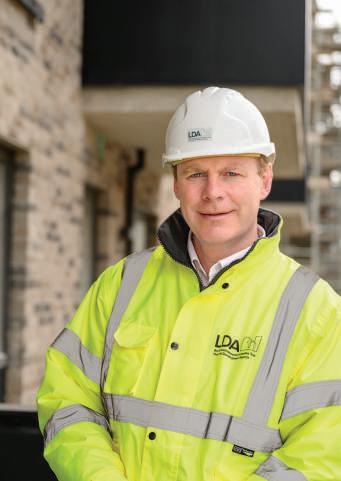


• Display advertising
• Branded-style advertorial articles
• Front cover profile interview • Sponsorship of the magazine • Round table features
For more information or if you would like to book advertising, please contact
Tobin on +353 (0)1 661 3755 or sam.tobin@eolasmagazine.ie
